Publications
Take a look at our recent peer-reviewed publications or book chapters!2023
Rational Positioning of Metal Ions to Stabilize Open Tin Sites in Beta Zeolite for Catalytic Conversion of Sugars 04-05-2023
Via hydrothermal synthesis of Sn-Al gels, mild dealumination and ion exchange, a bimetallic Sn-Ni-Beta catalyst was prepared which can convert glucose to methyl lactate (MLA) and methyl vinyl glycolate (MVG) in methanol at yields of 71.2 % and 10.2 %, respectively. Results from solid-state magic-angle spinning nuclear magnetic resonance, X-ray photoelectron spectroscopy, transmission electron microscopy, spectroscopic analysis, probe-temperature-programmed desorption, and density functional theory calculations conclusively reveal that the openness of the Sn sites, such as by the formation of [(SiO)3−Sn−OH] entities, is governed by an adjacent metal cation such as Ni2+, Co2+, and Mn2+. This relies on the low structure-defective pore channel, provided by the current synthesis scheme, and the specific silica hydroxyl anchor point is associated with the incorporation of Sn for additional and precise metal ion localization. The presence of metal cations significantly improved the catalytic performance of Sn-Ni-Beta for glucose isomerization and conversion to MLA of sugar compared with Sn-Beta.
How intermediate analysis inspires selectivity control for the catalytic reductive amination of carbohydrates toward ethylene polyamines 12-04-2023
The synthesis of bio-based amines via the catalytic reductive amination of carbohydrate-derived substrates has gained growing interest over the past few years. However, research has mainly been directed to ethanolamine formation, while industrially relevant ethylene polyamines have received less attention. Here, we report the selective synthesis of such polyamines via the catalytic reductive amination of sugar-derived glycolaldehyde (GA) with diamine reagents. In an attempt to achieve high polyamine yields, three disruptive bottom-up strategies are proposed. Firstly, using a diol solvent, such as ethylene glycol, enhances the dehydration rate and favorably affects the chemical equilibrium. Secondly, the formation of several by-products is circumvented by separating the amination from the hydrogenation step, following a one-pot-two-step procedure. Thirdly, carboxylic acids, such as oxalic acid, catalyze the keto-enol tautomerization reaction prior to polyamine formation. Integrating these strategies in one general procedure yields unique ethylene polyamines from GA and various diamine reagents, exceeding 80C% product yield.
From tetroses to methionine hydroxy analogues through Sn (IV) Lewis acid catalysis using methanethiol as sulphur feedstock 04-04-2023
Methionine hydroxy analogues (MHAs) form part of a million tonne scale commodity market of compounds useful in livestock nutrition. The chemocatalytic synthesis of MHAs from carbohydrates is an important albeit understudied transformation en route to a sustainable and circular economy. Here we report our first results for the conversion of tetroses to MHAs in the presence of methanethiol (MeSH) and SnCl4·5H2O. Our study allowed to corroborate the major reaction pathways involved in this Lewis acid-catalysed transformation. It was also found that the ratio between MeSH and MeOH, the pressure of inert gas, and the water content strongly affect the reaction performance. When these parameters were combined the yield and selectivity towards MHAs increased to the highest reported value of 38 %in one hour reactions at 413 K. Our findings have the potential to unlock the sustainable synthesis of MHAs from renewable feedstock such as tetroses and other carbohydrates.
Elucidating the effect of the physicochemical properties of organosolv lignins on its solubility and reductive catalytic depolymerization 01-04-2023
Unsatisfactory solubility and recalcitrant condensed structures of isolated lignins (technical lignins) severely limit their processability into renewable materials, fuels, and chemicals. Therefore, a comprehensive understanding of the structural and physicochemical properties of isolated lignins is of great value in explaining their performance in the solubilization and further depolymerization to high-value applications. In this work, we investigated the solubilization and depolymerization performance of organosolv lignins from three different sources (beech (L01), birch (L02), and wheat straw (L03)). We applied sequential solvent fractionation as a tool to subdivide parent lignins into four more homogeneous subfractions (SF1, SF2, SF3, and IF), with a gradual increase in molecular weight and interunit linkages and a decrease in phenolic –OH group from SF1 to IF. The solubility tests of the parent lignins and their subfractions at ambient conditions were carried out in six organic solvents (n-hexane, diisopropyl ether, ethyl acetate, ethanol, methanol, and acetone) with large differences in Hansen solubility parameters. Among the solvents studied, the solvents with δp > 8 MPa1/2 demonstrated a high solubilization yield of organosolv parent lignins and their subfractions. The solubilization behavior of parent lignins and subfractions was further described based on their inherent structural properties, such as molecular weight and functional group content (phenolic –OH and –COOH). The structure–reactivity characteristics of parent organosolv lignin and their subfractions were also investigated under different conditions in the presence of catalyst-containing transition (NiHTC-500) and noble (Pd/C) metals as active centers. Strongstructural correlations between parent lignin/subfractions and depolymerized lignin oils were derived using GC-FID/MS, GPC, 1H–13C HSQC NMR, and 31P NMR.
The Future Biorefinery: The Impact of Upscaling the Reductive Catalytic Fractionation of Lignocellulose Biomass on the Quality of the Lignin Oil, Carbohydrate Products, and Pulp 28-03-2023
After a decade of intensive mostly lab-scale research on reductive catalytic fractionation (RCF), this manuscript aims to promote RCF’s further advancement toward higher technology readiness levels (TRL). Three RCF biorefinery variations in different solvent and temperature conditions were studied on three reactor types for their impact of upscaling (from 100 mL to 50 L) on the quality of the lignin oil, carbohydrate products, and pulp. Comprehensive analysis of the products shows minor changes that can be explained by inherent differences of the setup on larger scales (such as heating/cooling cycles, etc.). For example, a similarly high delignification (with similar monoaromatic yield) was obtained for each variation regardless of scale. In addition, a comparable pulp yield and similar soluble carbohydrate products yields were obtained for each variation with no influence of the scale. Repetitions at 100 mL and 2 L demonstrated the reproducibility of all RCF variations. Overall, this study shows the scalability potential of RCF biorefining, which seems ready for pilot, demonstration, or commercial scale process integration and development.
Tertiary Amines from RCF Lignin Mono-and Dimers: Catalytic N-Functionalized Antioxidants from Wood 16-03-2023
Functionalization of bio-based aromatics offers an appealing opportunity toward a renewable way of fulfilling our current needs for chemicals and materials. Here, an atom-efficient Cu-catalyzed hydrogen borrowing strategy is presented, which successfully functionalizes aliphatic alcohols in aromatic monomers and dimers, derived from lignin by the reductive catalytic fraction (RCF), into tertiary dimethylamines. Kinetic experiments and ToF-SIMS analysis of the supported copper catalyst demonstrated a reduced catalytic activity for monomeric methoxyphenolics, such as guaiacol and syringols, relative to phenolic and nonphenolic model compounds. This is explained by the formation through demethylation and the adsorption of strong coordinating catechol species. The nature of the catalyst support proved to be key to cope with the catechol deactivation and keep high catalytic activity, with Cusupported on SiO2 outperforming earlier reported Cu-ZrO2.The hydrogen borrowing method was extended to real spruce wood-derived RCF lignin oil fractions, containing both phenolic mono- and oligomers. Special effort was done to identify the composition and molecular structure of the resulting phenolic dimer amines by GC × GC-TOF/MS and 1H-13C-NMR techniques. The stable lignin-derived tertiary amines displayed excellent antioxidant activity during an ABTS assay, highlighting the added value of the products obtained by the hydrogen borrowing upgrading strategy.
Decreasing the Crystallinity and Degree of Polymerization of Cellulose Increases Its Susceptibility to Enzymatic Hydrolysis and Fermentation by Colon Microbiota 04-03-2023
Cellulose can be isolated from various raw materials and agricultural side streams and might help to reduce the dietary fiber gap in our diets. However, the physiological benefits of cellulose upon ingestion are limited beyond providing fecal bulk. It is barely fermented by the microbiota in the human colon due to its crystalline character and high degree of polymerization. These properties make cellulose inaccessible to microbial cellulolytic enzymes in the colon. In this study, amorphized and depolymerized cellulose samples with an average degree of polymerization of less than 100 anhydroglucose units and a crystallinity index below 30% were made from microcrystalline cellulose using mechanical treatment and acid hydrolysis. This amorphized and depolymerized cellulose showed enhanced digestibility by a cellulase enzyme blend. Furthermore, the samples were fermented more extensively in batch fermentations using pooled human fecal microbiota, with minimal fermentation degrees up to 45% and a more than eight-fold increase in short-chain fatty acid production. While this enhanced fermentation turned out to be highly dependent on the microbial composition of the fecal pool, the potential of engineering cellulose properties to increased physiological benefit was demonstrated.
Toward a hydrogen-free reductive catalytic fractionation of wheat straw biomass 18-01-2023
The reductive catalytic fractionation (RCF) is an attractive method for the conversion of lignin toward valuable low-molecular weight aromatics during the pretreatment of lignocellulosic biomass. A prominent limitation to the upscaling of such technology is represented by the use of pressurized hydrogen gas. In this contribution, the role of hydrogen gas within the RCF of wheat straw biomass is investigated. The use of H2 was shown to enhance lignin depolymerization, by virtue of an improved hydrogenolysis and hydrogenation of lignin fragments, with a yield of phenolic monomers that increased from ~12 wt% of acid-insoluble lignin in the initial biomass under inert atmosphere, up to ~25 wt% under H2, for a reaction in methanol, at 250 °C, with Ru/C. The adoption of methanol, ethanol and isopropanol as hydrogen-donor solvents was also investigated in the absence of H2, and the use of ethanol was found to give the highest yield of monophenolics (up to ~20 wt%) owing to a better balance between solvolysis, hydrogenolysis, and hydrogenation of lignin. Nevertheless, a substantial loss of the carbohydrate fraction was observed for reactions performed at 250 °C, irrespective of hydrogen pressure and of the solvent employed. The use of a lower temperature of 200 °C in combination with H3PO4 resulted in an improved recovery of cellulose in the pulp and in the solubilization of hemicellulose and lignin, with the formation of monosaccharides (~14 wt% of polysaccharides in the initial biomass) and phenolic monomers (up to 18 wt%, in the absence of H2). Overall, the obtained results show that a tradeoff exists between the removal of H2 from the process and the production of low-MW phenolics during RCF, which can be improved by accurately tuning the process conditions.
Tuning Copper Active Site Composition in Cu-MOR through Co-Cation Modification for Methane Activation 18-01-2023
The industrial implementation of a direct methane-to-methanol process would lead to environmental and economic benefits. Copper zeolites successfully execute this reaction at relatively low temperatures, and mordenite zeolites in particular enable high methanol production. When loaded to a Cu/Al ratio of 0.45, mordenite (Si/Al 5–9) has been shown to host three active sites: two [CuOCu]2+ sites labeled MOR1 and MOR2 and a mononuclear [CuOH]+ site. Also at low copper loadings (Cu/Al < 0.20), mordenite has been demonstrated to activate methane, but its active site has never been reported. Here, we investigate Na+ mordenite with varying copper loadings to better understand copper speciation in mordenite. At low copper loadings, we uncover an unidentified active site (“MOR3”) with a strong overlap with the [CuOH]+ site’s spectroscopic signal. By changing the co-cation, we selectively speciate more MOR3 relative to [CuOH]+, allowing its identification as a [CuOCu]2+ site. Active site identification in heterogeneous catalysts is a frequent problem due to signal overlap. By changing cation composition, we introduce an innovative method for simplifying a material to allow better analysis. This has implications for the study of Cu zeolites for methane-to-methanol and NOx catalysis, but also for studying and tuning heterogeneous catalysts in general.
Extraction of monophenols and fractionation of depolymerized lignin oil with nanofiltration membranes 15-01-2023
Organic solvent nanofiltration membranes were employed to fractionate birch derived reductive catalytic fractionated (RCF) lignin oil. This lignin
oil is highly depolymerized, with most, if not all chemical compounds lighter than 3 kDa. Sixteen commercially available membranes were
investigated for the fractionation, in combination with methanol and ethyl acetate as solvents. Membrane performances were quantified using
Gaussian fits of gel permeation chromatograms and separation factor calculations. The separation factor was found to be primarily based on
affinities instead of size-exclusion. The silicon-based membranes from Borsig (Germany) and PuraMem S600 from Evonik (UK) proved best at
separating lignin into different functional fractions, showing monomer separation factors up to 7.4 and providing a permeate fraction with 88 %
phenolic monomer purity. These membranes were further examined in batch diafiltration and two-stage filtration. This increased the separation factor from 7.4 to 25.4, and the monomer purity of the permeate to 95 %, proving that membrane purification of the lignin-derived monophenols is technically feasible.
2022
Consider lignin's hydroxyl groups content and type, its molecular weight and content when converting it into epoxy resin 29-12-2022
Lignin's natural phenolic structure makes it an attractive candidate for synthesizing bio-based epoxy resin. In the popular direct glycidylation route, finding the most suitable lignin has considerable importance. Hence, two key factors of lignin—molecular weight distribution and hydroxyl groups content—are discussed in this review. The relation of lignin's type and its content in the substrate of glycidylation on cured epoxy networks is also evaluated. Based on accurate determination, lignins with high total OH content, especially high phenolic OH content, are better candidates for epoxy resin, while lignins with high molecular weight and dispersity may not be the best choice. Modification of lignin on OH functionality or combination with other OH suppliers could also be beneficial. Comparatively speaking, lignin bio-oil, especially reductive catalytic fractionation (RCF) lignin, with its distinctive liquid form, tunable molecular weight distribution, high OH functionality and relatively well-defined molecular structure, tends to display a higher potential as a sustainable and safe alternative for epoxy resins.
Unleashing lignin potential through the dithionite-assisted organosolv fractionation of lignocellulosic biomass 15-12-2022
The development of biomass pretreatment approaches that, next to (hemi)cellulose valorization, aim at the conversion of lignin to chemicals is essential for the long-term success of a biorefinery. Herein, we discuss a dithionite-assisted organosolv fractionation (DAOF) of lignocellulose in n-butanol and water to produce cellulosic pulp and mono-/oligo-aromatics. The study frames the technicalities of this biorefinery process and relates them to the features of the obtained product streams. We comprehensively identify and quantify all products of interest: solid pulp (acid hydrolysis-HPLC, ATR-FTIR, XRD, SEM, enzymatic hydrolysis-HPLC), lignin derivatives (GPC, GC–MS/FID, 1H–13C HSQC NMR, ICP-AES), and carbohydrate derivatives (HPLC). These results were used for inspecting the economic feasibility of DAOF. In the best process configuration, a high yield of mono-phenolics was reached (~20 wt%, based on acid insoluble lignin in birch sawdust). Various other lignocellulosic feedstocks were also explored, showing that DAOF is particularly effective on hardwood and herbaceous biomass. Overall, this study demonstrates that DAOF is a viable fractionation method for the sustainable upgrading of lignocellulosic biomass.
Rational Positioning of Metal Ions to Stabilize Open Tin Sites in Beta Zeolite for Catalytic Conversion of Sugars 07-12-2022
Via hydrothermal synthesis of Sn-Al gels, mild dealumination and ion exchange, a bimetallic Sn-Ni-Beta catalyst was prepared which can convert glucose to methyl lactate (MLA) and methyl vinyl glycolate (MVG) in methanol at yields of 71.2 % and 10.2 %, respectively. Results from solid-state magic-angle spinning nuclear magnetic resonance, X-ray photoelectron spectroscopy, transmission electron microscopy, spectroscopic analysis, probe-temperature-programmed desorption, and density functional theory calculations conclusively reveal that the openness of the Sn sites, such as by the formation of [(SiO)3−Sn−OH] entities, is governed by an adjacent metal cation such as Ni2+, Co2+, and Mn2+.This relies on the low structure-defective pore channel, provided by the current synthesis scheme, and the specific silica hydroxyl anchor point is associated with the incorporation of Sn for additional and precise metal ion localization. The presence of metal cations significantly improved the catalytic performance of Sn-Ni-Beta for glucose isomerization and conversion to MLA of sugar compared with Sn-Beta.
Environmental impact assessment of cascading use of wood in bio-fuels and bio-chemicals 01-11-2022
Cascading keeps wood in products for a longer duration and delays the embedded biogenic carbon emission. Carbon is kept out of the atmosphere for longer, giving forests time to sequester equivalent amounts of carbon. The storage period and time needed to sequester the same amount of carbon affect the GWP - an aspect often overlooked in LCA. This study compares alternative wood cascading scenarios producing biochemicals and fuel – to examine the influence of the rate of biogenic carbon flows on the net GWP of cascading systems. GWP decreases with increasing cascade steps. Benefits are higher when considering the temporal information – highlighting that current carbon accounting may underestimate the climate benefit of cascading. The GWP of bio-refinery products depends on their feedstock. GWP is lower when using waste wood, which has served a long time, instead of virgin wood. Benefits enlarge by extending the application lifetimes of these products.
Methane Activation by a Mononuclear Copper Active Site in the Zeolite Mordenite: Effect of Metal Nuclearity on Reactivity 11-10-2022
The direct conversion of methane to methanol would have a wide reaching environmental and industrial impact. Copper-containing zeolites can perform this reaction at low temperatures and pressures at a previously defined O2-activated [Cu2O]2+ site. However, after autoreduction of the copper-containing zeolite mordenite and removal of the [Cu2O]2+ active site, the zeolite is still methane reactive. In this study, we use diffuse reflectance UV–vis spectroscopy, magnetic circular dichroism, resonance Raman spectroscopy, electron paramagnetic resonance, and X-ray absorption spectroscopy to unambiguously define a mononuclear [CuOH]+ as the CH4 reactive active site of the autoreduced zeolite. The rigorous identification of a mononuclear active site allows a reactivity comparison to the previously defined [Cu2O]2+ active site. We perform kinetic experiments to compare the reactivity of the [CuOH]+ and [Cu2O]2+ sites and find that the binuclear site is significantly more reactive. From the analysis of density functional theory calculations, we elucidate that this increased reactivity is a direct result of stabilization of the [Cu2OH]2+ H-atom abstraction product by electron delocalization over the two Cu cations via the bridging ligand. This significant increase in reactivity from electron delocalization over a binuclear active site provides new insights for the design of highly reactive oxidative catalysts.
Decreasing the degree of polymerization of microcrystalline cellulose by mechanical impact and acid hydrolysis 14-07-2022
Depolymerization of cellulose is often used as a (pre)treatment protocol within the catalytic valorization strategies of cellulose. Typical depolymerization protocols yield polymerization degrees above 70 anhydroglucose units (AGU). However, shorter cellulose fibers are of interest in the search for accessible dietary fiber additives or renewable materials with distinct mechanical properties (bio-composites). In this work, short-polymer microcrystalline celluloses (SMCC) with an average polymerization degree between 29 and 70 AGU were produced with material yields of 95 % and above by combining a planetary ball mill pretreatment with mild acid hydrolysis. By first decreasing the levelling–off degree of polymerization (LODP) with an intensive ball mill treatment, a mild acid hydrolysis protocol was sufficient to ensure high yields of SMCC. Furthermore, the desired polymerization degree could be obtained by tuning the process parameters.
Branched Fatty Acids: The Potential of Zeolite Catalysis 25-04-2022
Isostearic acid, a C18 saturated branched chain fatty acid containing one or more methyl or ethyl groups on the carbon chain, is of great interest for the oleochemical industry due to its interesting physicochemical properties. Its current industrial production, as a side product of the acid clay catalyzed dimerization of unsaturated fatty acids, lacks efficiency. Therefore, research focuses strongly on new catalytic systems based on zeolites. Significantly higher yields of branched fatty acids can be obtained using zeolites, demonstrating their superiority compared to acid clay catalysts. Despite previous efforts, there is insufficient insight in the product itself and the catalytic system to use it optimally. With this knowledge, it would, however, be possible to tune zeolite catalysts to meet predetermined product compositions and thus application characteristics. This perspective aims to provide the knowledge required to get a profound insight in the current state-of-the-art while pointing at remaining questions and challenges. Focus is on the reaction mechanisms taking place during reaction, the analysis of the reaction product and the zeolite catalysts themselves.
Catalytic hydroconversion of 5‐HMF to value‐added chemicals: insights into the role of catalyst properties and feedstock purity 25-04-2022
5-hydroxymethylfurfural (HMF) is an important bio-derived platform molecule that is generally obtained from hexoses via acid-catalyzed dehydration. It can be effectively transformed into a variety of value-added derivatives thus being an ideal candidate for fossil replacement. Both HMF oxidation and hydrogenation processes enable the synthesis of numerous chemicals, monomers for polymerization and biofuel precursors. This review summarizes the most recent advances in heterogeneous catalytic hydroconversion of HMF into valuable chemicals with strong focus on 2,5-bishydroxymethyl furan (BHMF), 2,5-bishydroxymethyltetrahydrofuran (BHMTHF), and 2,5-dimethyltetrahydrofuran (DMTHF). In addition, multifunctional catalytic systems that enable a tunable production of various HMF derived intermediates are discussed. Within this chemistry, the surprising impact of HMF purity on the catalytic performance, viz . selectivity and activity, during its upgrading is highlighted. Lastly, we summarize and discuss the remaining challenges in the field of HMF hydroconversion to mentioned chemicals, taking into account the knowledge gain of catalyst properties and feedstock purity.
Exergy sustainability analysis of biomass gasification: a critical review 25-04-2022
Biomass gasification technology is a promising process to produce a stable gas with a wide range of applications, from direct use to the synthesis of value-added biochemicals and biofuels. Due to the high capital/operating costs of the technology and the necessity for prudent management of thermal energy exchanges in the biomass gasification process, it is important to use advanced sustainability metrics to ensure that environmental and other sustainability factors are addressed beneficially. Consequently, various engineering techniques are being used to make decisions on endogenous and exogenous parameters of biomass gasification processes to find the most efficient, viable, and sustainable operations and conditions. Among available approaches, exergy methods have attracted much attention due to their scientific rigor in accounting for the performance, cost, and environmental impact of biomass gasification systems. Therefore, this review is devoted to critically reviewing and numerically scrutinizing the use of exergy methods in analyzing biomass gasification systems. First, a bibliometric analysis is conducted to systematically identify research themes and trends in exergy-based sustainability assessments of biomass gasification systems. Then, the effects of biomass composition, reactor type, gasifying agent, and operating parameters on the exergy efficiency of the process are thoroughly investigated and mechanistically discussed. Unlike oxygen, nitrogen, and ash contents of biomass, the exergy efficiency of the gasification process is positively correlated with the carbon and hydrogen contents of biomass. A mixed gasifying medium (CO2 and steam) provides higher exergy efficiency values. The downdraft fixed-bed gasifier exhibits the highest exergy efficiency among biomass gasification systems. Finally, opportunities and limitations of exergy methods for analyzing sustainability aspects of biomass gasification systems are outlined to guide future research in this domain.
Preparation of Renewable Thiol-yne "Click" Networks Based on Fractionated Lignin for Anticorrosive Protective Films Applications 30-03-2022
The synthesis of novel, renewable lignin-based protective films with anticorrosive properties is presented in this work. Thermosetting films are prepared by means of tandem UV-initiated thiol-yne “click” synthesis and Claisen rearrangement strategy. These films contain high lignin loading, 46–61%, originating from a nickel-catalyzed birch wood reductive catalytic fractionation (RCF) process. Lignin fractions with varying monomer content are compared before resins preparation, namely a mixture of monomers and oligomers without fractionation, or after fractionation via extraction and membrane separation. This study aims to determine if the separation of lignin monomers and oligomers is necessary for the application as a thermosetting resin. The resulting films exhibit remarkable adhesion to a metal surface and excellent solvent resistance, even after exposure to a corrosive environment. Moreover, those films show superior barrier properties, studied with odd random phase electrochemical impedance spectroscopy (ORP EIS). After 21 days of exposure, the examined films still show impressive high corrosion protection with the low-frequency impedance ≈1010 Ω cm2 and capacitive behavior. This work demonstrates an interesting proof-of-concept where laborious, costly, and energy-intensive separation of the depolymerized lignin mixture of monomers and oligomers is not necessary for the successful resin synthesis with excellent properties using the applied synthetic strategy.
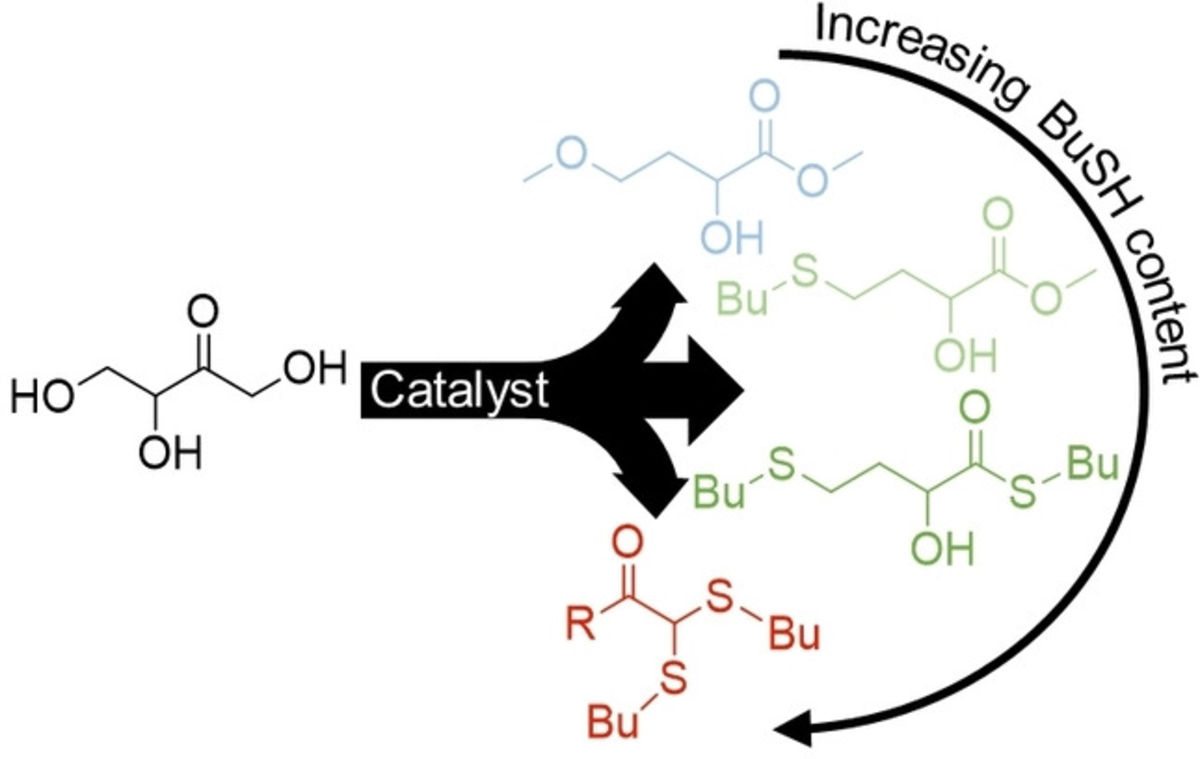
Establishing the reaction pathways of the catalytic conversion of erythrulose to sulphides of alpha‐hydroxy thioesters and esters 30-03-2022
We studied the Lewis acid catalyzed conversion of erythrulose to sulphides of alpha-hydroxy thioesters and esters (SAH(T)Es). The addition of KOH, H2O or MeOH to the reaction mixture increased the selectivity towards SAH(T)Es by decreasing the thioacetalization side-reactions. Our findings allowed to propose a reaction pathway that unravels the reaction network with placement of the most important intermediates and products of the reaction cascade.
Second-Sphere Lattice Effects in Copper and Iron Zeolite Catalysis 30-03-2022
Transition-metal-exchanged zeolites perform remarkable chemical reactions from low-temperature methane to methanol oxidation to selective reduction of NOx pollutants. As with metalloenzymes, metallozeolites have impressive reactivities that are controlled in part by interactions outside the immediate coordination sphere. These second-sphere effects include activating a metal site through enforcing an “entatic” state, controlling binding and access to the metal site with pockets and channels, and directing radical rebound vs cage escape. This review explores these effects with emphasis placed on but not limited to the selective oxidation of methane to methanol with a focus on copper and iron active sites, although other transition-metal-ion zeolite reactions are also explored. While the actual active-site geometric and electronic structures are different in the copper and iron metallozeolites compared to the metalloenzymes, their second-sphere interactions with the lattice or the protein environments are found to have strong parallels that contribute to their high activity and selectivity.
Kinetics of fatty acid ketonization in liquid phase with anatase and rutile TiO2 catalysts 30-03-2022
Catalytic ketonization of carboxylic acids is promising for the synthesis of renewable products. Despite its potential, fatty acid ketonization and its kinetics in the liquid phase are less investigated. This work encompasses kinetic evaluation of two TiO2 catalysts (anatase and rutile) for C-C coupling of C12-C18 fatty acids in inert dodecane solvent. The rutile catalyst, with higher Lewis acid density, showed higher intrinsic activity and more favorable activation energy barriers. Unfortunately, this material suffers from stronger product inhibition by ketone, water and carbon dioxide compared to anatase. Langmuir-Hinshelwood kinetic models were developed and validated against the experimental data, supporting that C-C coupling of adsorbed species is rate determining in the ketonization mechanism. The Lewis acid site density and distance between active Ti species at the surface were invoked to explain the activity patterns. The impacts of substrate chain length, solvent and liquid phase purging on the ketonization kinetics were investigated, showcasing potential for future improvements.
Identification and quantification of lignin monomers and oligomers from reductive catalytic fractionation of pine wood with GC × GC–FID/MS 11-01-2022
Thorough lignin characterization is vital to understand the physicochemical properties of lignin and to evaluate lignocellulose biorefinery processes. In this study, an in-depth characterization of lignin oil, obtained from reductive catalytic fractionation (RCF) of pine wood, was performed with quantitative GC × GC – FID analysis and qualitative GC × GC – MS. By utilizing high-temperature resistant column sets in the GC × GC system and by applying a derivatization step, unambiguous detection of lignin monomers, dimers, and trimers is enabled. In addition to confirm the identity of eleven monomers, corresponding to 34 wt% of the RCF lignin oil, thirty-six dimers (16 wt%) and twenty-one trimers (7 wt%) were comprehensively identified by analysis of their mass spectra and quantified by a FID, encompassing the identity of an additional 23 wt% of the RCF lignin oil. The proposed structures reveal the interlinkages present in the dimeric and trimeric oligomers, containing β-5, β-1, β–β, 5–5, and a minor fraction of β-O-4 and 4-O-5 bonds. Furthermore, aliphatic end-units in the dimeric and trimeric molecules were identified, consisting of various substituents at the C4 position, that have been previously observed in the RCF-derived lignin monomers. To reduce complexity for analysis, the RCF oil was separated into six fractions, prior to analysis. The structural motifs (inter-unit linkages and end-units) that are found in the different fractions vary significantly, such that the lignin fractions extracted in more polar solvents contained higher molecular weight fragments and more hydroxyl containing structural motifs. The identified structures of individual dimer and trimer molecules by GC × GC align well with and further complement the recent findings from 1H–13C HSQC NMR spectroscopy, demonstrating complementarity between both 2D techniques to obtain a holistic view on both the molecular structures and the distribution of bonds and end-units in RCF oil. The combination of these two techniques provides a powerful tool for future RCF and other lignin depolymerization research.
Lignin-First Monomers to Catechol: Rational Cleavage of C-O and C-C Bonds over Zeolites 03-01-2022
We report a catalytic route to synthesize bio-renewable catechol from softwood derived lignin-first monomers. This process concept consists of two steps: 1) O -demethylation of 4- n -propylguaiacol (4-PG) over acidic Beta zeolites in hot pressurized liquid water delivering 4- n -propylcatechol (4-PC); 2) gas phase C -dealkylation reaction of 4-PC providing catechol and propylene over acidic ZSM-5 zeolites in the presence of water. With large pore sized Beta-19 zeolite as catalyst, 4-PC was formed with more than 93% selectivity at nearly full conversion of 4-PG. The acid-catalyzed C -dealkylation over ZSM-5 zeolite with medium pore size gave catechol yield of 75%. Overall, around 70% catechol yield can be obtained from pure 4-PG, or 56% when starting from crude 4-PG monomers obtained from softwood via lignin-first RCF biorefinery. The selective cleavage of functional groups from biobased platform molecules through a green and sustainable process highlights the potential to shift feedstock from fossil oil to biomass, providing drop ins for the chemicals industry.
2021
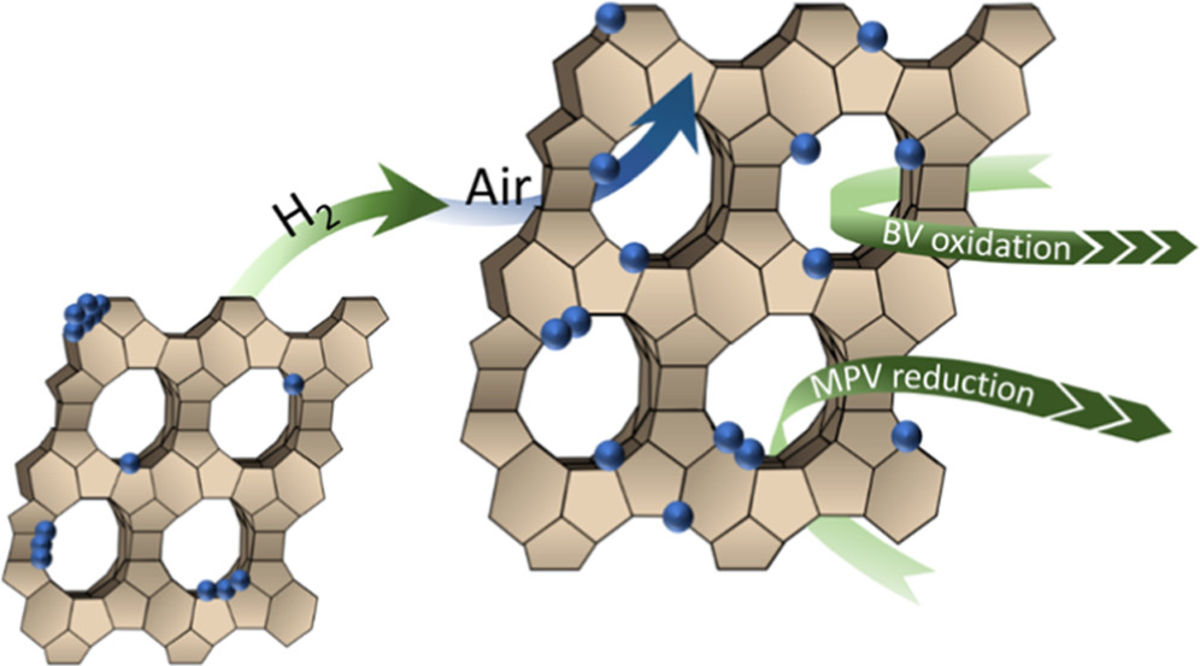
Tandem Reduction–Reoxidation Augments the Catalytic Activity of Sn-Beta Zeolites by Redispersion and Respeciation of SnO2 Clusters 09-12-2021
High dispersion of Sn in beta (β) zeolites is pivotal to obtain highly active Snβ catalysts with high productivity. However, at higher Sn loadings, Sn dispersion and the activity per Sn decrease. The present work highlights the augmentation of catalytic activity in the Baeyer–Villiger oxidation and Meerwein–Ponndorf–Verley reactions of the as-synthesized Snβ catalysts with Sn loadings of up to 10 wt % by tandem reduction–reoxidation and discusses the effect in terms of Lewis acid (LA) density, Sn dispersion, Sn speciation, and catalytic performance. To do so, nontreated, reduced, and reduced–reoxidized Snβ catalysts are characterized by N2 physisorption, X-ray diffraction (XRD), and a multitude of spectroscopic techniques such as temperature-programmed reduction-mass spectrometry (TPR-MS), probe Fourier transform infrared (FTIR), diffuse reflectance ultraviolet–visible (DRUV–vis), 119Sn Mössbauer, 119Sn magic angle spinning nuclear magnetic resonance (MAS NMR), inductively coupled plasma-atomic emission spectroscopy (ICP-AES), and X-ray photoelectron spectroscopy (XPS). Although not mutually exclusive, the higher catalytic activity seems to arise from different phenomena depending on the Sn loading. At a lower Sn content (<5 wt %), the higher activity arises from the redispersion of SnO2 clusters into smaller active Sn species, whereas at a higher Sn content (≥5 wt %), the catalytic activity seems to improve based on the respeciation of SnO2 clusters.
Supported MoOx and WOx Solid Acids for Biomass Valorization: Interplay of Coordination Chemistry, Acidity, and Catalysis 03-11-2021
Supported molybdenum oxide (MoOx) and tungsten oxide (WOx) materials are a vital class of solid acid catalysts for the chemical industry because of their nontoxic nature, strong acidity, remarkable stability in water, hydrogen, and oxygen atmospheres, and excellent reusability performance. These fascinating solid acids play a pivotal role in developing sustainable catalytic routes for renewable biomass processing to produce value-added fuels, chemicals, and platform molecules. The coordination chemistry of MoOx and WOx on the support materials (oxides, carbons, or zeolites) controls their acidic strength, active site accessibility, and catalytic activity. Hence, significant efforts have been made toward optimizing the conditions used for catalyst synthesis and biomass processing to tune the coordination chemistry of MoOx and WOx with the substrate molecules and, thus, their acid-activity/selectivity performance. This Review provides a comprehensive overview of supported MoOx and WOx solid acids for biomass valorization. The importance of the biomass and the role of solid acids for biomass valorization were emphasized, followed by a brief discussion of supported MoOx and WOx solid acids. Afterward, the interplay of coordination chemistry, acidic strength, and catalytic activity of supported MoOx and WOx solid acids was discussed. Finally, their catalytic applications for the valorization of several biomass substrates and their derivatives were summarized. This review will provide valuable insights for developing advanced supported WOx and MoOx solid acids for catalytic biomass valorization and other challenging acid-catalyzed processes.
Suppressing Dormant Ru States in the Presence of Conventional Metal Oxides Promotes the Ru-MACHO-BH-Catalyzed Integration of CO2 Capture and Hydrogenation to Methanol 25-10-2021
Integrated CO2 capture and hydrogenation to methanol may replace fossil resources for production of clean fuels, chemicals, and materials. As opposed to the classic concept of lowering the transition state barriers in the rate determination step, here we demonstrate that suppression of a resting state species can also be a viable approach to accomplish catalytic improvement. As a promising NH/M bifunctional molecular catalyst for integrated CO2 capture and conversion to methanol, Ru-MACHO-BH in the presence of amine additives was evaluated in the presence of a second catalyst, preferably ZnO. The latter is capable of suppressing the Ru-formate resting state intermediate by accelerating formate to formamide formation. This strategy is capable of advancing methanol formation and CO2 conversion, adding up to 100 and 294 turnover numbers, respectively, under mild operational conditions. Operando high-pressure ATR-IR spectroscopy evidenced the existence of such Ru-formate resting state species in the presence of amine additives and its disappearance upon addition of ZnO under catalytic conditions. Given that metal oxide enhances the amide bond formation rate, but has insignificant activity in catalytic hydrogenation of CO2 and the formamide intermediate, its promoting effect can be fully ascribed to an increased availability of the active Ru-dihydride species upon suppressing the dormant Ru-formate catalyst intermediate.
Selective Formation of α-Fe (II) Sites on Fe-Zeolites through One-Pot Synthesis 25-10-2021
α-Fe(II) active sites in iron zeolites catalyze N2O decomposition and form highly reactive α-O that selectively oxidizes unreactive hydrocarbons, such as methane. How these α-Fe(II) sites are formed remains unclear. Here different methods of iron introduction into zeolites are compared to derive the limiting factors of Fe speciation to α-Fe(II). Postsynthetic iron introduction procedures on small pore zeolites suffer from limited iron diffusion and dispersion leading to iron oxides. In contrast, by introducing Fe(III) in the hydrothermal synthesis mixture of the zeolite (one-pot synthesis) and the right treatment, crystalline CHA can be prepared with >1.6 wt % Fe, of which >70% is α-Fe(II). The effect of iron on the crystallization is investigated, and the intermediate Fe species are tracked using UV–vis-NIR, FT-IR, and Mössbauer spectroscopy. These data are supplemented with online mass spectrometry in each step, with reactivity tests in α-O formation and with methanol yields in stoichiometric methane activation at room temperature and pressure. We recover up to 134 μmol methanol per gram in a single cycle through H2O/CH3CN extraction and 183 μmol/g through steam desorption, a record yield for iron zeolites. A general scheme is proposed for iron speciation in zeolites through the steps of drying, calcination, and activation. The formation of two cohorts of α-Fe(II) is discovered, one before and one after high temperature activation. We propose the latter cohort depends on the reshuffling of aluminium in the zeolite lattice to accommodate thermodynamically favored α-Fe(II).
How Substituent Effects Influence the Thermodynamics and Kinetics of Gas-Phase Transesterification of Alkyl Lactates to Lactide using TiO2/SiO2 25-10-2021
Lactide, a crucial precursor of the bioplastic polylactic acid, was obtained through the gas-phase transesterification of alkyl lactates using a 5 wt% TiO2/SiO2 catalyst as an alternative to the conventional liquid-phase process. Lactide selectivity above 80% was achieved at 220 °C but conversion was thermodynamically limited at around 50% for all alkyl lactates. The nature of the ester alkyl chain had minimal impact of the thermodynamics of the reaction, but significantly influenced its kinetics. The Taft equation indicated that this kinetic effect was due to the polarity of the alkyl chain. Mechanistic studies indicated that lactide formed via a Langmuir-Hinshelwood mechanism involving two lactate molecules. The derived kinetic expression was fitted to experimental data of methyl lactate transesterification, resulting in a reduced chi-squared of 0.99 and an activation energy of 89.8 kJ·mol−1. Initial rate kinetics confirmed that the proposed mechanism was valid for other alkyl lactate species.
Lignin-Based Additives for Improved Thermo-Oxidative Stability of Biolubricants 25-10-2021
There is an environmental concern regarding the use of petroleum-based lubricants, which are generally toxic and nonbiodegradable. Biobased lubricants, such as vegetable oils, are the alternative: they show excellent lubricity, are readily biodegradable and nontoxic. However, a major disadvantage of using vegetable oils in lubricant applications is their lack of thermo-oxidative stability, which can be improved by antioxidant additives. Here, we propose the use of lignin-based additives in biolubricant formulations to improve this feature, based on lignin’s known antioxidant properties. To ensure a stable dispersion in vegetable oil, lignin was partially esterified. Antioxidant properties of lignin before and after palmitoylation were demonstrated in a 2,2-diphenyl-1-picrylhydrazyl (DPPH) assay. Four different lignin-based fractions, commercial Protobind P1000 soda lignin from straw, solvolytically fractionated Protobind P1000 lignin and two lignin fractions from reductively catalyzed fractionation (RCF) of native birch wood, were tested in biolubricant formulations with castor oil as base oil. Those lignin fractions exhibited excellent performance compared to butylated hydroxytoluene (BHT), a commonly used petroleum-based antioxidant. Formulations of modified lignin in castor oil possess improved thermo-oxidative stability, as illustrated by their increased oxidation induction time. Additionally, rheological and tribological tests demonstrate similar, or in some cases improved, lubricating properties compared to castor oil. This study showcases the successful incorporation of lignin-based antioxidants in biolubricant formulations, tackling the major disadvantage of vegetable oils as environment-friendly lubricants.
A Cooperative OSDA Blueprint for Highly Siliceous Faujasite Zeolite Catalysts with Enhanced Acidity Accessibility 25-10-2021
A cooperative OSDA strategy is demonstrated, leading to novel high-silica FAU zeolites with a large potential for disruptive acid catalysis. In bottom-up synthesis, the symbiosis of choline ion (Ch+) and 15-crown-5 (CE) was evidenced, in a form of full occupation of the sodalite (sod) cages with the trans Ch+ conformer, induced by the CE presence. CE itself occupied the supercages along with additional gauche Ch+, but in synthesis without CE, no trans was found. The cooperation, and thus the fraction of trans Ch+, was closely related to the Si/Al ratio, a key measure for FAU stability and acidity. As such, a bottom-up handle for lowering the Al-content of FAU and tuning its acid site distribution is shown. A mechanistic study demonstrated that forming sod cages with trans Ch+ is key to the nucleation of high-silica FAU zeolites. The materials showed superior performances to commercial FAU zeolites and those synthesized without cooperation, in the catalytic degradation of polyethylene.
Catalytic fast pyrolysis of beech wood lignin isolated by different biomass (pre) treatment processes: Organosolv, hydrothermal and enzymatic hydrolysis 25-10-2021
Lignin is one of the three main structural components of lignocellulosic biomass and is considered as the most abundant source of aromatic and phenolic compounds. Lignin is produced as side-stream in the pulp/paper industry or as residue in the production of second-generation bioethanol. More recently, novel biomass fractionation processes in biorefineries have been developed aiming at the production of high quality/purity lignin towards its more efficient down-stream catalytic conversion to chemicals, monomers, and fuels. Within this context, in this work, we studied the thermal (non-catalytic) and catalytic fast pyrolysis on a Py/GC–MS system and a fixed-bed reactor unit of three types of lignin, all originating from the same biomass (beech wood sawdust) but with different isolation processes: organosolv lignin derived by the organosolv pretreatment/fractionation of biomass, surface extracted lignin derived by the mild Soxhlet extraction (with ethanol or acetone) from the hydrothermally (HT) in pure water pretreated biomass, and the enzymatic hydrolysis lignin derived as a lignin-rich solid residue from the enzymatic hydrolysis of the HT pretreated biomass. Conventional microporous ZSM-5 and mesoporous ZSM-5 zeolites (with intracrystal mesopores, ˜ 9 nm) were used as catalysts in the pyrolysis experiments. Both zeolites were very active in converting the initially produced via thermal pyrolysis methoxy-substituted phenols, benzenes and benzaldehydes mainly towards BTX mono-aromatics, such as 1,3-dimethylbenzene/p- and o-xylenes, toluene and trimethylbenzenes, as well as polycyclic aromatic hydrocarbons (PAHs, mainly naphthalenes). The mesoporous ZSM-5 induced higher dealkoxylation reactivity compared to the microporous ZSM-5 leading to higher concentration of BTX aromatics without a consequent increase of PAHs. The pronounced dealkoxylation/aromatization reactivity of both ZSM-5 zeolites resulted to lower yields (but highly aromatic) organic bio-oils (e.g. from 32−35 wt.% to 15−22 wt.%) compared to thermal pyrolysis, increased non-condensable gases (mainly CO, CO2, methane, ethylene and propylene) and formation of relatively low amounts of coke on catalysts (e.g. 3−5 wt.% on lignin) in addition to thermal pyrolysis char. The observed moderate variations in the characteristics of the three types of beech wood lignin, i.e. molecular weight (GPC), S/G ratio, inter-unit linkages (2D HSQC NMR) and elemental composition, did not induce a systematic/substantial differentiation in the thermal and catalytic fast pyrolysis product yields and composition.
Cage effects control the mechanism of methane hydroxylation in zeolites 25-10-2021
Zeolite catalysis could potentially offer a more direct route from methane to methanol. However, current catalysts tend to deactivate too quickly for practical use. Snyder et al. investigated the deactivation mechanism using Mössbauer and Raman spectroscopy and accompanying simulations (see the Perspective by Scott). Their results suggest that in zeolites with large apertures, after iron active sites strip hydrogen from methane, the resulting methyl radicals can leak away and deactivate other iron centers. Zeolites with tighter apertures can keep the radicals nearby longer, favoring the formation of methanol.
How Trace Impurities Can Strongly Affect the Hydroconversion of Biobased 5-Hydroxymethylfurfural? 25-10-2021
Selective conversion of 5-hydroxymethylfurfural (HMF) to liquid fuels is an important step in the valorization of carbohydrates. Although not paid much attention to in the scientific community, we discovered an enormous impact of the HMF purity on the product selectivity during its hydroconversion in the presence of Ru/C. The presence of dimethyl sulfoxide (DMSO) showed the most dramatic effect on the aromatic hydrogenation activity, with almost full selectivity for either 2,5-dimethylfuran (DMF) or 2,5-dimethyltetrahydrofuran (DMTHF). The sulfur to surface ruthenium molar ratio predicts the selectivity outcome. A similar selective poisoning effect of DMSO was observed while using 2,5-bis(hydroxymethyl)furan (BHMF) as feedstock. These findings provide an approach to modify the selectivity of HMF conversion using the Ru/C catalyst and draw attention to the utmost importance of biobased reagent purity for catalytic studies to avoid erroneous conclusions about catalyst properties.
Metal Sulfide Photocatalysts for Lignocellulose Valorization 25-10-2021
Transition metal sulfides are an extraordinarily vital class of semiconductors with a wide range of applications in the photocatalytic field. A great number of recent advances in photocatalytic transformations of lignocellulosic biomass, the largest renewable carbon resource, into high-quality fuels and value-added chemicals has been achieved over metal sulfide semiconductors. Herein, the progress and breakthroughs in metal-sulfide-based photocatalytic systems for lignocellulose valorization with an emphasis on selective depolymerization of lignin and oxidative coupling of some important bioplatforms are highlighted. The key issues that control reaction pathways and mechanisms are carefully examined. The functions of metal sulfides in the elementary reactions, including CO-bond cleavage, selective oxidations, CC coupling, and CH activation, are discussed to offer insights to guide the rational design of active and selective photocatalysts for sustainable chemistry. The prospects of sulfide photocatalysts in biomass valorization are also analyzed and briefly discussed.
Toward Replacing Ethylene Oxide in a Sustainable World: Glycolaldehyde as a Bio‐Based C2 Platform Molecule 25-10-2021
Fossil-based platform molecules such as ethylene and ethylene oxide currently serve as the primary feedstock for the C2-based chemical industry. However, in the search for a more sustainable chemical industry, fossil-based resources may preferentially be replaced by renewable alternatives, provided there is realistic economic feasibility. This Review compares and critically discusses several production routes toward bio-based structural analogues of ethylene oxide and the required adaptations for their implementation in state-of-the-art C2-based chemical processes. For example, glycolaldehyde, a structural analogue obtainable from carbohydrates by atom-economic retro-aldol reactions, may replace ethylene oxide's leading role. This alternative chemical route may not only allow the carbon footprint of conventional chemicals production to be lowered, but the introduction of a bio-based pathway may also contribute to safer production processes. Where possible, challenges, drawbacks, and prospects are highlighted.
Spectroscopic Definition of a Highly Reactive Site in Cu-CHA for Selective Methane Oxidation: Tuning a Mono-μ-Oxo Dicopper (II) Active Site for Reactivity 25-10-2021
Using UV–vis and resonance Raman spectroscopy, we identify a [Cu2O]2+ active site in O2 and N2O activated Cu-CHA that reacts with methane to form methanol at low temperature. The Cu–O–Cu angle (120°) is smaller than that for the [Cu2O]2+ core on Cu-MFI (140°), and its coordination geometry to the zeolite lattice is different. Site-selective kinetics obtained by operando UV–vis show that the [Cu2O]2+ core on Cu-CHA is more reactive than the [Cu2O]2+ site in Cu-MFI. From DFT calculations, we find that the increased reactivity of Cu-CHA is a direct reflection of the strong [Cu2OH]2+ bond formed along the H atom abstraction reaction coordinate. A systematic evaluation of these [Cu2O]2+ cores reveals that the higher O–H bond strength in Cu-CHA is due to the relative orientation of the two planes of the coordinating bidentate O–Al–O T-sites that connect the [Cu2O]2+ core to the zeolite lattice. This work along with our earlier study ( J. Am. Chem. Soc, 2018, 140, 9236−9243) elucidates how zeolite lattice constraints can influence active site reactivity.
Highly Dispersed Sn-beta Zeolites as Active Catalysts for Baeyer–Villiger Oxidation: The Role of Mobile, In Situ Sn(II)O Species in Solid-State Stannation 25-10-2021
Solid-state incorporation of Sn into beta (β) zeolites is a fast and efficient method to obtain Lewis acidic Snβ catalysts with high activity. The present work emphasizes the fundamental role of the heat-treatment atmosphere in the solid-state incorporation of active Sn in zeolites. Via an array of characterization tools including N2-physisorption, X-ray diffraction, diffuse reflectance UV–vis spectroscopy, Fourier transform infrared spectroscopy, X-ray photoelectron spectroscopy, and 119Sn Mössbauer spectroscopy, it is shown that preheating under an inert atmosphere (pre-pyrolysis) prior to air-calcination affords Sn-β catalysts with the highest Sn dispersion and significantly less extra-framework SnO2 compared to the classic calcination. In situ characterization during pre-pyrolysis by temperature-programmed decomposition–mass spectrometry, thermogravimetric analysis, and 119Sn Mössbauer spectroscopy reveals the in situ generation of Sn(II)O species that are more mobile than Sn(IV)O2 species generated during calcination. This mobility property essentially enables the high Sn dispersion in Snβ. Based on this knowledge, active sites per catalyst weight are maximized while retaining high turn-over frequencies for the Baeyer–Villiger oxidation reaction (300 h–1 at 80 °C). For Lewis acid densities above 200 μmol·g–1, the catalytic activity unexpectedly leveled off to 93 mM·h–1, even under kinetic control. We tentatively ascribe the activity plateau to the incorporation of Sn in less favorable T-sites at high Sn-loadings.
Tree bark characterization envisioning an integrated use in a biorefinery 25-10-2021
Tree barks are considerable waste streams in forest industries, and a potentially interesting resource for biorefineries. Barks of six relevant tree species, namely poplar (Populus × canadensis), black locust (Robinia pseudoacacia), red oak (Quercus rubra), willow (Salix sp.), Corsican pine (Pinus nigra subsp. laricio), and larch (Larix decidua), were anatomically and chemically characterized. Anatomical analysis illustrated the structural heterogeneity of the different barks with occurrence of various cell types and their arrangement in phloem, periderm, and rhytidome. Summative chemical analysis showed a high extractive content (14–30 wt%) for all barks. Black locust bark presented a substantial suberin content (10 wt%). The lignin content was similar for most barks (22–29 wt%), except for Corsican pine bark (45 wt%). Analytical pyrolysis demonstrated that softwood bark lignin was mostly G type with a small amount of H units, whereas for hardwood species S, G, and H units were present, with low S/G ratios (0.3–0.7). The cell wall structural polysaccharides were rather low. Total monosaccharides ranged from 35 to 44 wt%, with glucose being predominant for almost all barks, followed by xylose in hardwood and mannose in softwood barks. Identification of the lipophilic extractives highlighted the predominance of resin acids for softwood barks, and fatty acids and triterpenoids for all barks. Analysis of the polar bark extracts revealed large variations in the content of phenolics (265–579 mg gallic acid equivalent/g extract), flavonoids (177–391 mg catechin equivalent/g extract), and condensed tannins (88–670 mg catechin equivalent/g extract). Furthermore, the polar extracts presented a high antioxidant potential (500–1209 mg trolox equivalent/g extract), as determined by the FRAP assay. Additionally, a very strong antioxidant activity (AAI > 2), as evaluated by the DPPH assay, was observed for all barks. In summary, the results highlight the marked anatomical and chemical interspecies variability in barks, thus suggesting the need for tailored biorefining approaches.
The RCF biorefinery: Building on a chemical platform from lignin 19-10-2021
Coordination and activation of nitrous oxide by iron zeolites 19-10-2021
Iron-containing zeolites are heterogeneous catalysts that exhibit remarkable activity in the selective oxidation of inert hydrocarbons and catalytic decomposition of nitrous oxide (N2O). The reduction of N2O is critical to both these functions, but experimental data tracking the iron active sites during N2O binding and activation are limited. Here, the N2O-ligated Fe(II) active site in iron-exchanged zeolite beta is isolated and characterized by variable-temperature Mössbauer, diffuse reflectance UV-vis-NIR and Fourier transform infrared spectroscopy. N2O binds through the terminal nitrogen atom with substantial backbonding from the Fe(II) centre at low temperature. At higher temperatures, the Fe–N2O interaction is weakened, facilitating isomerization to the O-bound form, which is competent in O-atom transfer. Density functional theory calculations show the geometric and electronic structure requirements for N2O binding and activation. A geometric distortion imposed by the zeolite lattice plays an important role in activating N2O. This highlights a mechanism for structural control over function in Fe-zeolite catalysts.
Catalytic advancements in carboxylic acid ketonization and its perspectives on biomass valorisation 19-10-2021
Ketonization of (biomass) carboxylic acids is increasingly showing its potential as upgrading strategy to renewable fuels and chemicals. Due to the growing amount of recent studies, an updated and critical overview of the catalytic advancements are warranted. Metal oxide and zeolite catalysts are discussed, alongside their proposed mechanisms and elementary steps. Substrate-surface interactions, structure-function correlations and kinetic studies have contributed to a better understanding of the requirements for ketonization catalysis, though the mechanism and rate-determining step(s) are still under debate. As a result, targeted modifications to improve catalytic performance are being established. Furthermore, substrate properties such as chain length, branching, unsaturation and additional functionalities have been identified as crucial for their reactivity. However, additional research is necessary to better integrate ketonization into future biorefineries. This includes development of kinetic models for oleochemicals conversion, catalyst design and regeneration. Finally, techno-economic and sustainability assessments are lacking to incentivize industrial implementation.
Fast and Selective Solvent-Free Branching of Unsaturated Fatty Acids with Hierarchical ZSM-5 19-10-2021
Branched fatty acids are of great interest in the oleochemical industry for many high-end applications due to their interesting physicochemical properties. In the last decades, research has focused mainly on the use of ferrierite (FER) as catalyst for the isomerization of fatty acids into these branched fatty acids. With the use of FER, high yields of branched fatty acids can be obtained. FER is however expensive, and additives are necessary to obtain a high selectivity toward branched fatty acids. In this letter, we focus on the use of ZSM-5, a much cheaper zeolite, which has been extensively studied in the past for other reactions. Five commercial ZSM-5 samples and one hierarchical ZSM-5 sample were tested for the isomerization of fatty acids into branched fatty acids. The results clearly show that the accessibility of Brønsted acid sites is of utmost importance for their catalytic activity. Thanks to the introduction of mesopores in the zeolite crystals of ZSM-5, creating a hierarchical zeolite, a superior catalyst was obtained with a multifold activity increase, without compromising in branched fatty acid selectivity, that is capable of competing against the state-of-the-art FER zeolite.
Single site spectroscopy of transition metal ions and reactive oxygen complexes in zeolites 19-10-2021
.
A guide towards safe, functional and renewable BPA alternatives by rational molecular design: structure–property and structure–toxicity relationships 19-10-2021
Over the last few decades extensive research gave unambiguous evidence for the endocrine disrupting nature of bisphenol A (BPA), which has been an indispensable precursor in polymer chemistry since 1946. Unfortunately, current alternatives (e.g., bisphenol F and bisphenol S), are as endocrine active as BPA, emphasizing the need for a more multidisciplinary approach to design BPA alternatives, including a preliminary toxicity screening of the endocrine disrupting character in addition to performance screening. Moreover, the current topical transition towards a circular- and bio-economy stresses to adopt renewable resources to produce future chemicals and materials. To enable, inspire and stimulate the design of safer, functional and renewable BPA alternatives, this review gathered all research concerning bio-based bisphenol structures, their performance and in vitro oestrogenic activity. As a key structural feature providing high-performance polymer properties, only bio-based bisphenols with a diphenylmethane core scaffold, published in peer-reviewed papers, were included in this study. This focus revealed valuable structure–property and structure–toxicity relationships, providing the fundament for rational design of safe bisphenols.
Assessment of the environmental sustainability of solvent-less fatty acid ketonization to bio-based ketones for wax emulsion applications 19-10-2021
The environmental and economic challenges currently faced by the wax market may be addressed by the use of sustainable bio-based alternatives. Hereto, ketonization of vegetable oils and animal fats is a potential clean reaction route towards ketone bio-waxes. In the presence of a heterogeneous TiO2 catalyst, palm fatty acid distillate (PFAD) and other commercial feedstock are selectively coupled to bio-waxes in a solvent-less liquid phase ketonization process. The resulting ketone bio-waxes show similar, if not better water repellence properties than the current benchmark paraffin waxes when tested as hydrophobization agents in aqueous wax emulsions for wood composite materials. Despite the efficient utilization of biomass carbon in accord with the prescribed Green Chemistry principles in the catalytic ketonization reaction, sustainable end products are not always guaranteed. Depending on the substrate and system scenario, the comparative life cycle assessment (LCA) shows significantly lower or higher carbon footprints in comparison to fossil paraffin. Cultivation of biomass feedstock, catalyst production and the end-of-life phase are identified as the three major hotspots in the life cycle, while the gate-to-gate impact of the proposed ketonization process design itself is rather limited. Advice is formulated to considerably improve LCA of ketone bio-waxes, achieving sustainable waxy products with appreciably lower CO2 footprints than the fossil paraffin waxes.
Sels Bert [HTML] van rsc.org Full View Techno-economic analysis and life cycle assessment of a biorefinery utilizing reductive catalytic fractionation 19-10-2021
Reductive catalytic fractionation (RCF) is a promising approach to fractionate lignocellulose and convert lignin to a narrow product slate. To guide research towards commercialization, cost and sustainability must be considered. Here we report a techno-economic analysis (TEA), life cycle assessment (LCA), and air emission analysis of the RCF process, wherein biomass carbohydrates are converted to ethanol and the RCF oil is the lignin-derived product. The base-case process, using a feedstock supply of 2000 dry metric tons per day, methanol as a solvent, and H2 gas as a hydrogen source, predicts a minimum selling price (MSP) of crude RCF oil of $1.13 per kg when ethanol is sold at $2.50 per gallon of gasoline-equivalent ($0.66 per liter of gasoline-equivalent). We estimate that the RCF process accounts for 57% of biorefinery installed capital costs, 77% of positive life cycle global warming potential (GWP) (excluding carbon uptake), and 43% of positive cumulative energy demand (CED). Of $563.7 MM total installed capital costs, the RCF area accounts for $323.5 MM, driven by high-pressure reactors. Solvent recycle and water removal via distillation incur a process heat demand equivalent to 73% of the biomass energy content, and accounts for 35% of total operating costs. In contrast, H2 cost and catalyst recycle are relatively minor contributors to operating costs and environmental impacts. In the carbohydrate-rich pulps, polysaccharide retention is predicted not to substantially affect the RCF oil MSP. Analysis of cases using different solvents and hemicellulose as an in situ hydrogen donor reveals that reducing reactor pressure and the use of low vapor pressure solvents could reduce both capital costs and environmental impacts. Processes that reduce the energy demand for solvent separation also improve GWP, CED, and air emissions. Additionally, despite requiring natural gas imports, converting lignin as a biorefinery co-product could significantly reduce non-greenhouse gas air emissions compared to burning lignin. Overall, this study suggests that research should prioritize ways to lower RCF operating pressure to reduce capital expenses associated with high-pressure reactors, minimize solvent loading to reduce reactor size and energy required for solvent recovery, implement condensed-phase separations for solvent recovery, and utilize the entirety of RCF oil to maximize value-added product revenues.
Low molecular weight and highly functional RCF lignin products as a full bisphenol a replacer in bio-based epoxy resins 19-10-2021
Herein, we present a full lignocellulose-to-chemicals valorization chain, wherein low molecular weight and highly functional lignin oligomers, obtained from reductive catalytic fractionation (RCF) of pine wood, were used to fully replace bisphenol A (BPA) for synthesizing bio-based epoxy resins.
Enhancing lignin depolymerization via a dithionite-assisted organosolv fractionation of birch sawdust 19-10-2021
Sodium dithionite is utilized as a reducing agent in the organosolv fractionation of lignocellulose to concomitantly produce cellulosic pulp and promote the reductive conversion of lignin into phenolic monomers. Reactions with model compounds highlight the role of sodium dithionite with respect to the reductive cleavage of β-O-4 bonds in lignin and the consequent formation of phenolic monomers.
Boosting PLA melt strength by controlling the chirality of co-monomer incorporation 19-10-2021
Bio-based and degradable polymers such as poly(lactic acid) (PLA) have become prominent. In spite of encouraging features, PLA has a low melt strength and melt elasticity, resulting in processing and application limitations that diminish its substitution potential vis-a-vis classic plastics. Here, we demonstrate a large increase in zero shear viscosity, melt elasticity, elongational viscosity and melt strength by random co-polymerization of lactide with small amounts, viz. 0.4–10 mol%, of diethylglycolide of opposite chiral nature. These enantiomerically pure monomers can be synthesized using one-step zeolite catalysis. Screening of the ester linkages in the final PLA chains by the ethyl side groups is suggested to create an expanding effect on the polymer coils in molten state by weakening of chain–chain interactions.
Homogeneous and heterogeneous catalysts for hydrogenation of CO 2 to methanol under mild conditions 19-10-2021
In the context of a carbon neutral economy, catalytic CO2 hydrogenation to methanol is one crucial technology for CO2 mitigation providing solutions for manufacturing future fuels, chemicals, and materials. However, most of the presently known catalyst systems are used at temperatures over 220 °C, which limits the theoretical yield of methanol production due to the exothermic nature of this transformation. In this review, we summarize state-of-the-art catalysts, focusing on the rationales behind, for CO2 hydrogenation to methanol at temperatures lower than 170 °C. Both hydrogenation with homogeneous and heterogeneous catalysts is covered. Typically, additives (alcohols, amines or aminoalcohols) are used to transform CO2 into intermediates, which can further be reduced into methanol.
Heterogeneous catalysts for CO 2 hydrogenation to formic acid/formate: from nanoscale to single atom 19-10-2021
Propelled by the vision of carbon-neutral energy systems, heterogeneous hydrogenation of CO2 to formic acid/formate, a liquid hydrogen carrier, has been intensively studied as a promising approach to realize renewable and decarbonized energy supply. In the present review, the state-of-the-art of heterogeneous catalysts for this process is comprehensively summarized. First, a brief description of the challenges associated with thermodynamics is provided. Major advancements on constructing efficient heterogeneous catalysts then constitute the main body of this review, mainly involving nanostructured and single atom catalysts based on noble metals. Special attention is paid to the relevant structure–activity correlations and mechanistic insights, which provide strong bases for rational catalyst design. Key factors related to catalytic activity are highlighted including metal dispersion, electron density, basic functionalities, and concerted catalysis of metal and basic sites. A summary and outlook is presented in the end. We believe that this review will inspire more novel research from the catalysis community to advance the design of innovative catalytic materials towards the ultimate sustainable energy sector with a closed carbon loop.
Reductive Catalytic Fractionation: From Waste Wood to Functional Phenolic Oligomers for Attractive, Value-Added Applications 19-10-2021
Reductive catalytic fractionation (RCF) is proven to be a promising biorefinery strategy for the valorization of lignocellulosic biomass. A large part of past and present RCF research has been directed at the conversion of freshly harvested biomass instead of recycled lignocellulose fractions. Moreover, the focus of RCF research often lies in obtaining high phenolic monomer yields, while the product mixture also consists of dimers and oligomers. However, this paradigm is shifting. Following the cascading principle, the use of sustainable and inexpensive post-consumer wood (PCW) forms an alluring alternative to freshly harvested wood. In parallel, the applicability of the dimers and oligomers in the phenolic product mixture is receiving increased attention, which was previously overshadowed by the monomer fraction. This chapter discusses the potential of post-consumer wood (PCW) as a feedstock for RCF biorefining, aiming to produce functional, ‘intermediate molecular weight’ phenolics. The first part discusses the framework of cascading wood use in the EU, with an emphasis on the collection of PCW and its sorting based on (in)organic contaminants. The second part reviews biorefining strategies that specifically target PCW. The third part highlights RCF as potential biorefinery strategy, while critically discussing catalyst deactivation as a major challenge. The last part outlines the possible applications of the targeted phenolic oligomers, providing value to this intermediate molecular weight product fraction.
Efficient demethylation of aromatic methyl ethers with HCl in water 19-10-2021
A green, efficient and cheap demethylation reaction of aromatic methyl ethers with mineral acid (HCl or H2SO4) as a catalyst in high temperature pressurized water provided the corresponding aromatic alcohols (phenols, catechols, pyrogallols) in high yield. 4-Propylguaiacol was chosen as a model, given the various applications of the 4-propylcatechol reaction product. This demethylation reaction could be easily scaled and biorenewable 4-propylguaiacol from wood and clove oil could also be applied as a feedstock. Greenness of the developed method versus state-of-the-art demethylation reactions was assessed by performing a quantitative and qualitative Green Metrics analysis. Versatility of the method was shown on a variety of aromatic methyl ethers containing (biorenewable) substrates, yielding up to 99% of the corresponding aromatic alcohols, in most cases just requiring simple extraction as work-up.
Guidelines for performing lignin-first biorefining 19-10-2021
The valorisation of the plant biopolymer lignin is now recognised as essential to enabling the economic viability of the lignocellulosic biorefining industry. In this context, the “lignin-first” biorefining approach, in which lignin valorisation is considered in the design phase, has demonstrated the fullest utilisation of lignocellulose. We define lignin-first methods as active stabilisation approaches that solubilise lignin from native lignocellulosic biomass while avoiding condensation reactions that lead to more recalcitrant lignin polymers. This active stabilisation can be accomplished by solvolysis and catalytic conversion of reactive intermediates to stable products or by protection-group chemistry of lignin oligomers or reactive monomers. Across the growing body of literature in this field, there are disparate approaches to report and analyse the results from lignin-first approaches, thus making quantitative comparisons between studies challenging. To that end, we present herein a set of guidelines for analysing critical data from lignin-first approaches, including feedstock analysis and process parameters, with the ambition of uniting the lignin-first research community around a common set of reportable metrics. These guidelines comprise standards and best practices or minimum requirements for feedstock analysis, stressing reporting of the fractionation efficiency, product yields, solvent mass balances, catalyst efficiency, and the requirements for additional reagents such as reducing, oxidising, or capping agents. Our goal is to establish best practices for the research community at large primarily to enable direct comparisons between studies from different laboratories. The use of these guidelines will be helpful for the newcomers to this field and pivotal for further progress in this exciting research area.
State of the Art and Perspectives of Hierarchical Zeolites: Practical Overview of Synthesis Methods and Use in Catalysis 19-10-2021
Microporous zeolites have proven to be of great importance in many chemical processes. Yet, they often suffer from diffusion limitations causing inefficient use of the available catalytically active sites. To address this problem, hierarchical zeolites have been developed, which extensively improve the catalytic performance. There is a multitude of recent literature describing synthesis of and catalysis with these hierarchical zeolites. This review attempts to organize and overview this literature (of the last 5 years), with emphasis on the most important advances with regard to synthesis and application of such zeolites. Special attention is paid to the most common and important 10- and 12-membered ring zeolites (MTT, TON, FER, MFI, MOR, FAU, and *BEA). In contrast to previous reviews, the research per zeolite topology is brought together and discussed here. This allows the reader to instantly find the best synthesis method in accordance to the desired zeolite properties. A summarizing graph is made available to enable the reader to select suitable synthesis procedures based on zeolite acidity and mesoporosity, the two most important tunable properties.
Catalytic Technologies for Renewable Biomass Conversion 19-10-2021
Selective synthesis of propylene via homologation of ethylene with dimethyl ether at low temperatures on zeolites 19-10-2021
In the light of the faster growing propene versus ethene demand, ethene homologation with methanol or dimethyl ether shows to be a promising pathway. The route may offer a cost competitive solution for synthesis of bio-propylene from bio-ethylene and renewable MeOH. The reaction is catalyzed by conventional zeolite topologies, viz. MFI, TON, CHA.
Selection of low temperature-low conversion conditions, allowed for an extended period of time to achieve 100% propene selectivity for several medium pore H-zeolites.
Use of singly 13C labeled ethene in the homologation with DME allowed to establish the pathways of propene formation. Separate homologation reactions of singly labeled propene with DME over the same H-zeolites, shows selective n-butenes formation.
Integrated techno-economic assessment of a biorefinery process: The high-end valorization of the lignocellulosic fraction in wood streams 19-10-2021
A new lignin-first biorefinery with a reductive catalytic fractionation process, which targets the valorization of the lignin and the carbohydrate fraction into higher value end-products, is currently being designed. To identify the various R&D drivers for projects with a low technology readiness level (TRL), we developed an integrated techno-economic assessment (TEA) that directly integrates the results of lab studies with economic costs and benefits. Furthermore, different linkages are made to upstream wood availability and downstream demand to understand its fit into existing wood value chains. By making the relations across the wood value chain explicit within the integrated TEA, we find that the scale of the plant, the feedstock-specific output quantities, and output prices highly determine the economic feasibility. Furthermore, this detailed analysis reveals the importance of assessing different types of feedstock. If only virgin wood is available as feedstock, minimum capacity levels between 190 and 234 kilotons per year are needed for the investment to be profitable. Waste wood proves to be the most profitable feedstock with an NPV of M€ 59 and an IRR of 26%. Using only waste wood as feedstock makes the investment profitable at a lower capacity level of 80 kilotons per year and economic shocks can be absorbed. Based on these results we show that an integrated and detailed TEA is indispensable to define future development paths for early-stage, innovative technologies.
2020
Towards Lignin-Derived Chemicals Using Atom-Efficient Catalytic Routes 12-10-2020
Lignin is a potential non-fossil resource of diverse functionalized phenolic units. The most important lignin-derived monomers are 4-alkylphenols, 4-hydroxybenzaldehydes, 4-hydroxybenzoic acids, and 4-hydroxycinnamic acids/esters. Efficient transformation of lignin and/or its monomers into valuable aromatics and their derivatives is crucial, not only for a sustainable lignocellulose biorefinery, but also to reduce our dependence on fossil feedstocks. This review provides a concise account of the recent advances in lignocellulose fractionation/lignin depolymerization processes towards lignin-derived monomers. Subsequently, numerous potential atom-efficient catalytic routes for upgrading lignin monomers into drop-in chemicals and new polymer building blocks are discussed.
Toward replacing ethylene oxide in a sustainable world: Glycolaldehyde as bio‐based C2 platform molecule 12-10-2020
Nowadays, fossil‐based platform molecules such as ethylene and ethylene oxide serve as primary feedstock for the C 2 ‐based chemical industry. However, in search for a more sustainable chemical industry, fossil‐based resources may preferentially be replaced by renewable alternatives, provided realistic economic feasibility. This review compares and critically discusses several production routes toward bio‐based structural analogs of ethylene oxide and the required adaptations for their implementation in state‐of‐the‐art C 2 ‐based chemical processes. For instance, glycolaldehyde, a structural analog obtainable from carbohydrates via atom‐economic retro‐aldol, may replace ethylene oxide's leading role. This alternative chemical route may not only accommodate to lower the carbon footprint of conventional chemicals production, but the introduction of a bio‐based pathway may also contribute to safer production processes. Where possible, challenges, drawbacks, and prospects are highlighted.
Selective synthesis of propylene via homologation of ethylene with dimethyl ether at low temperatures on zeolites 12-10-2020
In the light of the faster growing propene versus ethene demand, ethene homologation with methanol or dimethyl ether shows to be a promising pathway. The route may offer a cost competitive solution for synthesis of bio-propylene from bio-ethylene and renewable MeOH. The reaction is catalyzed by conventional zeolite topologies, viz. MFI, TON, CHA.
Selection of low temperature-low conversion conditions, allowed for an extended period of time to achieve 100% propene selectivity for several medium pore H-zeolites.
Use of singly 13C labeled ethene in the homologation with DME allowed to establish the pathways of propene formation. Separate homologation reactions of singly labeled propene with DME over the same H-zeolites, shows selective n-butenes formation.
Aromatics Production from Lignocellulosic Biomass: Shape Selective Dealkylation of Lignin-Derived Phenolics over Hierarchical ZSM-5 12-10-2020
The selective conversion of lignin or lignin-derived products into bulk chemicals is the foremost challenge for near-future lignocellulosic biorefineries. This study investigates the production of phenol and propylene from lignin-derived 4-n-propylphenol (4-n-PP) via gas-phase dealkylation over hierarchical ZSM-5 zeolites in the presence of steam. A series of hierarchical ZSM-5 zeolites with different degrees of mesoporosity and acid properties were prepared by alkaline treatment and mild acid washing. The catalytic evaluation reveals a predominant contribution of the strong acid sites to the dealkylation catalysis. Hierarchization of ZSM-5 zeolites via desilication in alkaline conditions generates Lewis acid sites and reduces the amount of strong Brønsted acid sites. Despite their higher activation energy for dealkylation, reactions on the Lewis acid sites are faster at the thermodynamically required high temperature due to a larger entropic contribution to activation on these sites. In addition to the high catalytic activity, the hierarchical zeolites preserve the high phenol and propylene selectivity as bimolecular side reactions such as disproportionation and transalkylation and some C–C cleavage pathways were inhibited. This observation suggests that both the strong Lewis and the Brønsted acid sites are located in confined spaces in which selectivity is determined by transition state shape selectivity. The catalytic stability is improved upon hierarchization as the result of lowering of the total amount of strong acid sites and prevention of substantial product diffusion issues (caused by shortening of diffusion paths). Therefore, dealkylation over mesoporous zeolites can be processed under lower water partial pressure.
Integrated techno-economic assessment of a biorefinery process: The high-end valorization of the lignocellulosic fraction in wood streams 12-10-2020
A new lignin-first biorefinery with a reductive catalytic fractionation process, which targets the valorization of the lignin and the carbohydrate fraction into higher value end-products, is currently being designed. To identify the various R&D drivers for projects with a low technology readiness level (TRL), we developed an integrated techno-economic assessment (TEA) that directly integrates the results of lab studies with economic costs and benefits. Furthermore, different linkages are made to upstream wood availability and downstream demand to understand its fit into existing wood value chains. By making the relations across the wood value chain explicit within the integrated TEA, we find that the scale of the plant, the feedstock-specific output quantities, and output prices highly determine the economic feasibility. Furthermore, this detailed analysis reveals the importance of assessing different types of feedstock. If only virgin wood is available as feedstock, minimum capacity levels between 190 and 234 kilotons per year are needed for the investment to be profitable. Waste wood proves to be the most profitable feedstock with an NPV of M€ 59 and an IRR of 26%. Using only waste wood as feedstock makes the investment profitable at a lower capacity level of 80 kilotons per year and economic shocks can be absorbed. Based on these results we show that an integrated and detailed TEA is indispensable to define future development paths for early-stage, innovative technologies.
Reductive Catalytic Fractionation of pine wood: Elucidating and quantifying the molecular structures in the lignin oil 12-10-2020
In-depth structural analysis of biorefined lignin is imperative to understand its physicochemical properties, essential for its efficient valorization to renewable materials and chemicals. Up to now, research on Reductive Catalytic Fractionation (RCF) of lignocellulose biomass, an emerging biorefinery technology, has strongly focused on the formation, separation and quantitative analysis of the abundant lignin-derived phenolic monomers. However, detailed structural information on the linkages in RCF lignin oligomers, constituting up to 50 wt% of RCF lignin, and their quantification, is currently lacking. This study discloses new detailed insights into the pine wood RCF lignin oil's molecular structure through the combination of fractionation and systematic analysis, resulting in the first assignment of the major RCF-derived structural units in the 1H–13C HSQC NMR spectrum of the RCF oligomers. Specifically, β-5 γ-OH, β-5 ethyl, β-1 γ-OH, β-1 ethyl, β-β 2x γ-OH, β-β THF, and 5-5 inter-unit linkages were assigned unambiguously, resulting in the quantification of over 80% of the lignin inter-unit linkages and end-units. Detailed inspection of the native lignin inter-unit linkages and their conversion reveals the occurring hydrogenolysis chemistry and the unambiguous proof of absence of lignin fragment condensation during proper RCF processing. Overall, the study offers an advanced analytical toolbox for future RCF lignin conversion and lignin structural analysis research, and valuable insights for lignin oil valorization purposes.
State of the Art and Perspectives of Hierarchical Zeolites: Practical Overview of Synthesis Methods and Use in Catalysis 12-10-2020
Microporous zeolites have proven to be of great importance in many chemical processes. Yet, they often suffer from diffusion limitations causing inefficient use of the available catalytically active sites. To address this problem, hierarchical zeolites have been developed, which extensively improve the catalytic performance. There is a multitude of recent literature describing synthesis of and catalysis with these hierarchical zeolites. This review attempts to organize and overview this literature (of the last 5 years), with emphasis on the most important advances with regard to synthesis and application of such zeolites. Special attention is paid to the most common and important 10‐ and 12‐membered ring zeolites (MTT, TON, FER, MFI, MOR, FAU, and *BEA). In contrast to previous reviews, the research per zeolite topology is brought together and discussed here. This allows the reader to instantly find the best synthesis method in accordance to the desired zeolite properties. A summarizing graph is made available to enable the reader to select suitable synthesis procedures based on zeolite acidity and mesoporosity, the two most important tunable properties.
Advances in the synthesis, characterisation, and mechanistic understanding of active sites in Fe-zeolites for redox catalysts 12-10-2020
The recent research developments on the active sites in Fe-zeolites for redox catalysis are discussed. Building on the characterisation of the α-Fe/α-O active sites in the beta and chabazite zeolites, we demonstrate a bottom-up approach to successfully understand and develop Fe-zeolite catalysts. We use the room temperature benzene to phenol reaction as a relevant example. We then suggest how the spectroscopic identification of other monomeric and dimeric iron sites could be tackled. The challenges in the characterisation of active sites and intermediates in NOX selective catalytic reduction catalysts and further development of catalysts for mild partial methane oxidation are briefly discussed.
Perspective on overcoming scale-up hurdles for the reductive catalytic fractionation of lignocellulose biomass 12-10-2020
In the last 5 years, reductive catalytic fractionation of lignocellulose biomass has emerged as a promising biorefinery concept that combines biomass fractionation with the preservation of chemical functionality in its products. Although significant efforts have been made in optimizing this technology on lab scale, the implementation on a larger (pilot) scale is still in its infancy. In our own search for the scale-up potential of this technology, we faced several fundamental and technical research questions that, to this day, remain unanswered. These fundamental questions are related to four main aspects of RCF, the lignocellulose feedstock, the operating pressure, the redox catalyst, and the solvent. In order to inspire future multidisciplinary research in the RCF community, these scale-up challenges are presented and discussed via multiple angles combining chemical process hurdles with more technical aspects, such as reactor design and process consequences.
The role of pretreatment in the catalytic valorization of cellulose 27-03-2020
The use of fossil resources with the concerning climate change has pushed the development of alternative and sustainable feedstocks for energy, chemicals, and materials production. Lignocellulose is one of the most abundant and promising renewable carbon sources for the transition of a petroleum-based to a bio-based economy. Unlike liquid petroleum oil, the inherent complex polymer structure of the solid lignocellulose makes it recalcitrant for (selective) valorization. Hence, physical and/or chemical pretreatments are usually required to improve the reactivity and/or purity of the feedstock. Promising biorefinery concepts should be able to utilize all components of the lignocellulose. Since cellulose is the most abundant fraction in lignocellulose, this review emphasizes the progress and importance of pretreatment in the conversion of cellulose pulp into chemicals and fuels. The structural and chemical features such as crystallinity, particle size, porosity, and degree of polymerization that influence the reactivity of cellulose are overviewed whenever possible for different reaction types. The advantage and disadvantage of the different approaches for their determination are discussed in detail. The benefits of different pretreatments in bio-chemical and more particularly in chemo-catalytic conversion of cellulose are overviewed. Finally, the future and perspective of (ligno)cellulose pretreatment with regard to cellulose utilization are discussed.
A sustainable wood biorefinery for low–carbon footprint chemicals production 27-03-2020
The profitability and sustainability of future biorefineries are dependent on efficient feedstock use. Therefore, it is essential to valorize lignin when using wood. We have developed an integrated biorefinery that converts 78 weight % (wt %) of birch into xylochemicals. Reductive catalytic fractionation of the wood produces a carbohydrate pulp amenable to bioethanol production and a lignin oil. After extraction of the lignin oil, the crude, unseparated mixture of phenolic monomers is catalytically funneled into 20 wt % of phenol and 9 wt % of propylene (on the basis of lignin weight) by gas-phase hydroprocessing and dealkylation; the residual phenolic oligomers (30 wt %) are used in printing ink as replacements for controversial para-nonylphenol. A techno-economic analysis predicts an economically competitive production process, and a life-cycle assessment estimates a lower carbon dioxide footprint relative to that of fossil-based production.
Brønsted Acid Catalyzed Tandem Defunctionalization of Biorenewable Ferulic acid and Derivates into Bio‐Catechol 27-03-2020
An efficient conversion of biorenewable ferulic acid into bio‐catechol has been developed. The transformation comprises two consecutive defunctionalizations of the substrate, that is, C−O (demethylation) and C−C (de‐2‐carboxyvinylation) bond cleavage, occurring in one step. The process only requires heating of ferulic acid with HCl (or H2SO4) as catalyst in pressurized hot water (250 °C, 50 bar N2). The versatility is shown on a variety of other (biorenewable) substrates yielding up to 84 % di‐ (catechol, resorcinol, hydroquinone) and trihydroxybenzenes (pyrogallol, hydroxyquinol), in most cases just requiring simple extraction as work‐up.
Protection strategies enable selective conversion of biomass 27-03-2020
Selective and economic conversion of lignocellulosic biomass components, cellulose, hemicelluloses, and lignin, to bio‐based fuels and chemical, is the major goal of biorefineries but low yields and selectivities for fuel precurors such as sugars, furanics, and lignin‐derived monomers pose significant disadvantages in process economics. It is widely recognized that a low selectivity results because degradation and/or condensation of biomass components occurs during its fractionation and conversion. Research efforts to minimize such undesirable side‐reactions include optimization of reaction parameters and catalysts, equilibrium‐controlled physical protection, and kinetic‐controlled chemical protection. In most cases, the optimization of reaction parameters and catalysts has achieved limited selectivity improvements due to the parallel side‐reactions associated with most of the biomass chemical conversion pathways. In this article, we summarized the existing protection strategies during biomass chemocatalytic conversion processes and focus the discussions on mechanisms, challenges, and opportunities of each strategy. We introduce a concept of using analogous methods to manipulate biomass catalytic conversion pathways during upgrading of carbohyrates to fuels and chemicals. We anticipate that this article may provide new insights into the development of selective biorefining processes from a different perspective, expanding the options for selective conversion of biomass to fuels and chemicals.
Complementing vanillin and cellulose production by oxidation of lignocellulose with stirring control 27-03-2020
Lignin transformation to high-value chemicals is key for forthcoming biorefineries. Here, we report efficient delignification of pine wood by oxidative biorefining in aqueous alkali, producing both vanillin and cellulose as valuable end products. Under optimal conditions, viz., 400 rpm, 160 °C, 1 h, 7.5 wt % NaOH, and 1 MPa O2, more than 90% of lignin is converted and fractionated into monophenolics (29 wt % on Kraft lignin basis and vanillin yield is 21.1 wt %) and small oligophenolics (56.7 wt %, average Mw between 300 and 600 Da), next to a pool of small carboxylic acids. Depending on the conditions, a substantial amount of white residue can be formed as a coproduct, comprising 45% yield of 95.5% pure fibrous crystalline cellulose I, or a less pure cellulose residue can be obtained, which is highly reactive toward levulinic and formic acid formation using acid catalysis. Liquor refining by liquid–liquid extraction facilitates thorough identification of the main products by gas chromatography–mass spectrometry (MS), heteronuclear single quantum coherence NMR, electrospray ionization quadrupole time-of-flight mass spectrometry, and gel permeation chromatography. The mass balance shows close to 70% carbon efficiency of biomass conversion into useful products. Surprisingly, agitation speed, in addition to base concentration, temperature, and reaction time, is a crucial parameter to overcome deeper oxidation/condensation of soluble lignin fragments and to avoid substantial cellulose degradation. Similar reactions with other feedstock such as eucalyptus (hardwood), grasses, and a bagasse waste stream demonstrate the feasibility of the reported oxidative catalytic fractionation and the strong dependency of the product distribution on biomass variability within the different fractions.
Pentanoic acid production by a tandem reaction of biomass-derived γ-valerolactone and formic acid as a sustainable reducing agent using bifunctional catalysis 27-03-2020
Pentanoic acid (PA) is considered as an important derivative from the levulinics family. Herein, γ-valerolactone (GVL) is converted to PA in the presence of aqueous formic acid (FA) as an available, sustainable and alternative reducing agent. For this purpose, bifunctional catalyst comprising Pt supported on acidic zeolites were utilized. Pt has a dual role, decomposing FA into hydrogen which occurs in the initial stage of the reaction, and hydrogenation of the intermediate pentenoic acids (PEAs), which are formed through acid-catalyzed ring opening of GVL, to PA. Since the ring opening is thermodynamically disfavored under hydrothermal condition at high reaction temperature (543 K), hydrogenation on Pt is rate limiting and thus fast provision of hydrogen by decomposing FA on Pt is a prerequisite to PA formation from GVL. High surface area of Pt is indeed improving GVL conversion rates, whereas a rate dependency on the Brønsted acid site, as opposed to similar reaction with pure hydrogen instead of formic acid, is not encountered in this study. The acid sites though should be strong such as on ZSM-5, but stability is challenging for long term reactions in hot liquid water. Balancing the molar ratio of GVL to FA is essential for the catalytic system for two reasons. Sufficient amount of hydrogen and thus FA is needed for complete GVL conversion, but a too high FA content sluggishes hydrogenation due to strong interaction of FA and its decomposition side-products, e.g. CO, with the metal surface, overall hampering the conversion of GVL. The temperature dependence of this cascade reaction was determined, showing an apparent activation energy for GVL conversion and FA dehydrogenation of 73 kJ mol-1 and 19 kJ mol-1, respectively, thus being strong for GVL conversion and moderate for FA decomposition. Finally, the selective one-pot process of levulinic (LA), instead of GVL, to PA using FA as a reducing agent was pioneered successfully.
Synthesis–Structure–Activity Relations in Fe-CHA for C–H Activation: Control of Al Distribution by Interzeolite Conversion 27-03-2020
The search for structurally relevant Al arrangements in zeolites is an important endeavor for single-site catalysis. Little is known about the mechanisms and zeolite dynamics during synthesis that are responsible for creating those Al ensembles. Here, new synthetic strategies for creating Al hosts in small-pore zeolites suitable for divalent cation catalysis are uncovered, leading to a mechanistic proposal for Al organization during crystallization. As such, unique synthesis–structure–activity relations are demonstrated for the partial oxidation of methane on Fe-exchanged CHA zeolites. With modified interzeolite conversions, the divalent cation capacity of the resulting high-Si SSZ-13 zeolites (Si/Al ∼ 35) can be reproducibly controlled in a range between 0.04 and 0.34 Co2+/Al. This capacity is a proxy for the distribution of framework aluminum in pairs and correlates with the methanol production per Al when these zeolites host the α-FeII redox active site. The uncovered interzeolite conversion synthesis–structure relations paint an Al-distribution hypothesis, where incongruent dissolution of the starting USY zeolite and fast synthesis kinetics with atypical growth modes allow assembling specific Al arrangements, resulting in a high divalent cation capacity. Prolonged synthesis times and high temperatures overcome the energetic barriers for T-atom reshuffling favoring Al isolation. These mechanisms and the relations uncovered in this work will guide the search for relevant Al ensembles in a range of zeolite catalysts where controlling the environment for a single active site is crucial.
2019
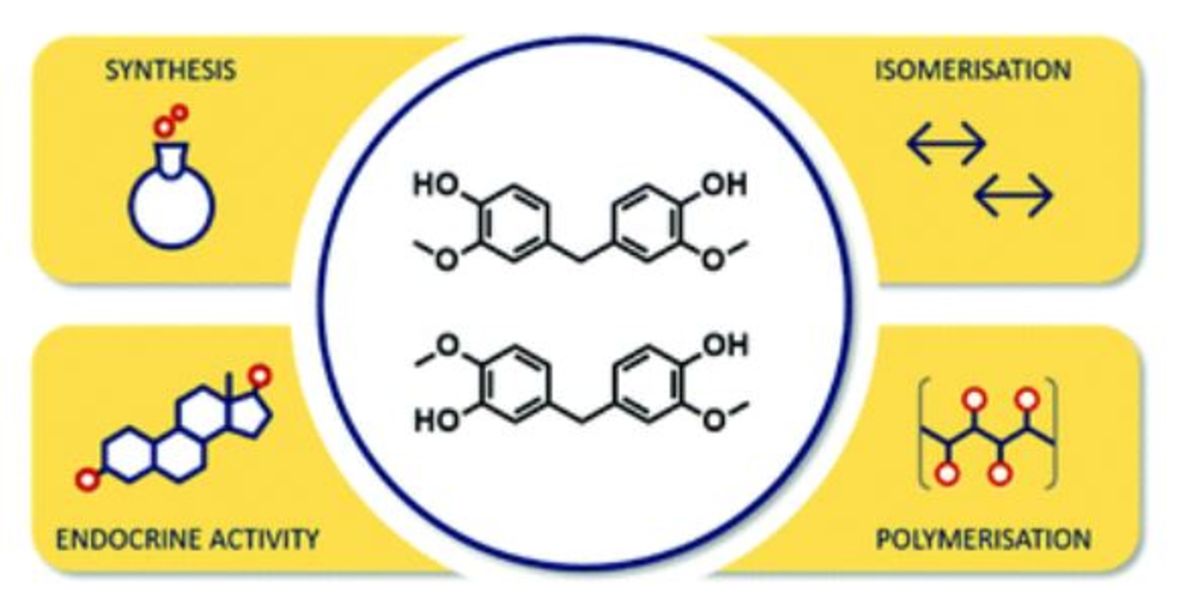
Regioselective synthesis, isomerisation, in vitro oestrogenic activity, and copolymerisation of bisguaiacol F (BGF) isomers 17-10-2019
Bisguaiacol F (BGF), a potentially safer and renewable bisphenol A (BPA) replacement made from ligninderivable vanillyl alcohol (p-VA), is a promising building block for future aromatic biopolymers. Unfortunately, like BPA synthesis, this electrophilic condensation reaction is also prone to regioselectivityissues, giving rise to m,p’- and o,p’-BGF byproducts. In this work, the hitherto unconsidered influence of m,p’-BGF, viz. the main isomeric byproduct of p,p’-BGF synthesis, on the physicochemical properties of poly(BGF carbonate) (BGF-PC) was systematically investigated by random copolymerisation with different fractions of pure m,p’-BGF (25, 50 and 75 wt%). To do so, the elusive m,p’-isomer was made in unparalleled regioselectivity (72%) by alkylation condensation of isovanillyl alcohol (m-VA) with guaiacol. Surprisingly, no isomeric scrambling due to acid-catalysed isomerisation was encountered for pure BGF isomers, which strongly facilitates their synthesis in contrast to petrochemical bisphenol F (BPF). Furthermore, to ensure safer chemical design, an in vitro human oestrogen receptor α (hERα) transactivation
assay was performed. Both pure m,p’- and p,p’-BGF displayed a significantly reduced oestrogenic
potency (∼426–457 times lower affinity than BPA) and oestrogenic efficacy (∼39–50% of BPA’s maximum induction). Interestingly, mutual comparison between p,p’-BPF and p,p’-BGF reveals and proves for the first time the direct link between ortho-methoxy substitution and reduced in vitro oestrogenic activity (for transactivation of hERα). In contrast to o,p’-BPA, viz. the main byproduct of p,p’-BPA synthesis, m,p’-BGF was proven suitable for utilization in thermoplastics, thereby avoiding time-consuming and labour-intensive (re)crystallizations to obtain regioisomerically pure p,p’-BGF.
Substrate-specificity of Candida rugosa lipase and its industrial application 17-10-2019
Candida rugosa lipase (CRL) is a very versatile and widely used lipase in the aroma and flavor industry, the fat and oil industry, the pharmaceutical industry and is also applicable as a biosensor. The present paper discusses recent developments on the molecular level of CRL, the biocatalytic reactivity of several Lip isoenzymes, diverse immobilization strategies of the enzyme and its broad (substrate) specificities in different fields. Furthermore, an overview is given of future applications with CRL such as the enantioselective hydrolysis of racemic lactate esters produced out of sugars and the production of biodiesel out of vegetable oil. These processes have been tried on laboratory scale but still need further optimization for industrialization.
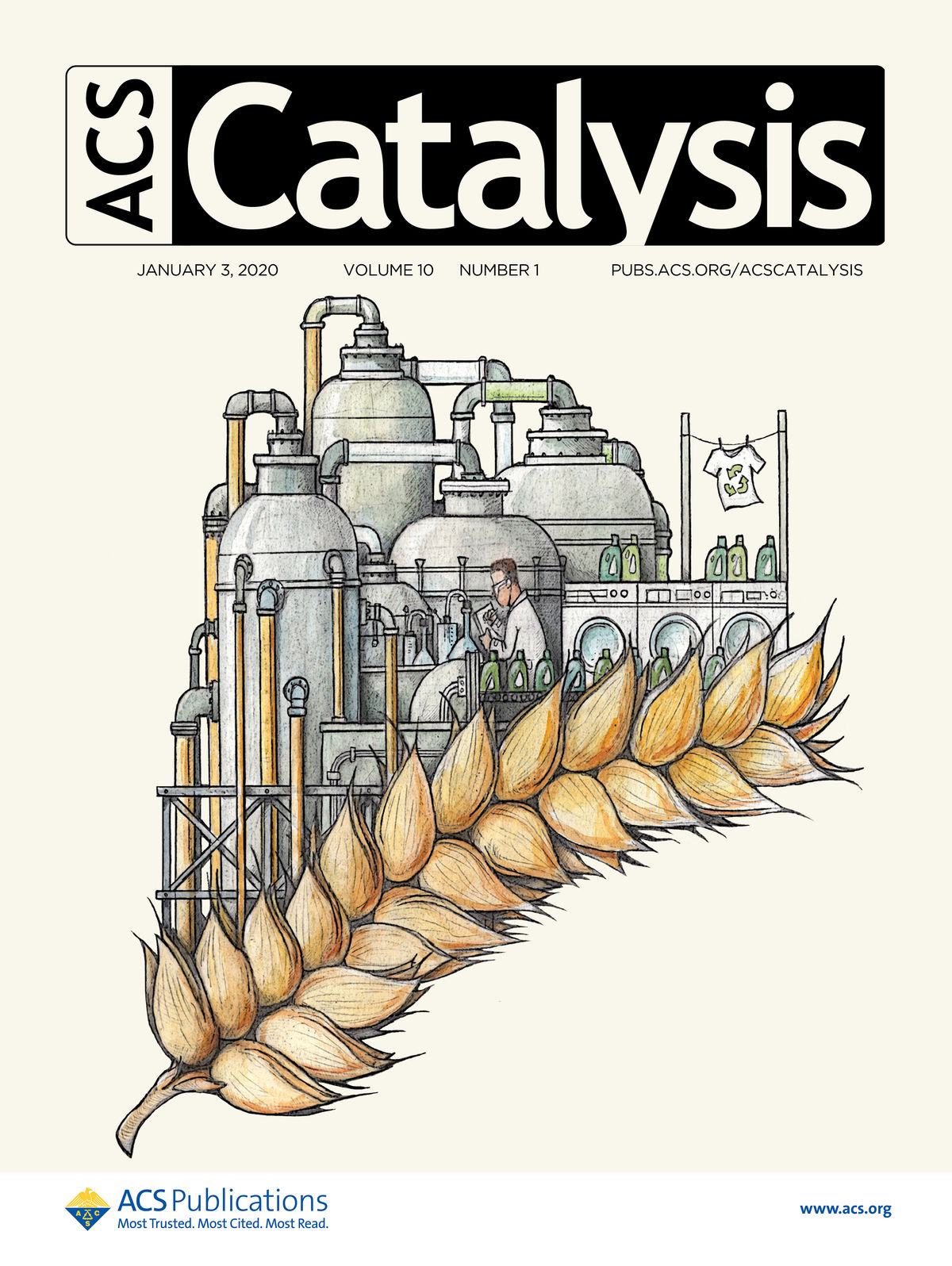
Glycolaldehyde as Bio-based C2 Platform Chemical: Catalytic Reductive Amination of vicinal Hydroxyl Aldehydes 27-09-2019
Reductive amination of glycolaldehyde (GA), the smallest sugar molecule and obtainable from biomass, creates a versatile plat-form for ethylamine products, potentially replacing current pathways via toxic ethylene oxide and dichloroethane. Given the high reactivity of α-OH carbonyls, the main challenge was control of selectivity in a cascade of parallel and consecutive reactions during reductive amination. Type of solvent and catalyst, preferably methanol and Pd respectively, are key enabling parameters to achieve high product yields. A kinetic study on product intermediates accompanied with detailed product analysis (MS and NMR) suggested a general mechanistic scheme, and validation with DFT calculations provided a rational understanding of the solvent effect in terms of energetics and kinetics. Primary alkanolamines (AA) such as 2-(dimethylamino)-ethanol (DMAE) are preferred products, and large excess of the amine reagent is not required to reach almost quantitative yields. Interestingly sub-stoichiometric amine to GA ratio allows for high yield of higher (consecutive) AAs such as N-methyldiethanolamine (MDEA) and triethanolamine (TEOA), for which a peculiar cyclic 5-membered oxazolidinic precursor was analyzed (e.g., for reaction with monomethylamine to MDEA). The shift to diamine-selective (DA) reactions is possible by switching to a two-step one-pot approach. With ethylene glycol as preferred solvent, high yield of an unsaturated C2-ene-diamine precursor is obtained under inert atmosphere, followed by its metal-catalyzed hydrogenation at elevated temperature to the final DA product such as N,N,N’,N’-tetramethylethylene-diamine (TMEDA). A conceptual model of the catalytic reductive amination routes that allows production of a variety of ethylamines with up to +90C% yield, is thus presented. The successful preparation and sensory assessment of a GA-based diester quat in fabric softener formulations, demonstrates the viability of a full bio-based and drop-in production route for high-value chemicals, directly from GA as platform molecule.
Reductive catalytic fractionation: State of the art of the lignin-first biorefinery 10-07-2019
Reductive catalytic fractionation (RCF) of lignocellulose is an emerging biorefinery scheme that combines biomass fractionation with lignin depolymerisation. Central to this scheme is the integration of heterogeneous catalysis, which overcomes the tendency of lignin to repolymerise. Ultimately, this leads to a low-Mw lignin oil comprising a handful of lignin-derived monophenolics in close-to-theoretical yield, as well as a carbohydrate pulp. Both product streams are considered to be valuable resources for the bio-based chemical industry. This Opinion article sheds light on recently achieved milestones and consequent research opportunities. More specifically, mechanistic studies have established a general understanding of the elementary RCF steps, which include (i) lignin extraction, (ii) solvolytic and catalytic depolymerisation and (iii) stabilisation. This insight forms the foundation for recently developed flow-through RCF. Compared to traditional batch, flow-through RCF has the advantage of (i) separating the solvolytic steps from the catalytic steps and (ii) being a semi-continuous process; both of which are beneficial for research purposes and for industrial operation. Although RCF has originally been developed for ‘virgin’ biomass, researchers have just begun to explore alternative feedstocks. Low-value biomass sources such as agricultural residues, waste wood and bark, are cheap and abundant but are also often more complex. On the other side of the feedstock spectrum are high-value bio-engineered crops, specifically tailored for biorefinery purposes. Advantageous for RCF are feedstocks designed to (i) increase the total monomer yield, (ii) extract lignin more easily, and/or (iii) yield unconventional, high-value products (e.g. alkylated catechols derived from C-lignin). Taking a look at the bigger picture, this Opinion article highlights the multidisciplinary nature of RCF. Collaborative efforts involving chemists, reactor engineers, bioengineers and biologists working closer together are, therefore, strongly encouraged.
Bio-based aromatic amines from lignin-derived monomers 10-07-2019
A new approach to synthesize valuable 3,4-dialkoxyanilines and alkyl propionates from lignin-derived 4-propylguaiacol and -catechol with overall isolated yields up to 65% has been described. The strategy is based on the introduction of nitrogen via a Beckmann rearrangement. Amino introduction therefore coincides with a C-defunctionalization reaction; overall a replacement of the propyl chain by an amino group is obtained. The process only requires cheap bulk chemicals as reagents/reactants and does not involve column chromatography to purify the reaction products. Furthermore, all carbon atoms from the biorenewable lignin-derived monomers are transformed into valuable compounds. Greenness was assessed by performing a Green Metrics analysis on two dialkoxyanilines. A comparison was made with literature routes for these compounds starting from a petrochemical substrate.
Catalytic Byproduct Valorization in Future Biorefineries 10-07-2019
For reasons of environmental and economic viability, future biorefinery operations must minimize waste. Mimicking the strategy of maximizing resource utilization in fossil fuelsbased refining and in the chemical industry, considerable research efforts have been recently aimed at identifying new ways of valorizing byproducts generated in the refining or upgrading of lignocellulosic biomass, its components, and other sustainable biomass feedstocks to yield value-added chemicals and new materials for various applications. Key to the translation of the reaction paths conceived for biobased waste processing into industrially amenable technologies is the design of highly active, selective, and durable catalysts and the development of sustainable process engineering solutions. These topics have been studied intensively using a wide variety of approaches.
Bio‐Acrylates Production: Recent Catalytic Advances and Perspectives of the Use of Lactic Acid and Their Derivates 16-05-2019
The production of drop‐in chemicals from bio‐based renewable sources is gaining a lot of momentum due to proven negative impact of fossil‐based economy on environment and society. In this Review, various bio‐derived platform molecules are assessed as renewable alternatives to fossil resources for the catalytic production of acrylates. Acrylic acid and its esters are key building blocks of a large number of high‐value oligomers and polymers in the current industry. In spite of the encouraging successes reported on gram or lab‐scale, real implementation of bio‐based examples remain scarce mainly due to the current high cost and limited availability of the bio‐based substrates. As lactic acid and their derivatives are one of the most promising feedstocks for bio‐acrylate production, they are the main focus of this Review.
Advances in porous and nanoscale catalysts for viable biomass conversion 16-05-2019
Heterogeneous catalysis is a promising technology for the valorization of renewable biomass to sustainable advanced fuels and fine chemicals. Porosity and nanostructure are the most versatile features of heterogeneous solid catalysts, which can greatly determine the accessibility of specific active sites, reaction mechanisms, and the selectivity of desirable products. Hence, the precise tuning of porosity and nanostructure has been a potential strategy towards developing novel solid catalysts with indispensable characteristics for efficient biomass valorization. Herein, we present a timely and comprehensive review of the recent advances in catalytic biomass conversions over microporous zeolites, mesoporous silicas, and nanostructured metals/metal oxides. This review covers the catalytic processing of both edible (lipids and starch) and non-edible (lignocellulose) biomass as well as their derived compounds, along with a systematic evaluation of catalyst reusability/kinetic/mechanistic aspects in the relevant processes. The key parameters essential for tailoring particle size, morphology, porosity, acid–base, and redox properties of solid catalysts are emphasized, while discussing the ensuing catalytic effects towards the selective conversion of biomass into desirable chemicals. Special attention has been drawn to understand the role of water in liquid phase biomass conversions as well as the hydrothermal stability and the deactivation of nanoporous catalysts. We believe this comprehensive review will provide new insights towards developing state-of-the-art solid catalysts with well-defined porosity and nanoscale properties for viable biomass conversion.
Aerosol route to TiO2–SiO2 catalysts with tailored pore architecture and high epoxidation activity 16-05-2019
Herein, we present the aerosol-assisted sol–gel preparation of hierarchically porous TiO2–SiO2catalysts having a spherelike shell morphology and a high Ti dispersion. In order to control the porosity at the micro-, meso-, and macrolevels, we use the evaporation-induced self-assembly (EISA) of a surfactant, possibly combined with polymer beads as hard templates. These catalysts are tested for the epoxidation of cyclohexene with cumene hydroperoxide as the oxidant, and their performance is compared to the reference TS-1 zeolite. The high catalytic performance observed with the catalysts prepared by aerosol stems from their high specific surface area, but also from the short diffusion path length generated by the meso-/macropore architecture which provides entryways for bulky reactants and products. Besides, these materials can incorporate a higher Ti loading than TS-1 zeolite, while ensuring a good control over the Ti speciation. Thus, the unique features of the aerosol process—which is also known to be scalable—allow us to prepare catalytic materials with high epoxidation activity, also for bulky olefins.
Reductive catalytic fractionation: state of the art of the lignin-first biorefinery 20-01-2019
Reductive catalytic fractionation (RCF) of lignocellulose is an emerging biorefinery scheme that combines biomass fractionation with lignin depolymerisation. Central to this scheme is the integration of heterogeneous catalysis, which overcomes the tendency of lignin to repolymerise. Ultimately, this leads to a low-Mw lignin oil comprising a handful of lignin-derived monophenolics in close-to-theoretical yield, as well as a carbohydrate pulp. Both product streams are considered to be valuable resources for the bio-based chemical industry. This Opinion article sheds light on recently achieved milestones and consequent research opportunities. More specifically, mechanistic studies have established a general understanding of the elementary RCF steps, which include (i) lignin extraction, (ii) solvolytic and catalytic depolymerisation and (iii) stabilisation. This insight forms the foundation for recently developed flow-through RCF. Compared to traditional batch, flow-through RCF has the advantage of (i) separating the solvolytic steps from the catalytic steps and (ii) being a semi-continuous process; both of which are beneficial for research purposes and for industrial operation. Although RCF has originally been developed for ‘virgin’ biomass, researchers have just begun to explore alternative feedstocks. Low-value biomass sources such as agricultural residues, waste wood and bark, are cheap and abundant but are also often more complex. On the other side of the feedstock spectrum are high-value bio-engineered crops, specifically tailored for biorefinery purposes. Advantageous for RCF are feedstocks designed to (i) increase the total monomer yield, (ii) extract lignin more easily, and/or (iii) yield unconventional, high-value products (e.g. alkylated catechols derived from C-lignin). Taking a look at the bigger picture, this Opinion article highlights the multidisciplinary nature of RCF. Collaborative efforts involving chemists, reactor engineers, bioengineers and biologists working closer together are, therefore, strongly encouraged.
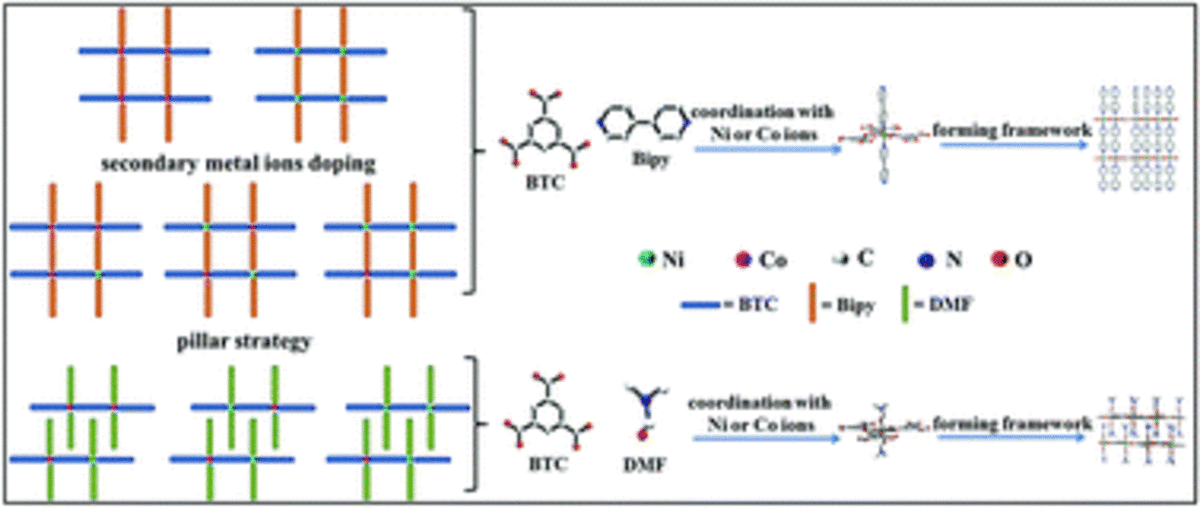
From rational design of a new bimetallic MOF family with tunable linkers to OER catalysts 02-01-2019
Innovative bimetallic MOFs offer more possibilities to further tailor the properties of MOFs, which have attracted great attention for wide applications. However, it is still a great challenge to rationally design bimetallic MOFs due to the lack of a tunable and reasonable hybrid structure architecture. Herein, a new series of bimetallic metal–organic frameworks (MOFs) with tunable pillar linkers were prepared by a one-step synthesis method. These bimetallic MOFs retain the same crystal structure when the mole fraction (based on metal) of the two metals changes from 0 to 1 and both metal ions occupy random nodal positions. The incorporation of a second metal cation has a large influence on the intrinsic properties (e.g. thermal stabilities and band gaps) of the MOFs. Furthermore, these bimetallic MOFs were used as self-sacrificial templates to prepare bimetal oxide catalysts for the oxygen evolution reaction (OER). After pyrolysis, a porous and hierarchical honeycomb-like structure with carbon network covered (bi)metal oxides is formed. Among all the bimetallic MOF-derived catalysts, CoNi1@C showed the best performance for the OER with the lowest Tafel slopes (55.6 mV dec−1) and overpotentials (335 mV on a glassy carbon electrode and 276 mV on Ni foam) at a current density of 10 mA cm−2, which is higher than those of state-of-the-art Co–Ni mixed oxide catalysts derived from MOFs for the OER. Our results indicate that the incorporation of a second metal ion is a promising strategy to tailor the properties of MOFs. More importantly, this new bimetallic MOF family with tunable linkers is expected to serve as a flexible assembly platform to offer broad possibilities for practical applications of MOFs.
2018
Mechanism of selective benzene hydroxylation catalyzed by iron-containing zeolites 27-11-2018
A direct, catalytic conversion of benzene to phenol would have wide-reaching economic impacts. Fe zeolites exhibit a remarkable combination of high activity and selectivity in this conversion, leading to their past implementation at the pilot plant level. There were, however, issues related to catalyst deactivation for this process. Mechanistic insight could resolve these issues, and also provide a blueprint for achieving high performance in selective oxidation catalysis. Recently, we demonstrated that the active site of selective hydrocarbon oxidation in Fe zeolites, named α-O, is an unusually reactive Fe(IV)=O species. Here, we apply advanced spectroscopic techniques to determine that the reaction of this Fe(IV)=O intermediate with benzene in fact regenerates the reduced Fe(II) active site, enabling catalytic turnover. At the same time, a small fraction of Fe(III)-phenolate poisoned active sites form, defining a mechanism for catalyst deactivation. Density-functional theory calculations provide further insight into the experimentally defined mechanism. The extreme reactivity of α-O significantly tunes down (eliminates) the rate-limiting barrier for aromatic hydroxylation, leading to a diffusion-limited reaction coordinate. This favors hydroxylation of the rapidly diffusing benzene substrate over the slowly diffusing (but more reactive) oxygenated product, thereby enhancing selectivity. This defines a mechanism to simultaneously attain high activity (conversion) and selectivity, enabling the efficient oxidative upgrading of inert hydrocarbon substrates.

Sulfonated mesoporous carbon and silica-carbon nanocomposites for biomass conversion. 15-11-2018
Sulfonated mesoporous carbon or silica-carbon nanocomposite materials possess a large amount of accessible SO3H acid groups, which may have versatile applications as solid acid catalysts in biomass conversion. The mesopores can facilitate the transportation of the large biomass substrates and the targeted products. The hydrophobicity of carbon ensures the hydrothermal stability of the materials, which is essential since biomass conversion usually occurs in polar circumstances (e.g., in water), and it can facilitate the adsorption of reactants and the desorption of formed H2O during the conversion simultaneously. The other weak acid groups of carbon, like phenolic OH and COOH groups may help the adsorption of reactants or even exert a synergistic catalytic function. With the co-existence of silica phase, the mesopores can be maintained under harsh conditions, e.g., during the sulfonation synthesis step in concentrated H2SO4 at a high temperature. Furthermore, the hybrid silica-carbon surface can provide specific polarity from the synergy of both kinds of components and offer potentiality for multi-functionalization. Herein, the synthesis and fabrication of such sulfonated mesoporous carbon and silica-carbon nanocomposite wherein CeSO3H is confined in mesoporous channels is reviewed. Their state-of-the-art use in catalytic biomass-related conversion such as fatty acids esterification, carbohydrates conversion and furan-derivative condensation, are discussed in detail. The stability issues of the sulfonated carbon or silica-carbon nanocomposites for the specific catalytic reactions are specifically addressed. Finally, a general conclusion is drawn from the above and a future outlook for this class of upcoming materials in terms of synthetic challenges and catalytic application is presented.
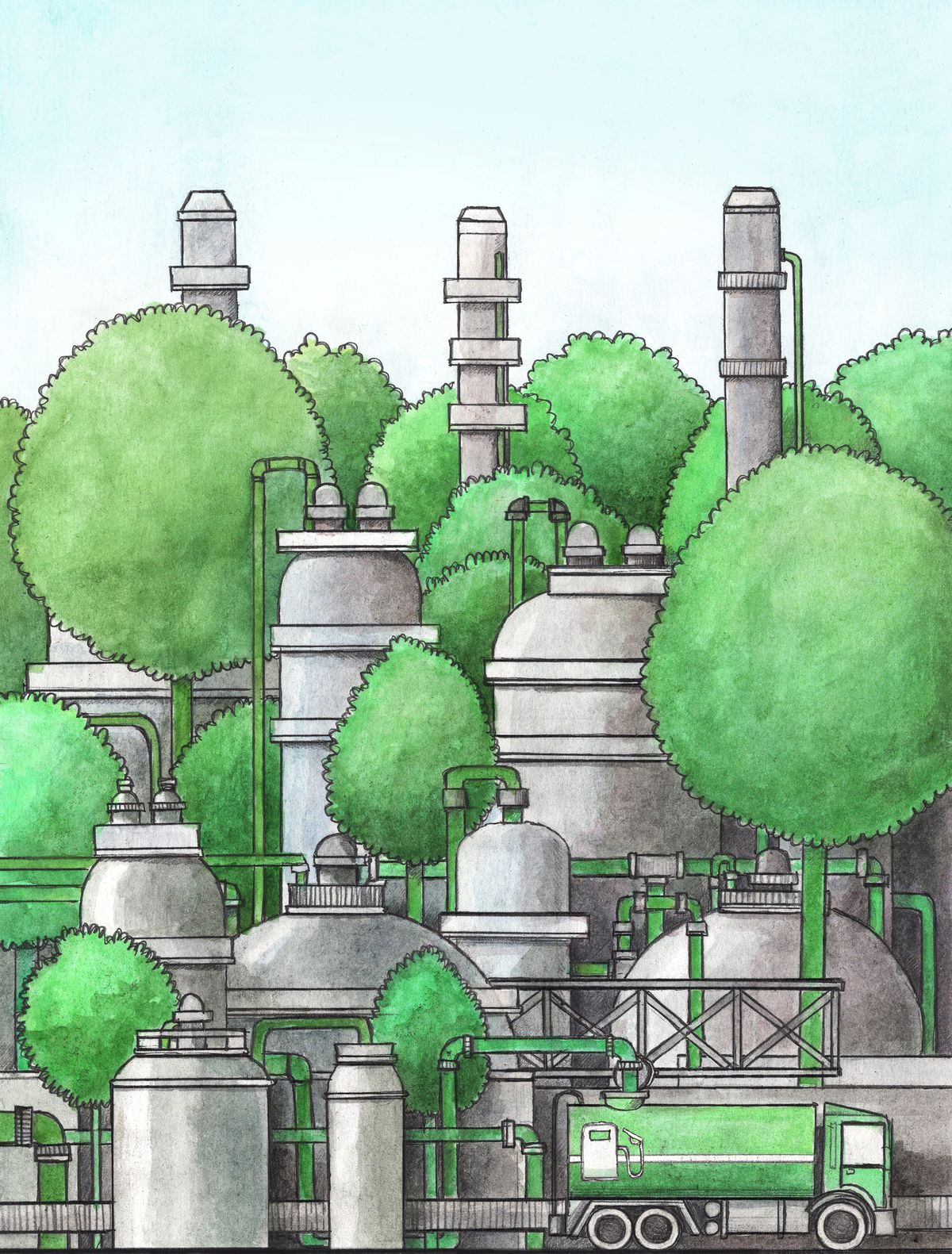
Direct upstream integration of biogasoline production into current light straight run naphtha petrorefinery processes. 24-09-2018
There is an urgent need to address environmental problems caused by our transportation systems, which include the reduction of associated CO2 emissions. In the short term, renewable drop-in fuels are ideal, as they allow a direct integration into the existing infrastructure. However, preferably they would perform better than current alternatives (for example, bioethanol) and be synthesized in a more efficient way. Here we demonstrate the production of biogasoline with a direct upstream integration into processes in existing petrorefinery facilities that targets the 10% bio-based carbon in accordance with the current European Union directives (for 2020) for biofuels. To achieve this goal, we show the valorization of (hemi)cellulose pulp into light naphtha using a two-phase (H2O:organic) catalytic slurry process. A C5–C6alkane stream, enriched with bio-derived carbon and compatible with further downstream petrorefinery operations for (bio)gasoline production, is automatically obtained by utilizing fossil light straight run naphtha as the organic phase. The ease of integration pleads for a joint petro/bio effort to gradually produce bio-enriched gasolines, wherein the chemical compounds of the bio-derived fraction are indistinguishable from those in current high-quality gasoline compositions.
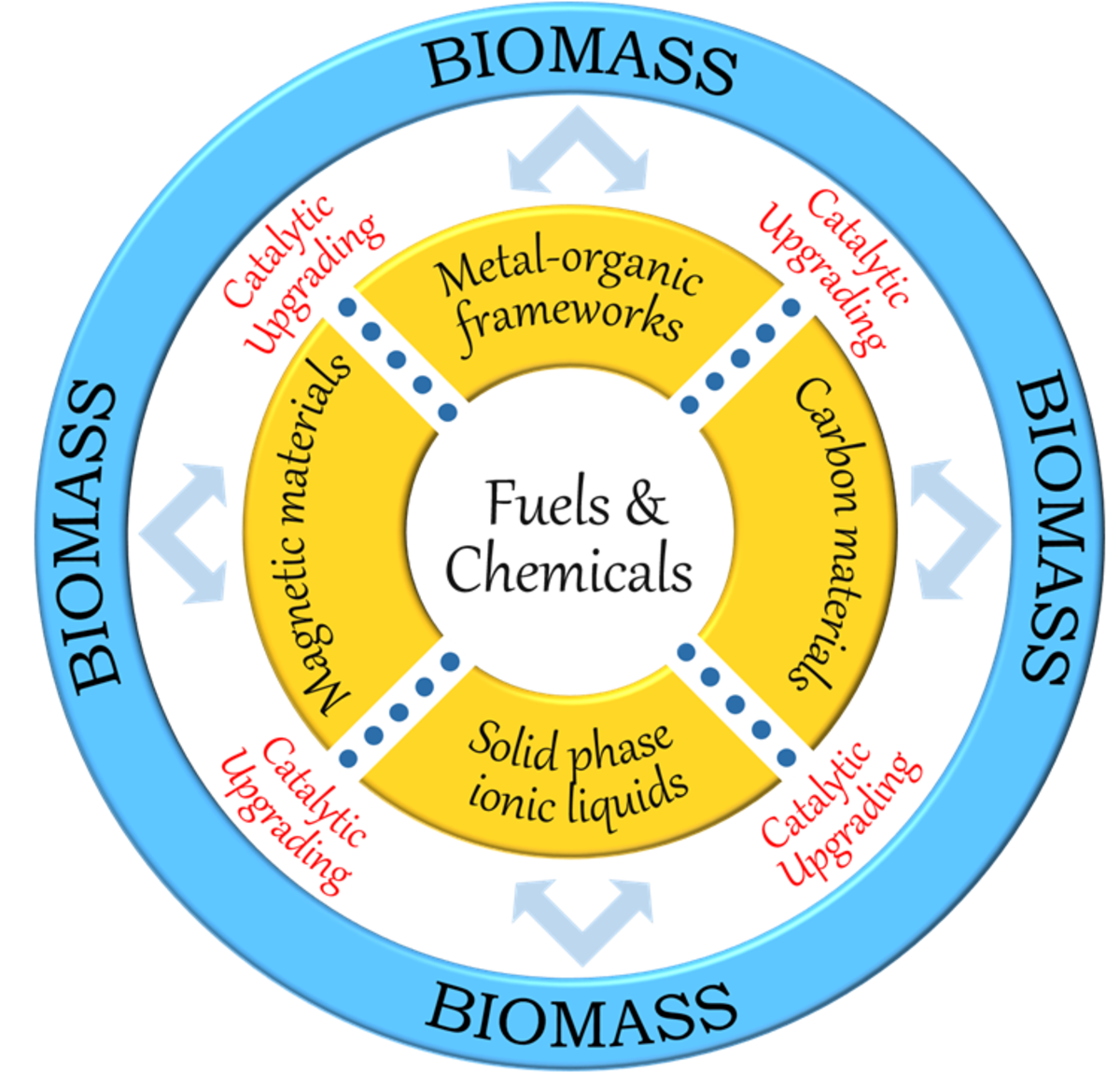
Functionalised heterogeneous catalysts for sustainable biomass valorisation. 18-09-2018
Efficient transformation of biomass to value-added chemicals and high-energy density fuels is pivotal for a more sustainable economy and carbon-neutral society. In this framework, developing potential cascade chemical processes using functionalised heterogeneous catalysts is essential because of their versatile roles towards viable biomass valorisation. Advances in materials science and catalysis have provided several innovative strategies for the design of new appealing catalytic materials with well-defined structures and special characteristics. Promising catalytic materials that have paved the way for exciting scientific breakthroughs in biomass upgrading are carbon materials, metal–organic frameworks, solid phase ionic liquids, and magnetic iron oxides. These fascinating catalysts offer unique possibilities to accommodate adequate amounts of acid–base and redox functional species, hence enabling various biomass conversion reactions in a one-pot way. This review therefore aims to provide a comprehensive account of the most significant advances in the development of functionalised heterogeneous catalysts for efficient biomass upgrading. In addition, this review highlights important progress ensued in tailoring the immobilisation of desirable functional groups on particular sites of the above-listed materials, while critically discussing the role of consequent properties on cascade reactions as well as on other vital processes within the bio-refinery. Current challenges and future opportunities towards a rational design of novel functionalised heterogeneous catalysts for sustainable biomass valorisation are also emphasized
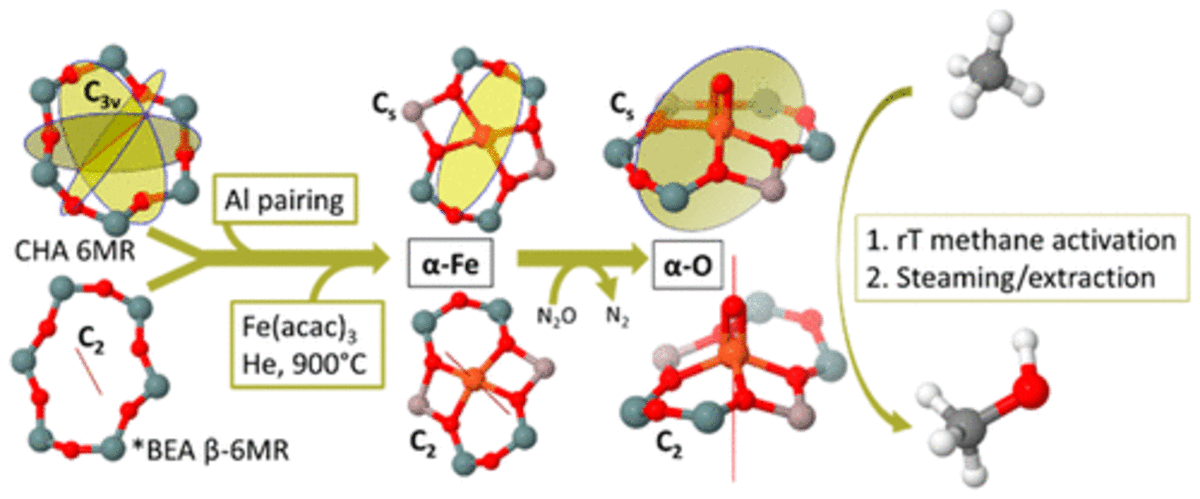
Spectroscopic Identification of the α-Fe/α-O Active Site in Fe-CHA Zeolite for the Low-Temperature Activation of the Methane C-H bond. 31-08-2018
The formation of single-site α-Fe in the CHA zeolite topology is demonstrated. The site is shown to be active in oxygen atom abstraction from N2O to form a highly reactive α-O, capable of methane activation at room temperature to form methanol. The methanol product can subsequently be desorbed by online steaming at 200 °C. For the intermediate steps of the reaction cycle, the evolution of the Fe active site is monitored by UV–vis–NIR and Mössbauer spectroscopy. A B3LYP-DFT model of the α-Fe site in CHA is constructed, and the ligand field transitions are calculated by CASPT2. The model is experimentally substantiated by the preferential formation of α-Fe over other Fe species, the requirement of paired framework aluminum and a MeOH/Fe ratio indicating a mononuclear active site. The simple CHA topology is shown to mitigate the heterogeneity of iron speciation found on other Fe-zeolites, with Fe2O3 being the only identifiable phase other than α-Fe formed in Fe-CHA. The α-Fe site is formed in the d6r composite building unit, which occurs frequently across synthetic and natural zeolites. Finally, through a comparison between α-Fe in Fe-CHA and Fe-*BEA, the topology’s 6MR geometry is found to influence the structure, the ligand field, and consequently the spectroscopy of the α-Fe site in a predictable manner. Variations in zeolite topology can thus be used to rationally tune the active site properties
Catalytic Strategies Towards Lignin-Derived Chemicals. 27-08-2018
Lignin valorization represents a crucial, yet underexploited component in current lignocellulosic biorefineries. An alluring opportunity is the selective depolymerization of lignin towards chemicals. Although challenged by lignin’s recalcitrant nature, several successful (catalytic) strategies have emerged. This review provides an overview of different approaches to cope with detrimental lignin structural alterations at an early stage of the biorefinery process, thus enabling effective routes towards lignin-derived chemicals. A first general strategy is to isolate lignin with a better preserved native-like structure and therefore an increased amenability towards depolymerization in a subsequent step. Both mild process conditions as well as active stabilization methods will be discussed. An alternative is the simultaneous depolymerization-stabilization of native lignin towards stable lignin monomers. This approach requires a fast and efficient stabilization of reactive lignin intermediates in order to minimize lignin repolymerization and maximize the envisioned production of chemicals. Finally, the obtained lignin-derived compounds can serve as a platform towards a broad range of bio-based products. Their implementation will improve the sustainability of the chemical industry, but equally important will generate opportunities towards product innovations based on unique biobased chemical structures.
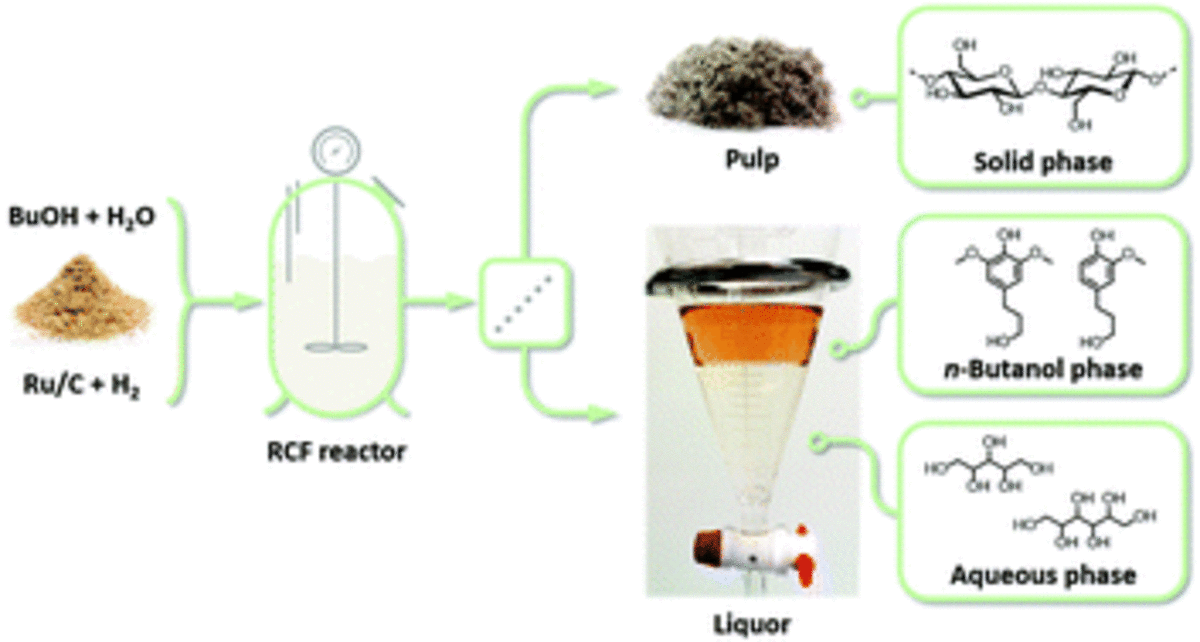
Catalytic lignocellulose biorefining in n-butanol/water: a one-pot approach toward phenolics, polyols, and cellulose. 01-08-2018
Lignocellulose constitutes an alluring renewable feedstock for the production of bio-based chemicals. In this contribution, we propose a chemocatalytic biorefinery concept that aims to convert lignocellulosic biomass (Eucalyptus sawdust) into (i) lignin-derived (mono)phenolics, (ii) hemicellulose-derived polyols, and (iii) a cellulose pulp. This is achieved by processing biomass in an equivolumetric mixture of n-butanol and water at elevated temperature (200 °C), in the presence of Ru/C and pressurised hydrogen (30 bar). During this one-pot Reductive Catalytic Fractionation (RCF) process, the hot liquor enables the extraction and solvolytic depolymerisation of both lignin and hemicellulose, while the catalyst and reductive environment are essential to hydrogenate reactive intermediates (coniferyl/sinapyl alcohol and sugars) toward stable target products (phenolics and polyols, respectively). After the catalytic reaction, the solid carbohydrate pulp (mainly cellulose) is easily retrieved upon filtration. Phase separation of n-butanol and water occurs upon cooling the liquor (<125 °C), which offers a facile and effective strategy to isolate lignin-derived phenolics (n-butanol phase) from polyols (aqueous phase). The three resulting product streams provide a versatile platform for down-stream conversion, en route to bio-based chemicals. A proof-of-concept experiment using a 2 L batch reactor demonstrates the scalability potential. Furthermore, this contribution highlights that the conversion of each biopolymer is influenced in a different way by reaction parameters like catalyst, hydrogen pressure, temperature, and acidity (HCl). The key challenge is to find suitable conditions that allow (close-to-)optimal valorisation of all constituents.
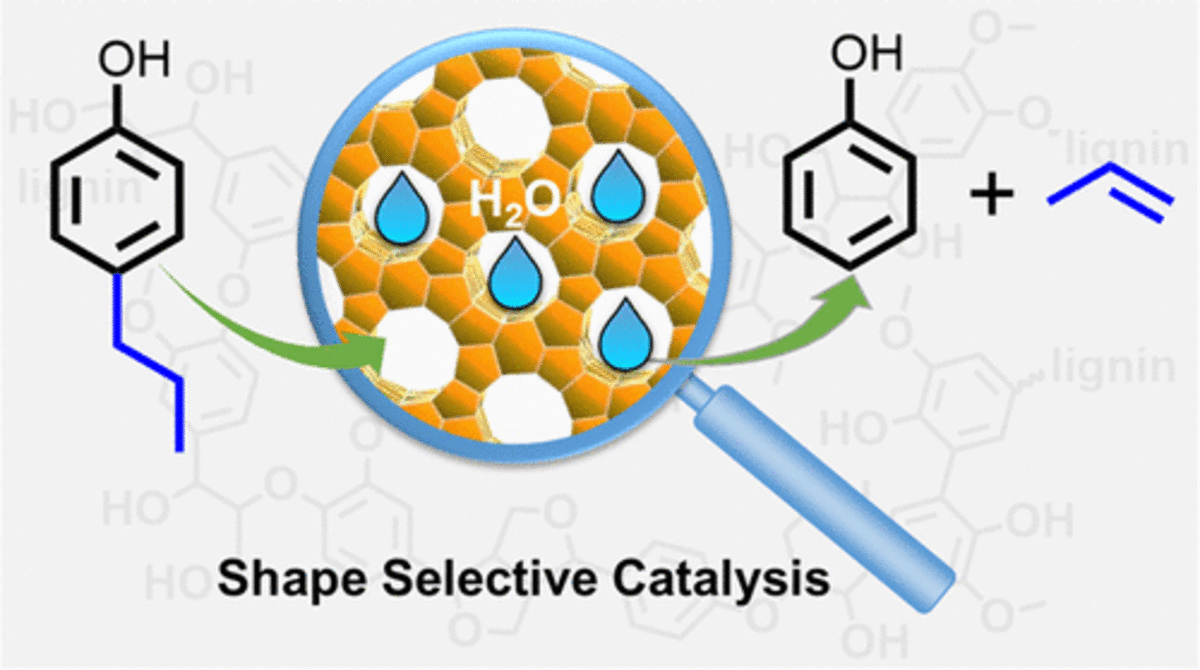
Propylphenol to Phenol and Propylene over Acidic Zeolites: Role of Shape Selectivity and Presence of Steam. 30-07-2018
This contribution studies the steam-assisted dealkylation of 4-n-propylphenol (4-n-PP), one of the major products derived from lignin, into phenol and propylene over several micro- and mesoporous acidic aluminosilicates in gas phase. A series of acidic zeolites with different topology (e.g., FER, TON, MFI, BEA, and FAU) are studied, of which ZSM-5 outperforms the others. The catalytic results, including zeolite topology and water stability effects, are rationalized in terms of thermodynamics and kinetics. A reaction mechanism is proposed by (i) analyzing products distribution under varying temperature and contact time conditions, (ii) investigating the dealkylation of different regio- and geometric isomers of propylphenol, and (iii) studying the reverse alkylation of phenol and propylene. The mechanism accords to the classic carbenium chemistry including isomerization, disproportionation, transalkylation, and dealkylation, as the most important reactions. The exceptional selectivity of ZSM-5 is attributed to a pore confinement, avoiding disproportionation/transalkylation as a result of a transition state shape selectivity. The presence of water maintains a surprisingly stable catalysis, especially for ZSM-5 with low acid density. The working hypothesis of this stabilization is that water precludes diphenyl ether(s) formation in the pores by reducing the lifetime of the phenolics at the active site due to the high heat of adsorption of water on H-ZSM-5, besides counteracting the equilibrium of the phenolics condensation reaction. The water effect is unique for the combination of (alkyl)phenols and ZSM-5.

Titania-Silica Catalysts For Lactide Production From Renewable Alkyl Lactates: Structure-Activity Relations 20-07-2018
Different Ti-Si catalysts, viz. TiO2 supported on amorphous SiO2 or Si-MCM-41, TiO2-SiO2 xerogels and Ti-zeolites (TS-1 and Ti-beta) were compared in terms of activity and selectivity for the direct conversion of methyl lactate to lactide in the gas phase. Except for Ti-beta, all catalysts exhibit a high lactide selectivity of 88-92% at conversions below 50 %. From DR UV-VIS spectroscopy, it is evidenced that the catalytic activity of tetrahedral TiO4 sites is higher than of polymerized TiO5 or octahedral TiO6 counterparts, irrespective of the catalyst structure, an analysis supported by ToF-SIMS measurements. A kinetic analysis shows that the catalytic activity is proportional to the number of vacant sites on the catalyst surface. Thus, the activity increase observed for tetrahedral TiO4 sites may be attributed to an increased number of vacant sites (e.g. two for TiO4, zero for TiO6). Lactide productivity thus highly benefits from an increased dispersion of Ti-sites on the catalyst surface, and could be increased by a factor of 2.5 (up to 10 gLD gcat-1 h-1) when TiO2 is dispersed on a Si-MCM-41 support, with higher surface areas than amorphous SiO2 gels.
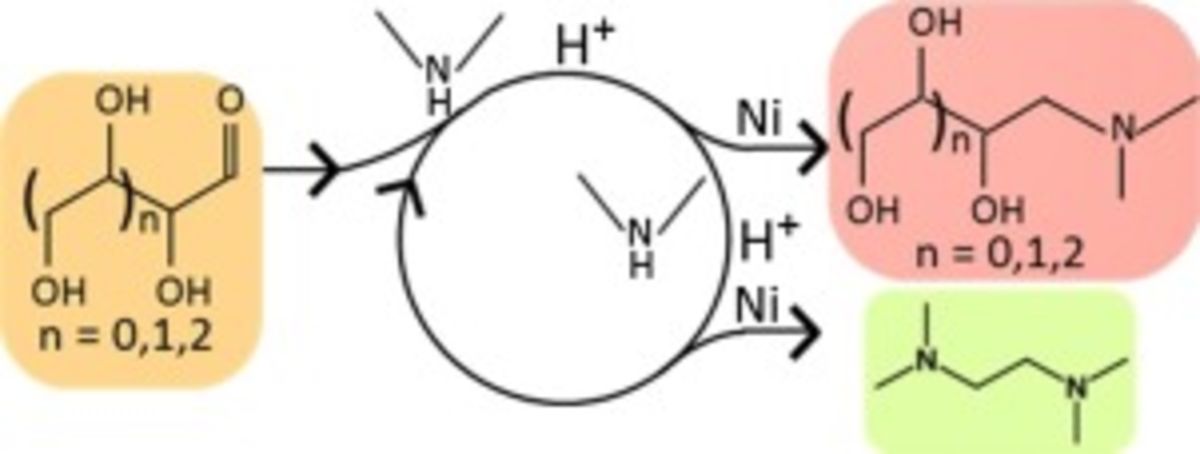
Kinetics of Homogeneous and Heterogeneous Reactions in the Reductive Aminolysis of Glucose with Dimethylamine. 05-07-2018
Abstract
The reductive aminolysis of glucose with dimethylamine (DMA) as aminating agent has been investigated experimentally as well as via kinetic model construction. A fed-batch reactor configuration was used at following conditions: temperatures ranging between 383 K–398 K, total pressures from 6.0 MPa to 7.5 MPa, an overall catalyst to glucose ratio of 9–31 gcat mol−1, an overall DMA to glucose ratio of 12–24 mol mol−1 and an overall hydrogen to glucose ratio of 5–10 mol mol−1. Such a reactor configuration, combined with a controlled feeding rate of the sugar, allowed to significantly avoid degradation reactions. The main desired products, i.e., dimethylaminoethanol (DMAE) and tetramethylethylenediamine (TMEDA), were obtained after amination followed by retro-aldol cleavage with maximum selectivity, amounting up to 15% and 60% respectively. Retro-aldol cleavage after amination proceeds at lower temperatures, evidenced by an activation energy of 60 kJ mol−1, than without amination, where activation energies amounting to 140 kJ mol−1 have been reported. A higher catalyst to glucose ratio leads to more parallel side products such as N,N-dimethylglucamine and 4‐dimethylamino‐1,2,3‐butanetriol. The effects of temperature and catalyst to glucose ratio were much more pronounced than that of the total pressure or the ratio of the aminating agent to glucose. The developed kinetic model is based on the most prominent homogeneous bulk phase and heterogeneously catalyzed reactions and accounts quantitatively for degradation reactions. A statistically and physically significant model which could satisfactorily reproduce the experimental observations, was thus obtained.
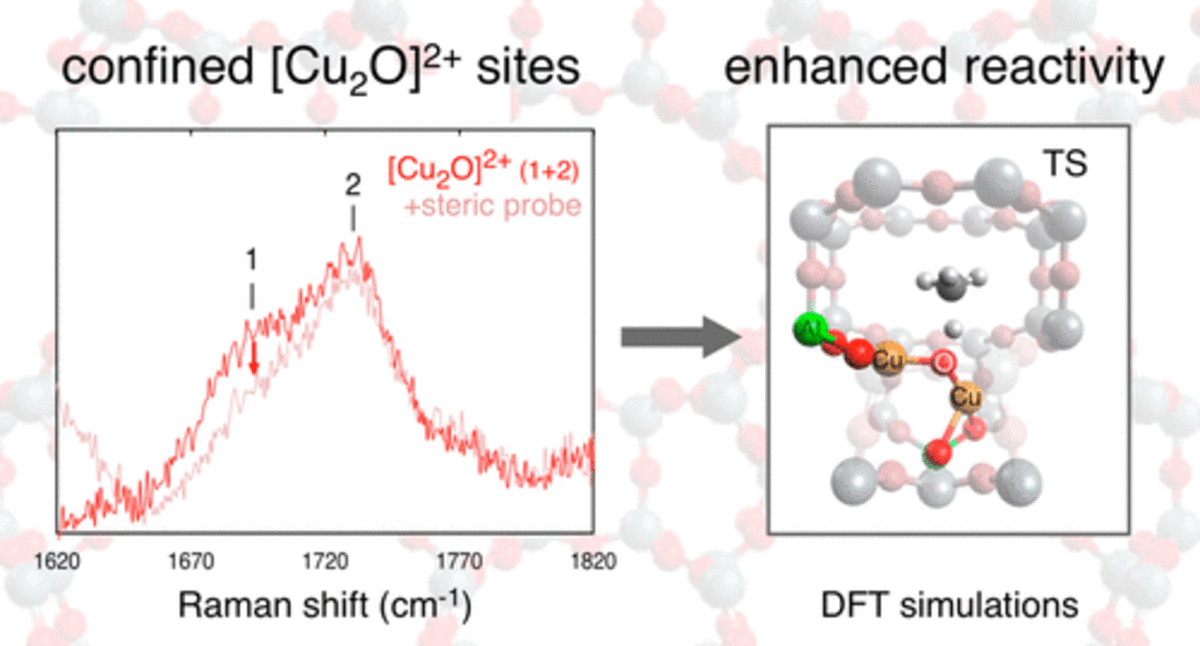
Second-Sphere Effects on Methane Hydroxylation in Cu-Zeolites 28-06-2018
Two [Cu2O]2+ cores have been identified as the active sites of low temperature methane hydroxylation in the zeolite Cu-MOR. These cores have similar geometric and electronic structures, yet different reactivity with CH4: one reacts with a much lower activation enthalpy. In the present study, we couple experimental reactivity and spectroscopy studies to DFT calculations to arrive at structural models of the Cu-MOR active sites. We find that the more reactive core is located in a constricted region of the zeolite lattice. This leads to close van der Waals contact between the substrate and the zeolite lattice in the vicinity of the active site. The resulting enthalpy of substrate adsorption drives the subsequent H atom abstraction step—a manifestation of the “nest” effect seen in hydrocarbon cracking on acid zeolites. This defines a mechanism to tune the reactivity of metal active sites in microporous materials
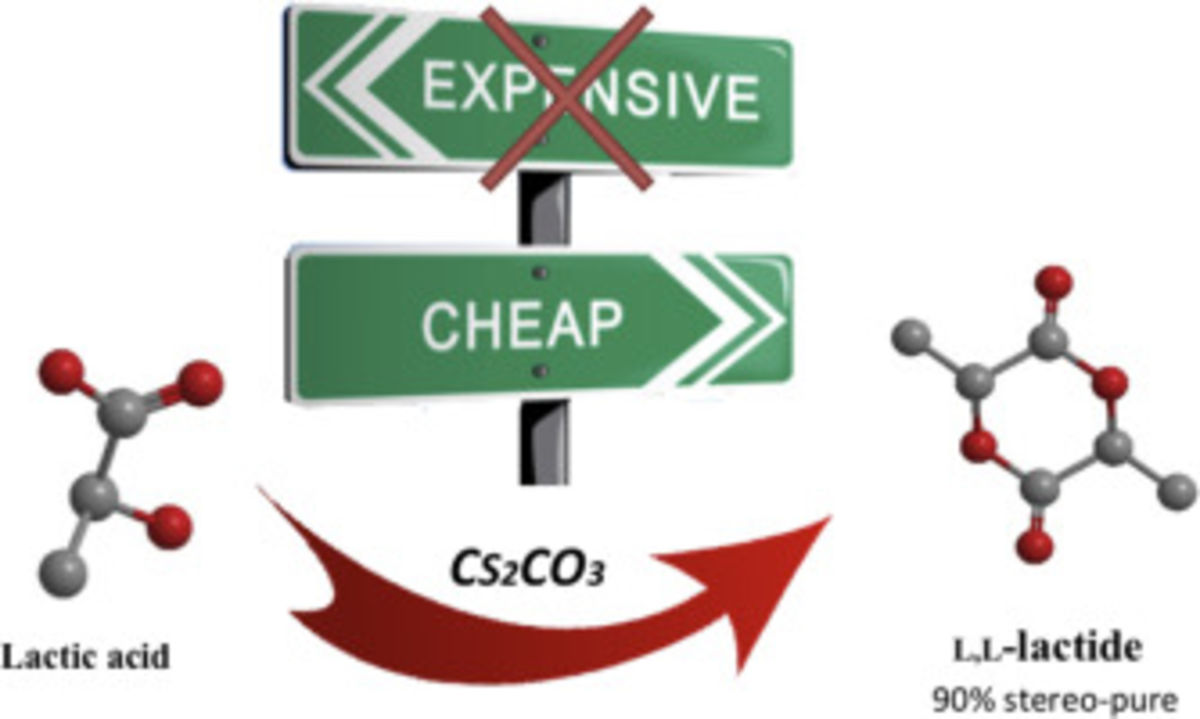
One-step synthesis of stereo-pure l, l lactide from l-lactic acid 01-06-2018
Poly (lactic acid) (PLA) is extensively used as an eco-friendly compound for many applications. The synthesis of stereo-pure lactide, specifically l,l-lactide which is the most desired isomer for the synthesis of high-quality PLA is very important. In this work, various materials including MOFs and simple bases have been applied as catalysts for the Lactide synthesis. Herein we report the one-step synthesis of l,l-lactide with high selectivity and yield (99%) in the absence of racemization by applying a cost-effective Cs2CO3 catalyst. The novel described procedure is even expected to be very efficient for industrial applications

Branching-first: synthesizing C-C skeletal branched bio-based chemicals from sugars 25-04-2018
A novel strategy to bio-based chemicals with a branched carbon skeleton is introduced. Hereto, small sugars, such as 1,3-dihydroxyacetone, are coupled catalytically to obtain branched C6 sugars, such as dendroketose, in high yield at mild conditions. By bringing this branching step up front, at the level of the sugar feedstock (branching-first), new opportunities for the synthesis of useful chemicals arise. Here, we show that the branched sugar can be efficiently valorized into (i) new branched polyols and (ii) short branched alkanes. The first route preserves most of the original sugar functionality by hydrogenation with Ru/C, and renders access to branched polyols with three primary alcohol groups. These molecules are potentially interesting as plasticizers, crosslinkers or detergent precursors. The second valorization route demonstrates a facile hydrodeoxygenation of the branched sugars towards their corresponding branched alkanes (e.g. 2-methylpentane). The highest alkanes yields (> 65 mol% C) are obtained with a Rh/C redox metal catalyst in a biphasic catalytic system, following a HDO mechanism. In the short term, commercial integration of these mono-branched alkanes, in contrast to branched polyols, is expected to be straightforward, because of their drop-in character and well-known valuable octane booster role when present in gasoline. Accordingly, the branching-first concept is also demonstrated with other small sugars (e.g. tetroses) enabling the production of branched C6-C8 sugars, and thus also branched C5-C8 alkanes after HDO.
Supported Molecular Catalysts 24-04-2018
This Editorial presents the Special Issue on Supported Molecular Catalysts as a forum to discuss recent advances in the immobilization and heterogenization of molecular catalysts. The scope ranges from organic synthesis and highly selective reactions through to photocatalysis and electrocatalysis, including advances in enzyme immobilization methodology. The outcome is a wide spectrum of papers encompassing all the old formal domains of catalysis research of both primary and secondary research.
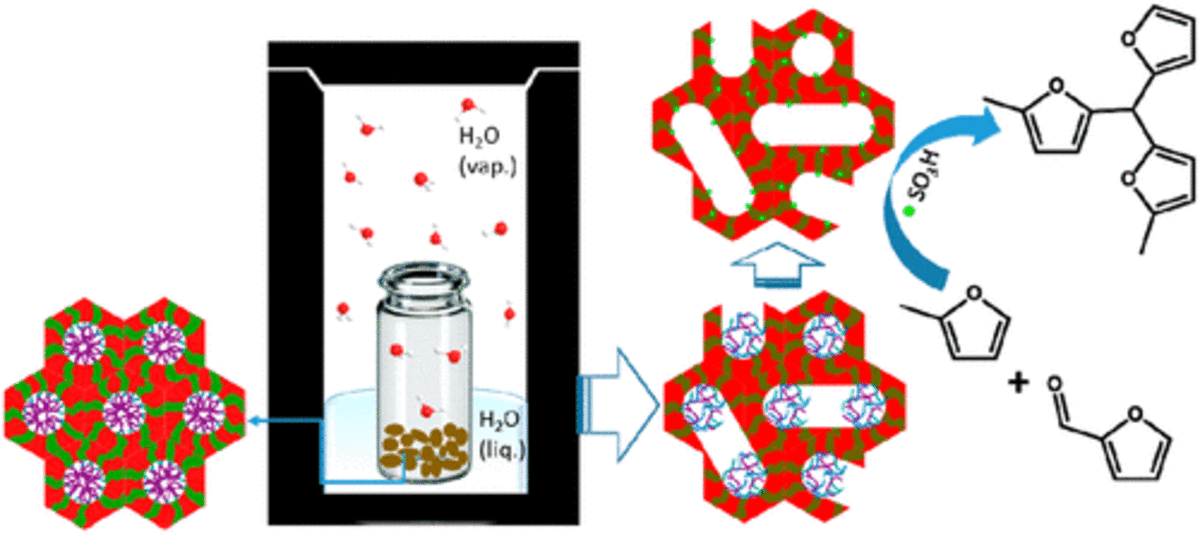
Silica–Carbon Nanocomposite Acid Catalyst with Large Mesopore Interconnectivity by Vapor-Phase Assisted Hydrothermal Treatment 23-04-2018
Mesostructured silica–carbon nanocomposites with large mesopore interconnectivity are created from sucrose as sustainable carbon source using a mild vapor-phase assisted hydrothermal treatment procedure. The resultant mesostructured silica–carbon nanocomposite can be readily sulfonated to provide a strong acid catalyst with high sulfonic acid density, or the carbon phases of the nanocomposite can be removed by calcination to produce a silica material with ultrahigh porosity (Vpore = 1.25 to 1.34 cm3 g–1). A superior catalytic activity is demonstrated for the solvent-less condensation of 2-methylfuran with furfural; both product yield and conversion rate surpass that of reference catalysts such as their counterparts from dry pyrolysis and the commercial strong acid resins. The enhanced catalytic activity is attributed to the higher SO3H acid density (0.64 to 1.08 mmol g–1), the larger and better communicating mesopores (Vmeso = 0.38 to 0.82 cm3 g–1) and the abundant presence of surface oxygen-containing functional groups on the vapor-phase assisted hydrothermally treated samples. The origin of the well-developed large interconnecting mesopores is investigated and discussed. The mild hydrothermal treatment causes local etching of the original mesopores in the precursor material, creating unexpected interconnectivity between the pores, while the original micropores are basically eliminated during the treatment. Therefore, the here specified hydrothermal treatment provides a promising method to conventional pyrolysis for the efficient and eco-friendly synthesis of highly mesoporous silica–carbon nanocomposites and modification of their physicochemical properties.
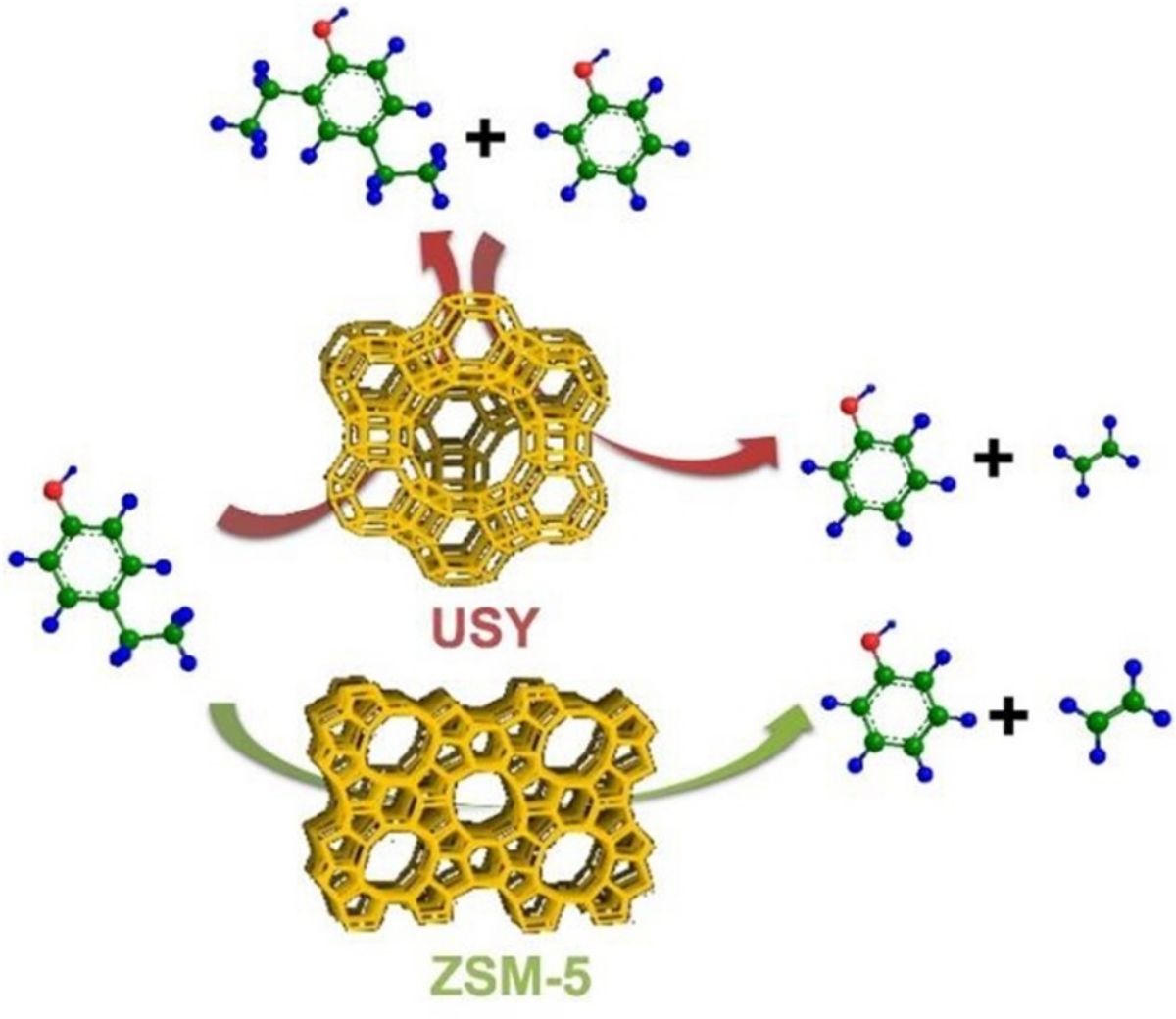
Shape selectivity vapor-phase conversion of lignin-derived 4-ethylphenol to phenol and ethylene over acidic aluminosilicates: Impact of acid properties and pore constraint 08-04-2018
Selective dealkylation of alkylphenols, the opposite reaction of the more commonly studied phenol alkylation, may represent an important reaction in the production of base chemicals like phenol and olefins from fossilized and raw lignocellulosic matter. This study reports the first thermodynamics and kinetics studies of the vapor-phase conversion of ethylphenol (EP) over acidic γ-Al2O3, amorphous (ASA) and crystalline aluminosilicates (like ferrierite, ZSM-22, ZSM-5, beta, and USY) in the absence of hydrogen and noble metals, as a way to produce phenol and ethylene. The reaction was studied deliberately in presence of steam to get stable time on stream catalysis. The thermodynamic analysis shows an endothermal EP conversion to phenol and ethylene, favoured at high reaction temperature, while isomerisation, disproportionation and transalkylation are thermodynamically preferred at low temperature. The kinetic study examines the role of the catalytically active sites; it reveals the importance of site constraint on the activity, selectivity and stability, and shows the complex temperature dependency of the dealkylation. Both Brønsted and Lewis acid sites are active, but multifactor dependency (such as acid strength and site accessibility) complicates the establishment of simple quantitative relationships with the acid type. EP does not enter the micropores of ferrierite and ZSM-22, as suggested by adsorption experiments. Kinetics without significant diffusion limitations were obtained with ZSM-5, beta and USY. Thus, in absence of intracrystalline diffusion limitation (as verified by calculations using reported effective diffusivities, and substantiated by a comparably high apparent activation energy for all zeolites), the increased reaction turnover rate with increasing pore size from medium to large pore zeolites is largely explained by a change in reaction pathway (from monolecular to bimolecular) to convert EP to phenol and ethylene. A pathway proceeding through fast thermodynamically favourable bimolecular reactions occurs in the spatially non-constrained pores and crystal surface, whereas monomolecular reactions take place in the micropores of ZSM-5. Despite the lower rate, the selectivity over ZSM-5 strongly benefits from active site confinement, being responsible to achieve quantitative formation of phenol and ethylene from ethylphenol. The excellent performance of ZSM-5 thus accords with its shape selective property that avoids undesired side reactions such as the sterically demanding bimolecular reactions like disproportionation, transalkylation and C-C cracking, and severe cokes formation.
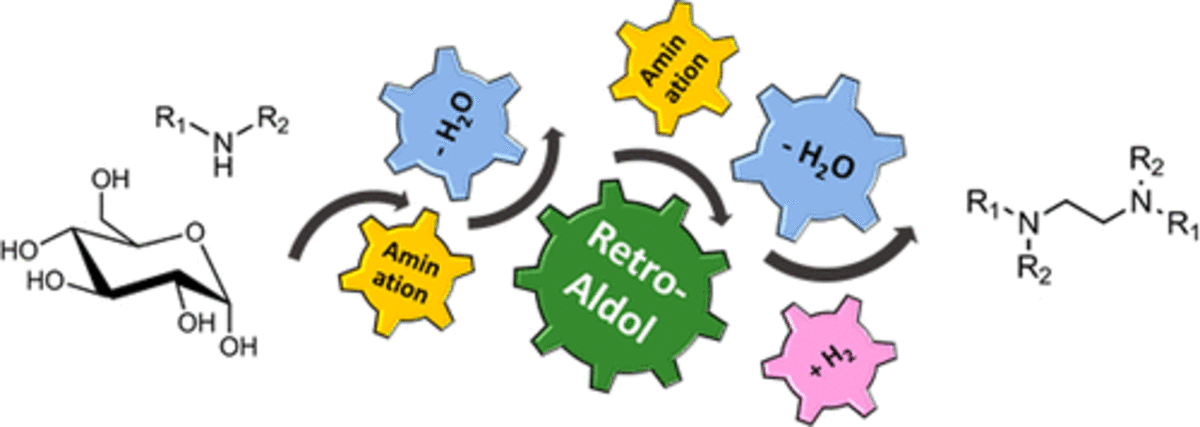
Catalytic Reductive Aminolysis of Reducing Sugars: Elucidation of Reaction Mechanism 06-04-2018
A catalytic reductive aminolysis of reducing monosaccharides into short ethylene diamines (or C2diamines) was recently communicated by our group (Pelckmans et al. Angew. Chem. Int. Ed.2017, 56, 14540–14544). Here, a general mechanism for this novel reaction is proposed based on the results of a combined experimental and theoretical study. The mechanism involves hemiaminal formation and subsequent dehydration to produce a zwitterionic iminium intermediate, which undergoes fast C–C cleavage as a result of intramolecular deprotonation, followed by hydrogenation of the formed unsaturated amine intermediate. The role of the amine in facilitating the C–C scission is explained in detail and supported by DFT calculations. Different catalysts, carbohydrate substrates, and reaction conditions were tested to validate the proposed reaction mechanism. Reductive aminolysis of sugars is preferably carried out in the presence of a passivated silica(-alumina) supported Ni catalyst and an alkyl amine using 75–85 bar H2 at 125–130 °C. The water content in the reaction mixture should be kept below 33 wt % to favor dehydration equilibria in the mechanism, while the amine-to-glucose molar ratio should be kept high, preferably larger than 6, to favor the amination equilibria. The reaction rate experiences a strong solvent dependency. For instance, the presence of MeOH enhances the rate of C2 diamine formation, as compared to the use of tetrahydrofuran (THF). DFT calculations show that presence of MeOH beneficially affects both the kinetics of the nucleophilic amine attack and the C–C bond scission. These selective rate enhancements result in a 2- to 3-fold increase of the C2 diamine yield. Among a series of aminating agents, reductive aminolysis with N-methylethanolamine (MEOA) shows a 92 C% yield to the corresponding C2 diamine (BHEDMEDA). The high yield is explained by the formation of a heterocyclic oxazolidine intermediate. Since its formation occurs H2 free, a two-step one-pot production protocol, decoupling C–C scission and hydrogenation, is proposed to achieve highest C2 diamine yield.
Structural characterization of a non-heme iron active site in zeolites that hydroxylates methane 02-04-2018
Iron-containing zeolites exhibit unprecedented reactivity in the low-temperature hydroxylation of methane to form methanol. Reactivity occurs at a mononuclear ferrous active site, α-Fe(II), that is activated by N2O to form the reactive intermediate α-O. This has been defined as an Fe(IV)=O species. Using nuclear resonance vibrational spectroscopy coupled to X-ray absorption spectroscopy, we probe the bonding interaction between the iron center, its zeolite lattice-derived ligands, and the reactive oxygen. α-O is found to contain an unusually strong Fe(IV)=O bond resulting from a constrained coordination geometry enforced by the zeolite lattice. Density functional theory calculations clarify how the experimentally determined geometric structure of the active site leads to an electronic structure that is highly activated to perform H-atom abstraction.
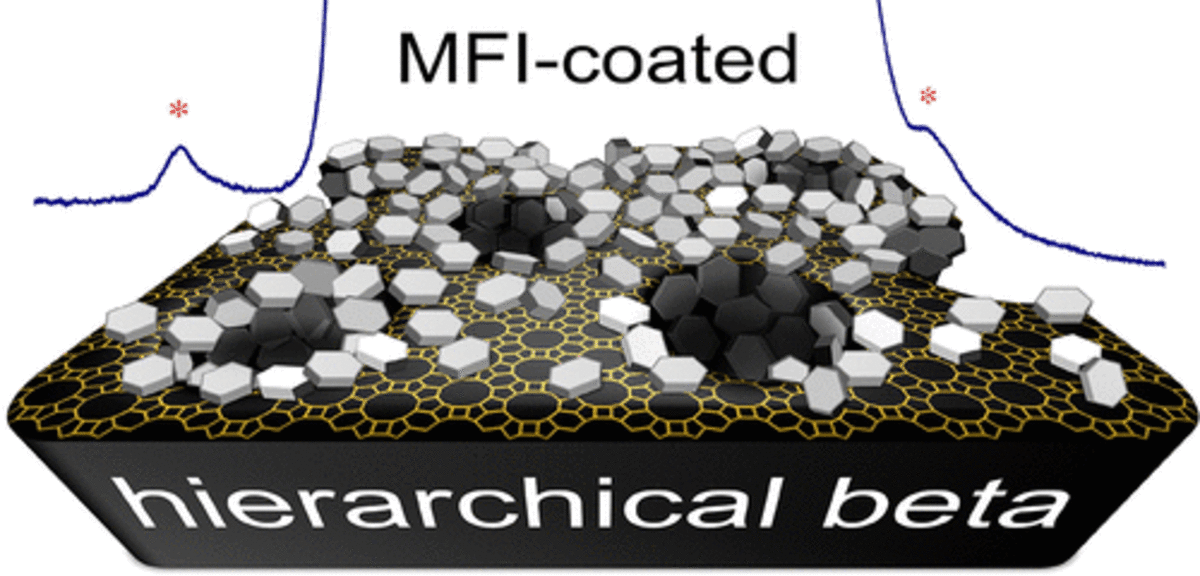
Recrystallization on Alkaline Treated Zeolites in the Presence of Pore-Directing Agents 14-03-2018
In previous works aiming at understanding the mesoporous network after alkaline treatment in the presence of organic additives, conventional bulk characterization techniques led to the conclusion that the dissolved zeolite does not undergo any kind of recrystallization [Verboekend, D., Cryst. Growth. Des. 2013, 13, 5025−5035]. Here for the first time, we demonstrate using the data obtained from 1H and 129Xe NMR spectroscopy that such recrystallization does occur, which leads to the formation of a very thin coating of the mesopore walls. This demonstration is done on a beta (BEA) zeolite treated in the presence of TPA+ in an alkaline solution. The formation of a small amount of nanosized crystals or embryonic phases of silicalite-1 (MFI) zeolite is evidenced, as well as their homogeneous dispersion on the mesoporous surface of the beta zeolite. We think that these results may explain why a homogeneous mesopore size distribution is obtained, when organic pore-directing agents are used in the zeolite hierarchization process performed in an alkaline medium
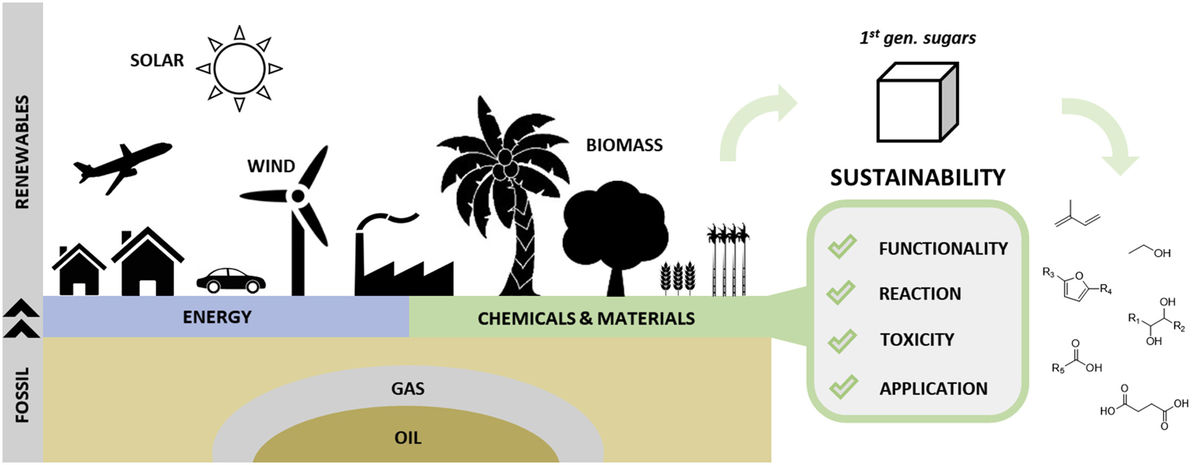
Straightforward sustainability assessment of sugar-derived molecules from first-generation biomass 16-02-2018
Today, there is a general consensus in academic literature that second generation biomassis the only valuable carbohydrate resource for non-food applications. In the meantime, fermentation of sugars towards bio-ethanol, mainly from first generation biomass, is becoming widespread at an industrial level. This paper tries to investigate if there can be a valuable role for edible resources (here: sugars) in the chemical industry without affecting the food security. Moreover, a connection is proposed between a broad range of multiple technologies and sustainable resources, with main attention to the native C skeleton and functionality of biomass. Going deeper in sustainability, this paper selected four criteria, taking into account the entire valorisation route, to apply to the most promising carbohydrate-derived molecules. By doing this, the most promising chemicals and working points from a sustainable point of view are highlighted.
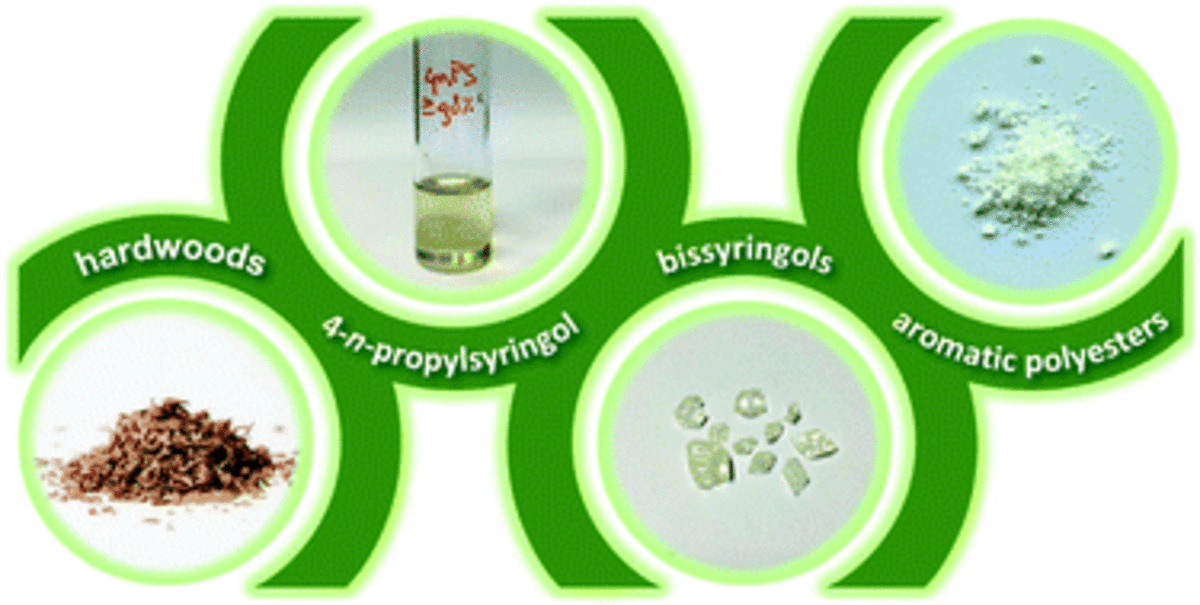
Promising bulk production of a potentially benign bisphenol A replacement from a hardwood lignin platform† 01-02-2018
A full lignin-to-chemicals valorisation chain – from hardwood over bissyringols to aromatic polyesters (APEs) – is established for renewable 4-n-propylsyringol (PS), the main product from catalytic hydrogenolysis of (native) hardwood lignin. To do so, reagent-grade PS was produced from birch wood via reductive catalytic fractionation (RCF) and isolated in 34 wt% yield on lignin basis. Additional early-stage theoretical calculations, based on both relative volatility (α) and distillation resistance (Ω) as well as Aspen Plus® simulations, predict that the isolation of PS by means of distillation is economically feasible at industrial scales ($85–95 per ton of propylphenolics at 200–400 kt a−1 scale). Subsequent stoichiometric acid-catalysed condensation with formaldehyde unveils a remarkably high 92 wt% selectivity towards the dimer 3,3′-methylenebis(4-n-propylsyringol) (m,m′-BSF-4P), which is isolated in >99% purity by facile single-step crystallisation. The striking dimer selectivity is ascribed to the synergetic interplay between the activating methoxy groups and the oligomerisation-inhibiting propyl chain. Next, an in vitro human oestrogen receptor α (hERα) assay was performed to ensure safe(r) chemical design. The bissyringyl scaffold displays reduced potency (∼19–45-times lower affinity than bisphenol A) and lower efficacy (∼36–45% of BPA's maximum activity). Lastly, to assess the functionality of the safe(r) bissyringol scaffold, it was converted into an APE. The APE displays a Mw = 43.0 kDa, Mn = 24.4 kDa, Tg = 157 °C and Td,5% = 345 °C. In short, (i) the feasibility and scalability of the feedstock, (ii) the simplified process conditions, (iii) the reduced in vitro oestrogenicity, and (iv) the functionality towards polymerisation, make this bissyringol a renewable and potentially benign bisphenol replacement, capable for production at bulk scale.
Catalytic gas-phase production of lactide from renewable alkyl lactates 22-01-2018
A new route to lactide, key building block of the bioplastic polylactic acid, is proposed via a continuous catalytic gas-phase transesterification of renewable alkyl lactates in a scalable fixed-bed setup. Supported TiO2/SiO2 catalysts are highly selective to lactide, with only minimal lactide racemization. The solvent-free process allows for easy product separation and recycling of unconverted alkyl lactates and recyclable lactyl intermediates. The catalytic activity of TiO2/SiO2 catalysts was strongly correlated to their optical properties by DR UV-VIS spectroscopy. Catalysts with high band gap energy of the supported TiO2 phase, indicative of a high surface spreading of isolated Ti centers, show the highest turnover frequency per Ti site.
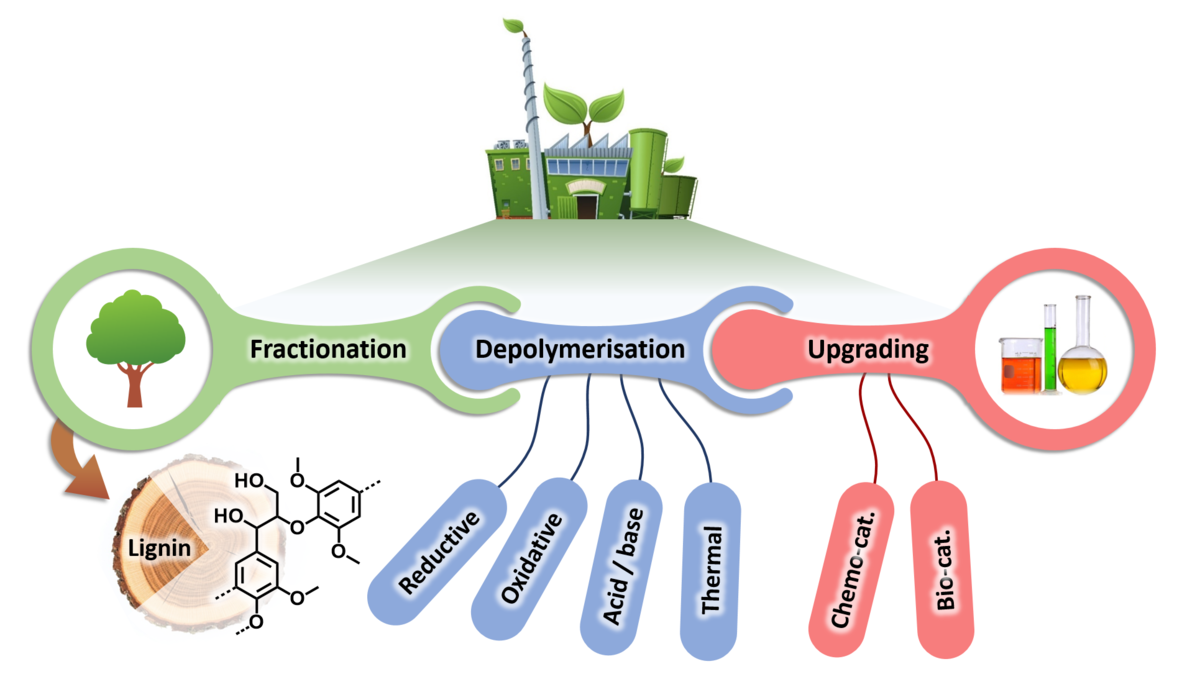
Chemicals from lignin: an interplay of lignocellulose fractionation, depolymerisation, and upgrading 10-01-2018
Abstract
In pursuit of more sustainable and competitive biorefineries, the effective valorisation of lignin is key. An alluring opportunity is the exploitation of lignin as a resource for chemicals. Three technological biorefinery aspects will determine the realisation of a successful lignin-to-chemicals valorisation chain, namely (i) lignocellulose fractionation, (ii) lignin depolymerisation, and (iii) upgrading towards targeted chemicals. This review provides a summary and perspective of the extensive research that has been devoted to each of these three interconnected biorefinery aspects, ranging from industrially well-established techniques to the latest cutting edge innovations. To navigate the reader through the overwhelming collection of literature on each topic, distinct strategies/topics were delineated and summarised in comprehensive overview figures. Upon closer inspection, conceptual principles arise that rationalise the success of certain methodologies, and more importantly, can guide future research to further expand the portfolio of promising technologies. When targeting chemicals, a key objective during the fractionation and depolymerisation stage is to minimise lignin condensation (i.e. formation of resistive carbon–carbon linkages). During fractionation, this can be achieved by either (i) preserving the (native) lignin structure or (ii) by tolerating depolymerisation of the lignin polymer but preventing condensation through chemical quenching or physical removal of reactive intermediates. The latter strategy is also commonly applied in the lignin depolymerisation stage, while an alternative approach is to augment the relative rate of depolymerisation vs. condensation by enhancing the reactivity of the lignin structure towards depolymerisation. Finally, because depolymerised lignins often consist of a complex mixture of various compounds, upgrading of the raw product mixture through convergent transformations embodies a promising approach to decrease the complexity. This particular upgrading approach is termed funneling, and includes both chemocatalytic and biological strategies.
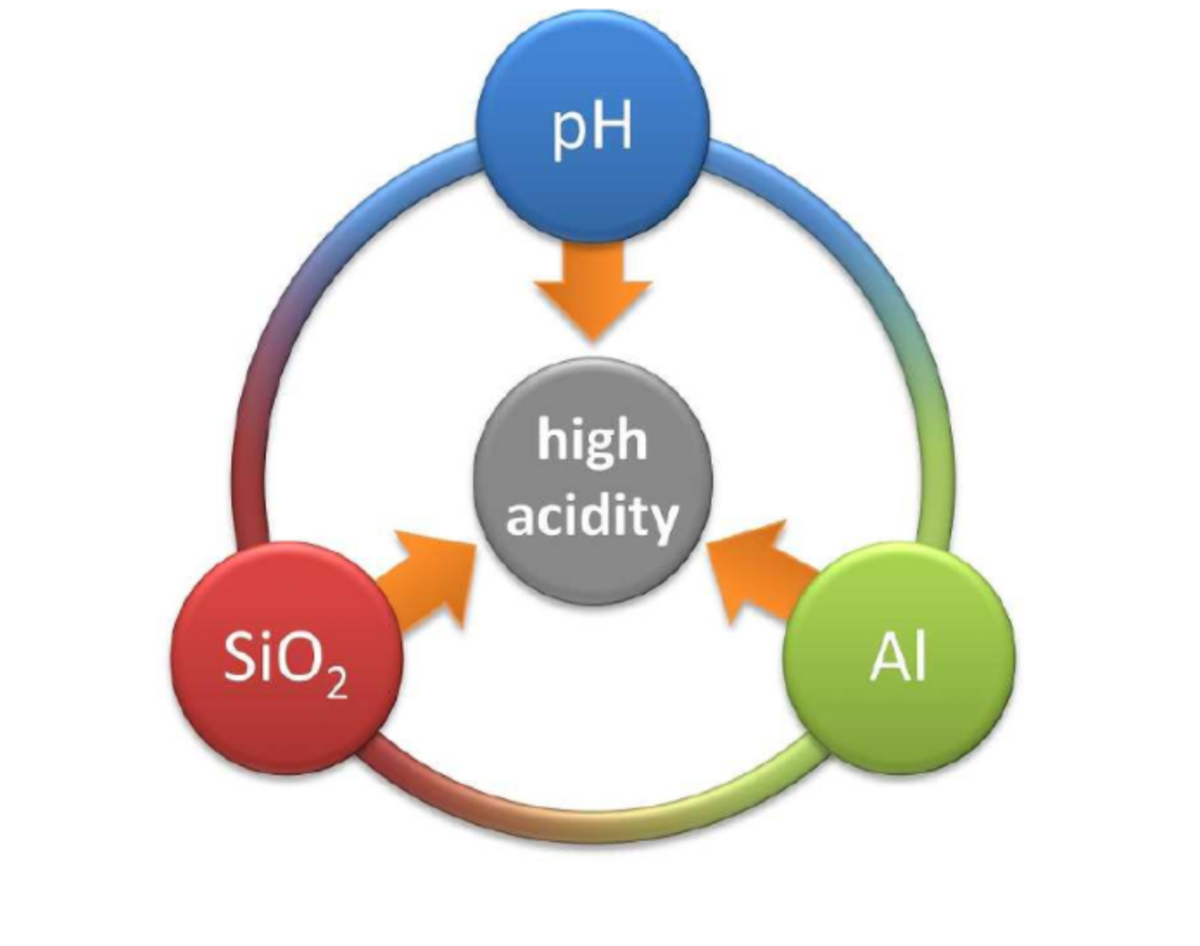
Synthetic & Catalytic Potential of Amorphous Mesoporous Aluminosilicates Prepared by Post‐Synthetic Aluminations of Silica in Aqueous Media 10-01-2018
Abstract
Amorphous aluminosilicates catalysts have been used industrially on a large scale for almost a century. However, the influence of the pH on the alumination of silica in aqueous solutions has remained largely unclear. Herein, room temperature aluminations of different mesoporous amorphous silicas (fumed silica, dried silica gel, SBA-15, MCM-41, and COK-12) with aqueous solutions of various pH (3-13) are explored. The aqueous solutions are prepared using different aluminum sources (Al(NO3)3 or NaAlO2) and alkaline additives (NaOH or NH4OH). The decoupling of pH and Al source using alkaline additives results in a vast experimental potential to prepare unique aluminosilicates, where an important role is played by the pH development during the treatment. The bulk and surface composition, acidity, aluminum coordination, morphology, hydrothermal stability, and porosity of the obtained materials are characterized. Optimal samples possess large surface areas and superior acidities (up to 50% higher) and outstanding stabilities compared to aluminosilicates prepared via state of the art methods. The obtained materials are evaluated in a series of acid-catalyzed model reactions. The potential of the obtained materials is emphasized by the similar or superior acidity and catalytic performance compared to several benchmark industrial silica-alumina-based catalysts.
Perspective on Lignin Oxidation: Advances, Challenges, and Future Directions 08-01-2018
Lignin valorization has gained increasing attention over the past decade. Being the world’s largest source of renewable aromatics, its valorization could pave the way towards more profitable and more sustainable lignocellulose biorefineries. Many lignin valorization strategies focus on the disassembly of lignin into aromatic monomers, which can serve as platform molecules for the chemical industry. Within this framework, the oxidative conversion of lignin is of great interest because it enables the formation of highly functionalized, valuable compounds. This work provides a brief overview and critical discussion of lignin oxidation research. In the first part, oxidative conversion of lignin models and isolated lignin streams is reviewed. The second part highlights a number of challenges with respect to the substrate, catalyst, and operating conditions, and proposes some future directions regarding the oxidative conversion of lignin.
Advancing the Use of Sustainability Metrics in ACS Sustainable Chemistry & Engineering 02-01-2018
2017
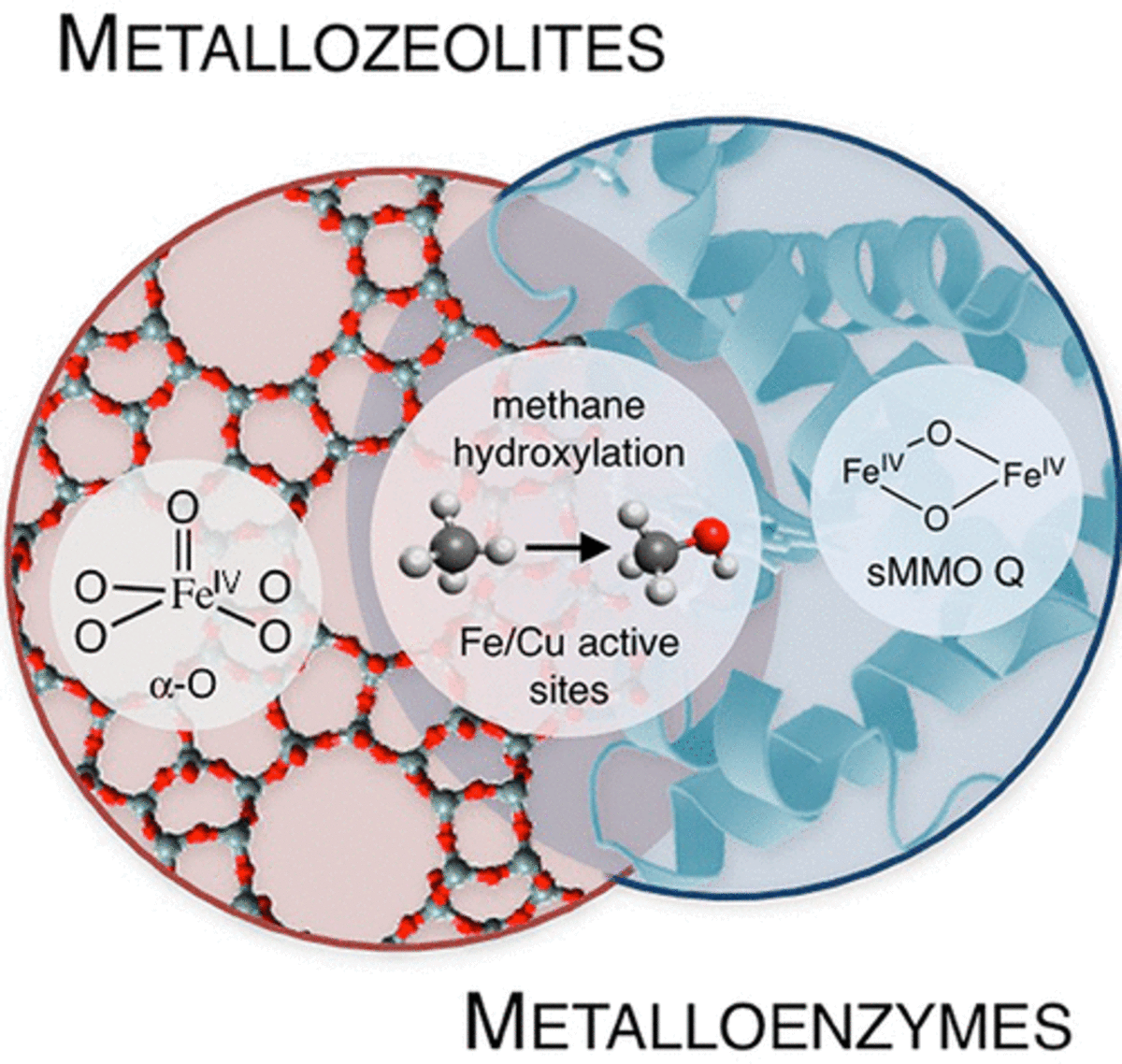
Iron and Copper Active Sites in Zeolites and Their Correlation to Metalloenzymes 19-12-2017
Abstract
Metal-exchanged zeolites are a class of heterogeneous catalysts that perform important functions ranging from selective hydrocarbon oxidation to remediation of NOx pollutants. Among these, copper and iron zeolites are remarkably reactive, hydroxylating methane and benzene selectively at low temperature to form methanol and phenol, respectively. In these systems, reactivity occurs at well-defined molecular transition metal active sites, and in this review we discuss recent advances in the spectroscopic characterization of these active sites and their reactive intermediates. Site-selective spectroscopy continues to play a key role, making it possible to focus on active sites that exist within a distribution of inactive spectator metal centers. The definition of the geometric and electronic structures of metallozeolites has advanced to the level of bioinorganic chemistry, enabling direct comparison of metallozeolite active sites to functionally analogous Fe and Cu sites in biology. We identify significant parallels and differences in the strategies used by each to achieve high reactivity, highlighting potentially interesting mechanisms to tune the performance of synthetic catalysts
Fed-batch production of green coconut hydrolysates for high-gravity second-generation bioethanol fermentation with cellulosic yeast 01-11-2017
Abstract
The residual biomass obtained from the production of Cocos nucifera L. (coconut) is a potential source of feedstock for bioethanol production. Even though coconut hydrolysates for ethanol production have previously been obtained, high-solid loads to obtain high sugar and ethanol levels remain a challenge. We investigated the use of a fed-batch regime in the production of sugar-rich hydrolysates from the green coconut fruit and its mesocarp. Fermentation of the hydrolysates obtained from green coconut or its mesocarp, containing 8.4 and 9.7% (w/v) sugar, resulted in 3.8 and 4.3% (v/v) ethanol, respectively. However, green coconut hydrolysate showed a prolonged fermentation lag phase. The inhibitor profile suggested that fatty acids and acetic acid were the main fermentation inhibitors. Therefore, a fed-batch regime with mild alkaline pretreatment followed by saccharification, is presented as a strategy for fermentation of such challenging biomass hydrolysates, even though further improvement of yeast inhibitor tolerance is also needed.

Low‐Temperature Reductive Aminolysis of Carbohydrates to Diamines and Aminoalcohols by Heterogeneous Catalysis 13-10-2017
Abstract
Short amines, such as ethanolamines and ethylenediamines, are important compounds in today's bulk and fine chemicals industry. Unfortunately, current industrial manufacture of these chemicals relies on fossil resources and requires rigorous safety measures when handling explosive or toxic intermediates. Inspired by the elegant working mechanism of aldolase enzymes, a novel heterogeneously catalyzed process—reductive aminolysis—was developed for the efficient production of short amines from carbohydrates at low temperature. High-value bio-based amines containing a bio-derived C2 carbon backbone were synthesized in one step with yields up to 87 C%, in the absence of a solvent and at a temperature below 405 K. A wide variety of available primary and secondary alkyl- and alkanolamines can be reacted with the carbohydrate to form the corresponding C2-diamine. The presented reductive aminolysis is therefore a promising strategy for sustainable synthesis of short, acyclic, bio-based amines.
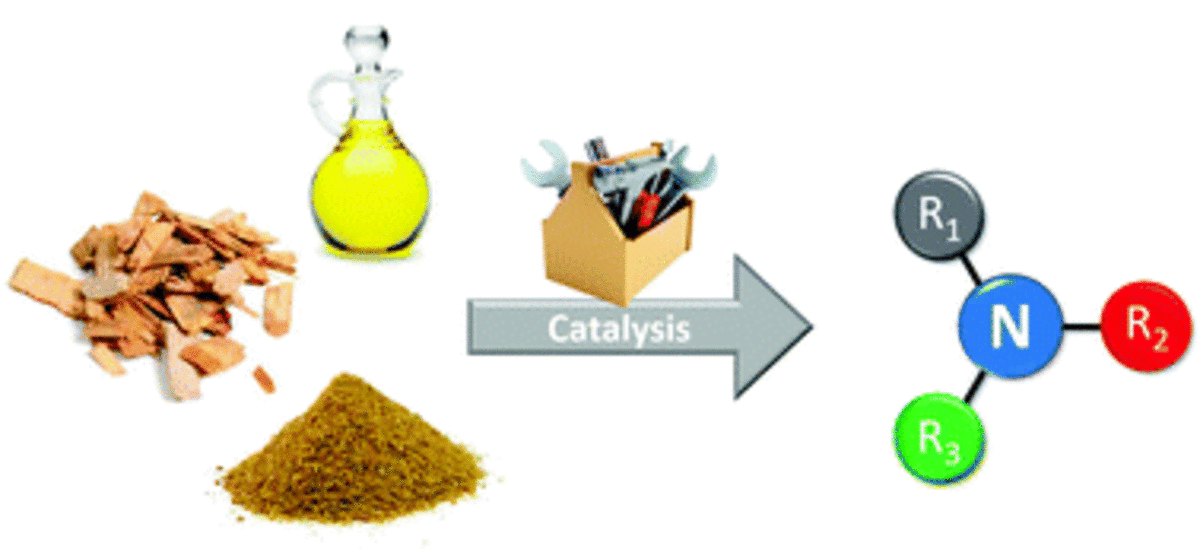
Bio-based amines through sustainable heterogeneous catalysis 18-09-2017
Abstract
The production of amines from biomass is a growing field of interest. Particularly the amination of bio-based alcohols receives a lot of attention. In this review, we discuss recent progress in the development of efficient heterogeneous catalysts. The substrate scope for the production of bio-based amines is not limited to (hemi)cellulosic alcohols. Other platform chemicals that originate from different biomass fractions, such as lignin, oils, chitin and protein, are also suitable feedstock for the production of amines. This comprehensive review first provides an overview of the available bio-based feedstock candidates. The following section is devoted to the sustainable reaction routes that are available to carry out the desired amination reactions. Next, state-of-the-art technologies are summarized for each substrate class, focussing on heterogeneous catalysis. Special attention is dedicated to the sustainability of the discussed reaction routes. Finally, a critical discussion is provided, together with current challenges and future perspectives regarding the industrial production of bio-based amine chemicals.
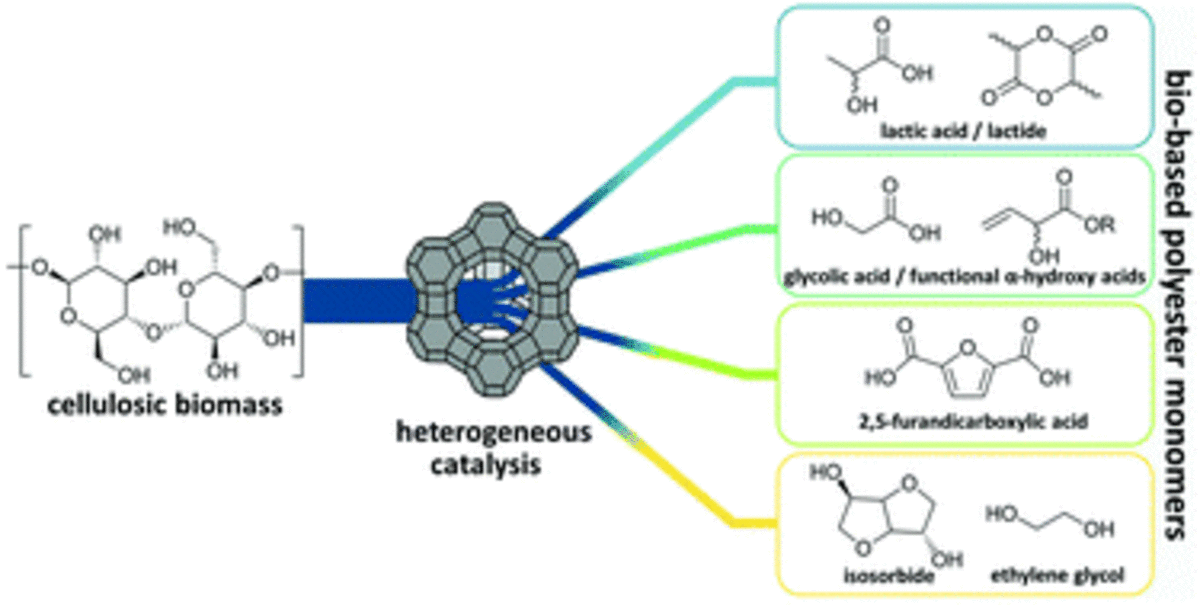
Heterogeneous catalysis for bio-based polyester monomers from cellulosic biomass: advances, challenges and prospects 07-09-2017
Abstract
It is a 21st century challenge to develop a more sustainable chemical industry where fossil-based resources are, where possible, preferentially replaced by renewable alternatives. Bio-based polymers, in particular those derived from cellulose or other carbohydrates, are often considered benign alternatives for petrochemical plastics. The majority of bioplastic precursors are currently derived from fermentation or biotechnology. Chemocatalytic routes to both similar and new polymer building blocks are emerging in an effort to mitigate challenges related to carbohydrate fermentation, such as waste generation and costly product purification. This review critically surveys recent developments in applying heterogeneous catalysis for the production of bio-based polyester monomers from cellulose or cellulose-derived carbohydrates. Highlighted target molecules include various α-hydroxy acids or esters (e.g. lactic and glycolic acid, lactide and methyl vinyl glycolate), furandicarboxylic acid, ethylene glycol and isosorbide. The production of lactic acid from glycerol will exceptionally be included as well, as an oversupply of glycerol might contribute to non-negligible amounts of lactic acid in the future. Where possible, remaining challenges and future prospects are highlighted.
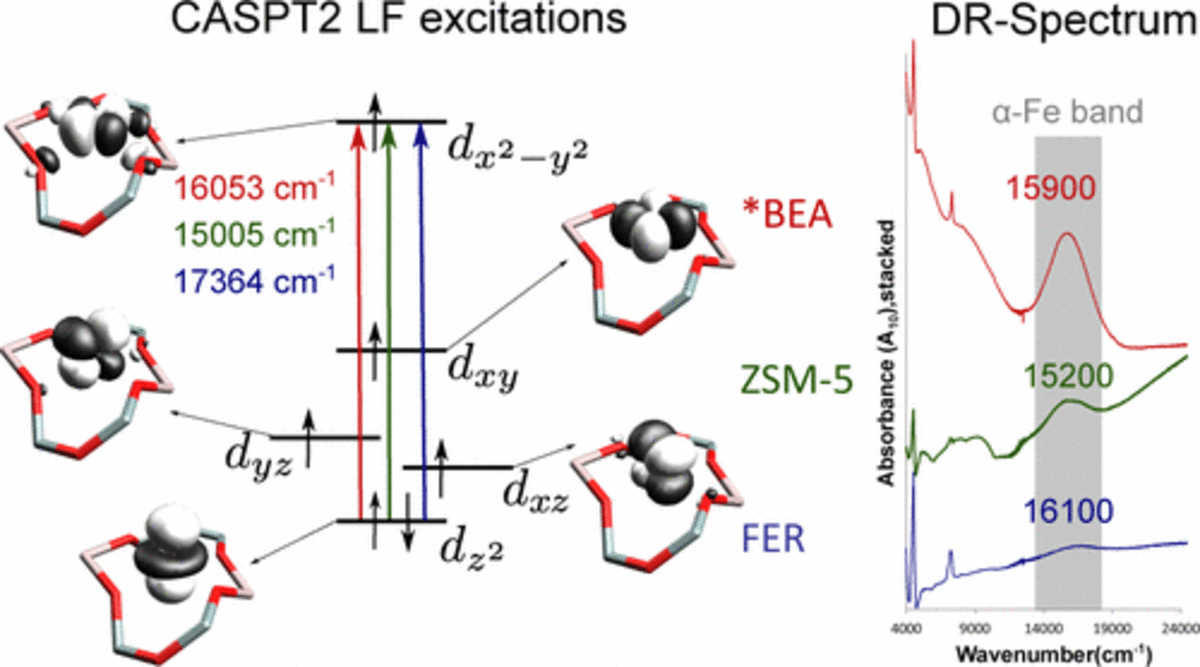
Identification of α-Fe in High-Silica Zeolites on the Basis of ab Initio Electronic Structure Calculations 24-08-2017
Abstract
α-Fe is the precursor of the reactive FeIV═O core responsible for methane oxidation in Fe-containing zeolites. To get more insight into the nature and stability of α-Fe in different zeolites, the binding of Fe(II) at six-membered-ring cation exchange sites (6MR) in ZSM-5, zeolite beta, and ferrierite was investigated using DFT and multireference ab initio methods (CASSCF/CASPT2). CASPT2 ligand field (LF) excitation energies of all sites were compared with the experimental DR-UV–vis spectra reported by Snyder et al. From this comparison it is concluded that the 16000 cm–1 band of α-Fe, observed in all three zeolites, can uniquely be assigned to a high-spin square-planar (SP) Fe(II) located at a 6MR with an Al–Si–Si–Al sequence, where the Al atoms are positioned opposite in the ring and as close to each other as possible. The stability of such conformations is also confirmed by the binding energies obtained from DFT. The bands at 10000 cm–1 in the experimental spectra, assigned to spectator Fe(II), are attributed to six-coordinated trigonal-prismatic Fe(II) species, as calculated for the γ-site in ZSM-5. The entatic effect of the zeolite lattice on the stability of the SP sites was investigated by making use of the unconstrained Fe(II) model complex FeL2 (with L = [Al(OH)4]−). The SP conformer is approximately 2 kcal/mol more stable than the tetrahedral form, indicating that the SP coordination environment of α-Fe is not imposed by the zeolite lattice but rather electronically preferred by Fe(II) in the environment of four O ligands. A significant contribution to the stability of the SP conformer is provided by mixing of the doubly occupied 3dz2 orbital with the higher lying 4s
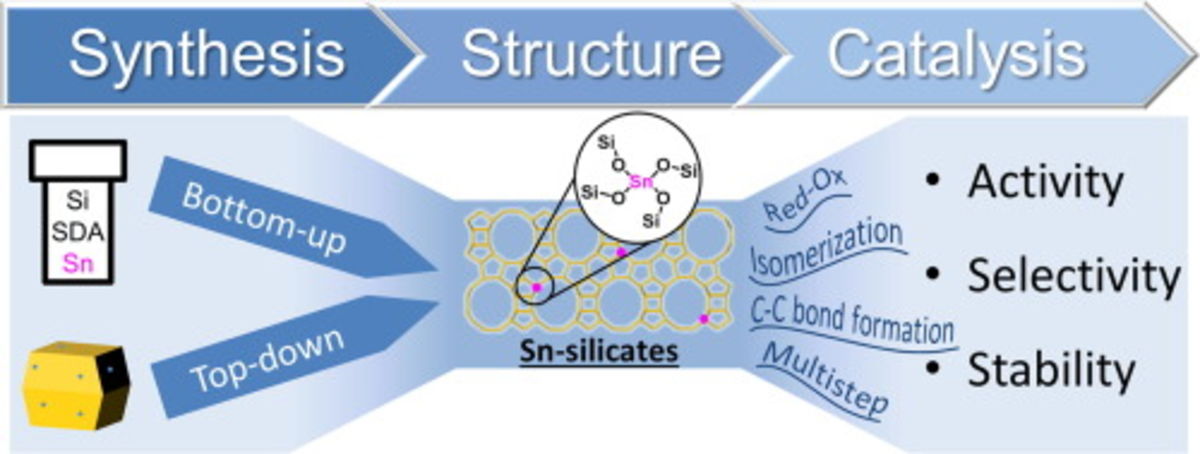
Lewis acid catalysis on single site Sn centers incorporated into silica hosts 15-07-2017
Abstract
Tetrahedral Sn built into microporous silica frameworks such as zeolites and structured mesoporous silica can be used as heterogeneous Lewis acid catalysts. These materials have recently attracted much attention, as they show remarkable activity and selectivity in a wide range of reactions. A prominent example is the conversion of carbohydrates into platform and commodity chemicals such as lactic acid or alkyl lactates, where the activity and selectivity of Sn-based materials remains unsurpassed compared to Sn-free catalysts. Some of the materials show water-tolerant behavior and can therefore also be used in aqueous systems. In this work, a literature overview regarding synthesis of Sn-containing silica materials is given, as well as a synopsis of the characterization tools which can be used to unravel the structure of the catalytic active site. The application of such Sn-containing materials for diverse catalytic reactions is reviewed, with special emphasis on the effects of the catalyst characteristics on the catalytic activity and stability.
Barriers and Chemistry in a Bottle: Mechanisms in Today’s Oxygen Barriers for Tomorrow’s Materials 28-06-2017
Abstract
The stability of many organic compounds is challenged by oxidation reactions with molecular oxygen from the air in accordance with thermodynamics. Whereas glass or metal containers may protect such products, these packaging types also offer severe disadvantages over plastics. Large-scale packaging, especially for food and beverage industries, has shifted towards polymeric materials with passive and active oxygen barrier technologies over the last decades. Even though patent literature is flooded with innovative barrier systems, the mechanisms behind them are rarely reported. In a world where packaging requirements regarding recyclability and safety are continuously getting stricter, accompanied by the appearance of emerging applications for plastic oxygen barriers (such as organic semi-conductors), research towards new materials seems inevitable. To this cause, proper in-depth knowledge of the existing solutions is a prerequisite. This review therefore attempts to go deep into the problems at hand and explain the chemistry behind the existing solution strategies and finally discusses perspectives suggesting new applications such as organic light-emitting diodes (OLEDs) and solar cells.
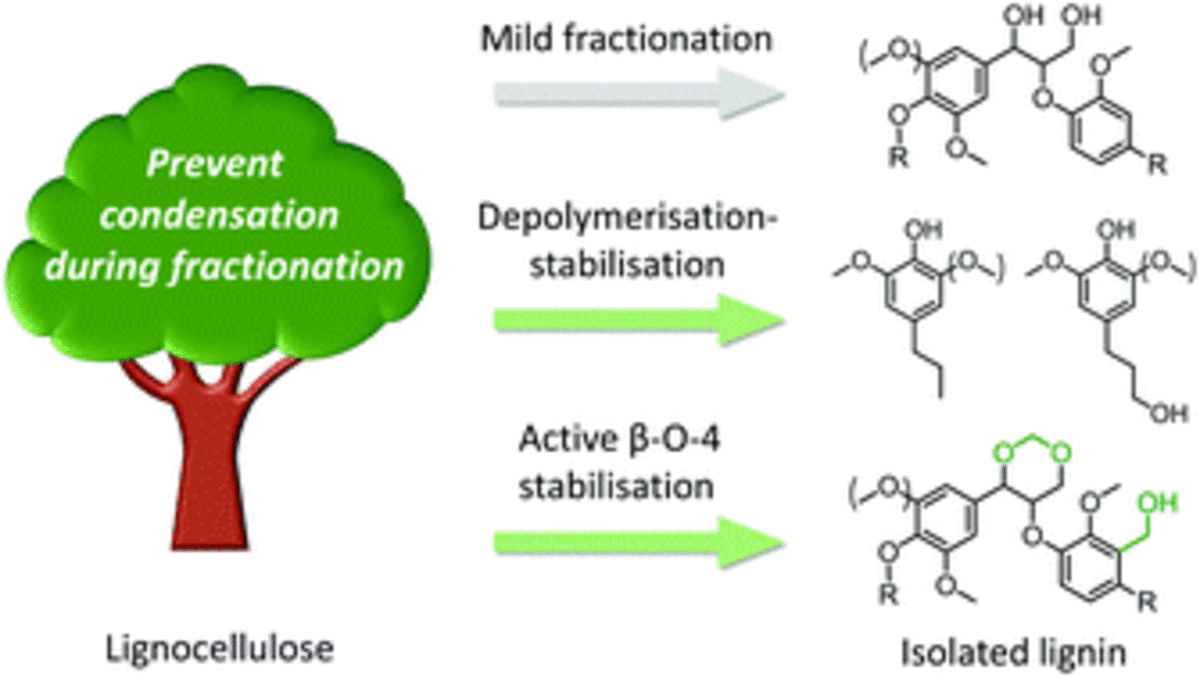
Lignin-first biomass fractionation: the advent of active stabilisation strategies 22-06-2017
Abstract
During the past decade, a growing scientific community is eagerly seeking for effective lignin valorisation approaches. Thought-out utilisation of the world's most abundant resource of bio-aromatics could substantially augment the profitability of future lignocellulosic biorefineries. From a multitude of complementary valorisation opportunities (e.g., composite materials, dispersants, carbon fibres), harnessing lignin as renewable feedstock for chemicals forms an alluring challenge. However, a root cause that hampers its full exploitation, is an historically grown and deeply ingrained (mis)conception, stating that lignin is merely considered as a subordinate opportunity to derive some extra added-value, without being of primary concern. Unfortunately, this mind-set doesn't reckon with the fact that lignin is prone to irreversible degradation, leading to recalcitrant condensed structures which are difficult to disassemble into a handful of chemicals. In response, new biorefinery schemes are being developed, wherein the valorisation of lignin is regarded as one of the primary targets. At the heart of these alternative biorefineries are fractionation strategies that aim to prevent structural lignin degradation, hereby enabling an efficient and selective lignin-to-aromatic conversion. Of particular interest are fractionation methods that implement active stabilisation mechanisms that prohibit the problem of lignin condensation, without compromising the structural integrity of the carbohydrates. This new and emerging biorefinery paradigm is termed lignin-first, and includes two distinct strategies to actively prevent structural degradation during biomass fractionation, namely (i) tandem depolymerisation–stabilisation of native lignin, and (ii) active preservation of β-O-4 bonds.
ACS Sustainable Chemistry & Engineering’s Impact Factor Continues To Rise 16-06-2017
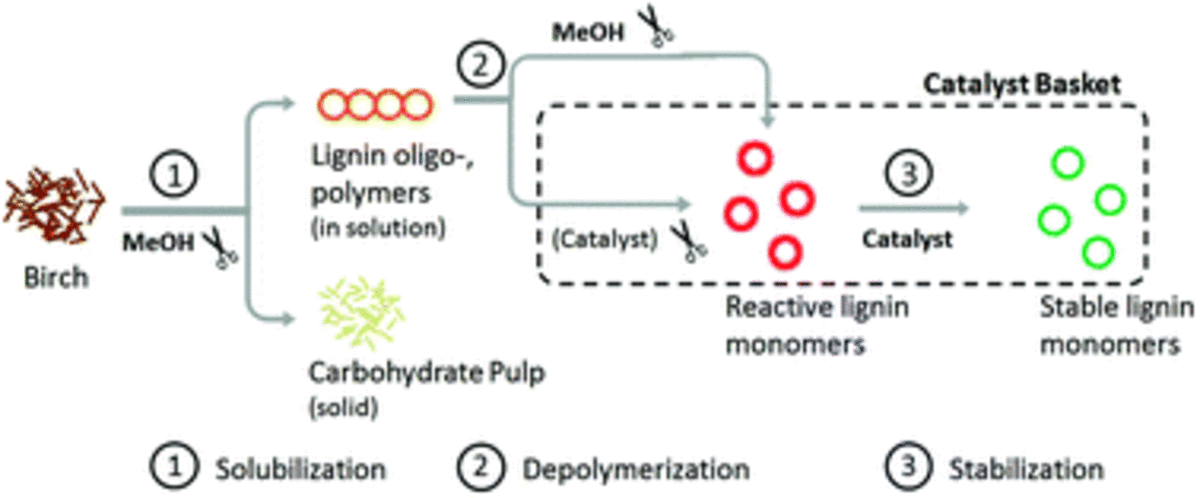
Integrating lignin valorization and bio-ethanol production: on the role of Ni-Al 2 O 3 catalyst pellets during lignin-first fractionation 13-06-2017
Abstract
Reductive catalytic fractionation (RCF) of lignocellulosic biomass is a promising lignin-first biorefinery strategy that yields nearly theoretical amounts of phenolic monomers by performing solvolytic delignification and lignin depolymerization in presence of a reducing catalyst, here Ni-Al2O3. This contribution attempts to elucidate the precise role of the catalyst, with respect to lignin solubilization, depolymerization and stabilization. The presented experiments unambiguously show that the solvent, under the applied conditions (methanol at 523 K), is largely responsible for both the initial release of lignin fragments from the lignocellulose matrix and their further depolymerization to shorter phenolics. The catalyst is merely responsible for the hydrogenation of reactive unsaturated side-chains in the solubilized lignin intermediates, leading to the formation of stable phenolic monomers and short oligomers. This catalytic reduction essentially prevents undesirable repolymerization reactions towards a condensed (high MW) lignin product. Since a solid–solid interaction between catalyst and wood is not required for the stabilization of soluble lignin products, the use of catalyst pellets (confined in a reactor basket) as a means to facilitate catalyst recuperation and clean pulp production, is justified. After optimizing the process with regard to mass transfer limitations, above 90% delignification of birch wood is achieved, producing a lignin oil that contains over 40% phenolic monomers, of which 70% consists of 4-n-propanolguaiacol and -syringol. In addition, multiple catalyst recycling experiments are successfully performed. Catalyst fouling is appointed as a primary cause of deactivation, though catalytic activity can be fully restored by thermal H2-treatment. Simple filtration of the reaction mixture finally affords a catalyst-free and delignified pulp, containing most of the initial cellulose and hemicellulose (93% glucose and 83% xylose retention). This pulp is converted into bio-ethanol, through simultaneous saccharification (accelerase trio enzyme mix) and fermentation (GSE16-T18-HAA1* yeast). A first and unprecedented trial led to a 73% bio-ethanol yield.
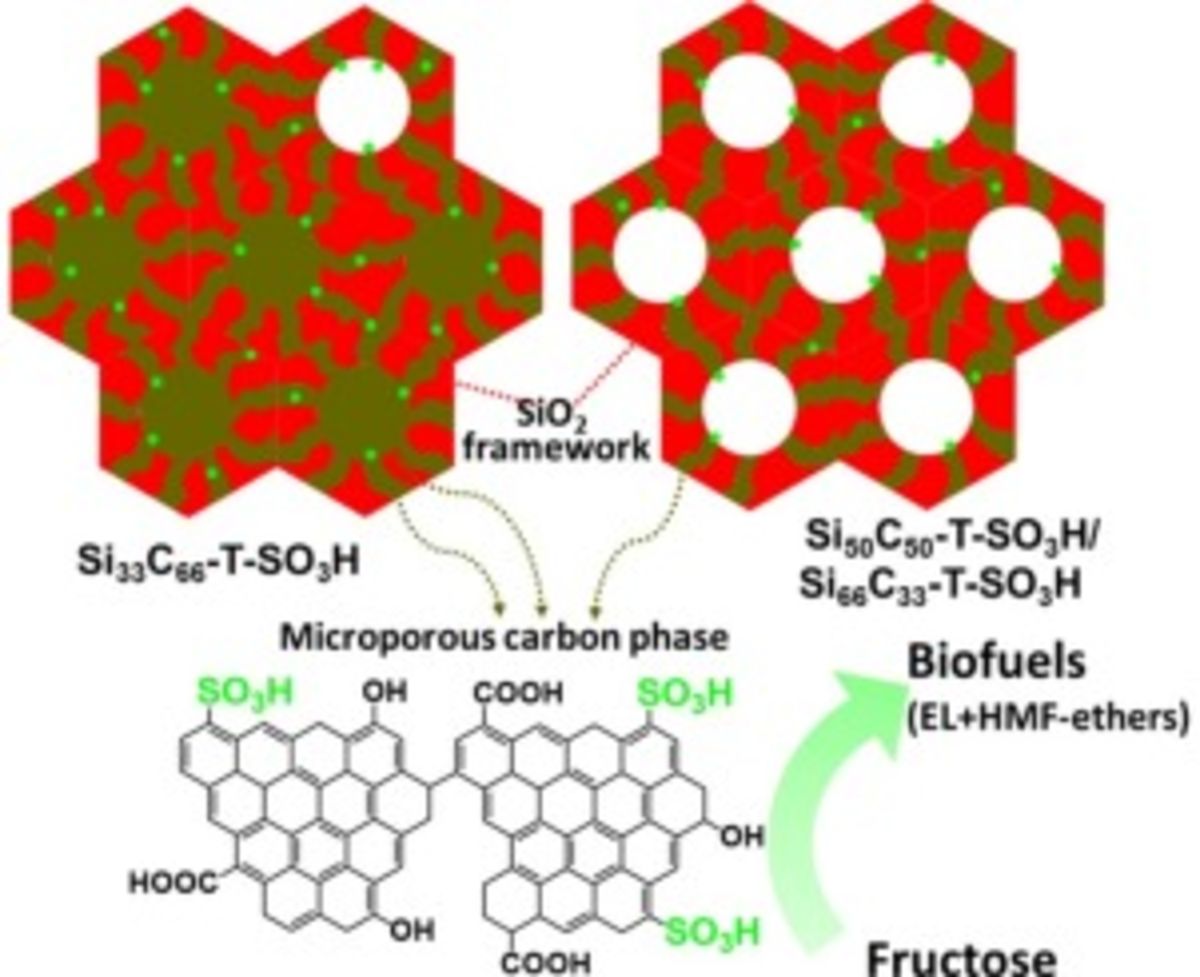
Acidic mesostructured silica-carbon nanocomposite catalysts for biofuels and chemicals synthesis from sugars in alcoholic solutions 05-06-2017
Abstract
Sulfonated mesostructured silica-carbon nanocomposites with varying carbon content, acidic site density and porosity, obtained via the one-pot evaporation induced self-assembly (EISA) synthesis, were used here to convert sugars into useful chemicals and biofuel components in alcoholic solvent. The nanocomposites show a remarkable catalytic performance in ethanol, yielding up to 80%, predominantly ethyl levulinate, 5-ethoxymethylfurfural and 2-(diethoxymethyl)-5-(ethoxymethyl)furan. Fructose is the sugar substrate of choice, but the sulfonated composites are also able to convert di- and polymeric forms of fructose. Due to a lack of a glucose-to-fructose isomerization ability, the composites are unable to form the above products from the glucose resources (glucose and cellulose), ethyl glucoside being the dominant product from these feedstocks. The composite has a peculiar hierarchical pore architecture, which is stable on shelf in ambient for at least six years. While the mesoporosity facilitates entrance and fast transport (even of soluble poly-carbohydrates like inulin and cellulose polymers), the presence of microporosity is beneficial to attain fast sugar catalysis. Since the microporosity is associated with voids in the carbon phase (preferably pyrolyzed at 400 °C), composites with high carbon contents are preferred. Due to the fast transport, reactions with fructose in ethanol run in the chemical regime in the applied thermal conditions. Kinetic inspection of the reaction further clarifies the complex network of consequent and parallel reactions, demonstrating that HMF is the main precursor of humins, while the formation of EL directly from HMF should also be considered. While this observation corroborates the protective role of alcohols like ethanol, this work also concludes based on a series of reactions in different alcohols and water, that the presence of water plays a crucial role in the HMF-to-humins formation. While alcohols are known to stabilize HMF, the unprotected HMF is fairly stable in non-aqueous reaction circumstances like in tert-butanol solvent.
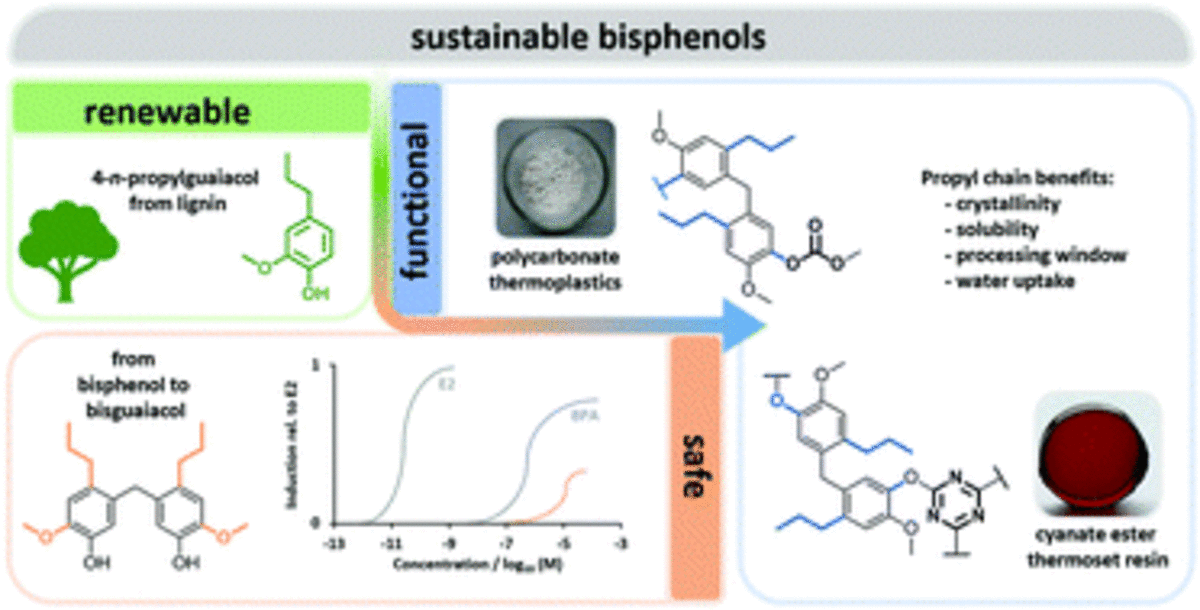
Sustainable bisphenols from renewable softwood lignin feedstock for polycarbonates and cyanate ester resins 27-04-2017
Abstract
The selective reductive catalytic depolymerisation of softwood lignin (e.g. pine, spruce) yields predominantly 4-n-propylguaiacol (4PG; 15–20 wt% on lignin basis), an interesting platform chemical for bio-based chemistry. This contribution specifically shows promising technical, sustainable and environmental advantages of such a bio-phenol for various polymer applications. The bisphenolic polymer precursor, 5,5′-methylenebis(4-n-propylguaiacol) (m,m′-BGF-4P), was therefore first synthesized by acid-catalysed condensation, and its synthesis and isolation are compared with shorter chain analogs, viz. 4-methyl- and 4-ethylguaiacol. A thorough GC-GPC/SEC analysis of the crude condensation mixture was developed to assess the purity of the isolated dimers. Isolation is done by a single-step crystallization, yielding 57 wt% of m,m′-BGF-4P in >99% purity. This pure m,m′-BGF-4P bisphenol displays a notably reduced potency to activate human estrogen receptor alpha (hERα; EC50 at 10−5 M) in comparison with commercial bisphenols, and is therefore useful for future polymer applications. As a proof of concept, polycarbonates and cyanate ester resins were prepared from m,m′-BGF-4P and compared to other bisphenols. The polycarbonate had Mn = 5182 g mol−1, Tg = 99 °C, Tm = 213 °C, Td,5% = 360 °C, and displayed improved processability in common solvents, as opposed to the methylated and ethylated bisguaiacols. A fully cured resin disk exhibited a Tg = 193 °C, Td,5% = 389 °C and a water uptake of only 1.18% after being immersed in 85 °C water for four days. These results underscore the potential of the intrinsic functionality of lignin-derived building blocks to transcend the scope of renewability.

Zeolites as sustainable catalysts for the selective synthesis of renewable bisphenols from lignin‐derived monomers 24-04-2017
Abstract
Alternative biobased bisphenols from lignocellulosic biomass are not only favorable to reduce the environmental impact of current petroleum-derived plastics, but they can be simultaneously beneficial for health issues related to bisphenol A (BPA). Additionally, conventional BPA synthesis entails a large excess of unrecoverable homogeneous acid catalyst (e.g., HCl) or unrecyclable thermolabile sulfonated resins. In this report, zeolites are proposed as recoverable and thermally stable solid acids for the Brønsted-acid-catalyzed condensation between 4-methylguaiacol and formaldehyde to selectively produce renewable bisphenols. It is found that the Brønsted-acid-site density plays a pivotal role for catalyst performance. In particular, the cheap and environmentally friendly FAU 40 exhibits outstanding activity (turnover frequency of 496 h−1) and selectivity (>95 %), outperforming even the best benchmark catalyst. Additionally, the zeolite can be easily recycled without activity loss after regeneration by coke burn-off. The catalytic zeolite system also seems very promising for other lignin-derived alkylphenols, alkylguaiacols, and alkylsyringols.
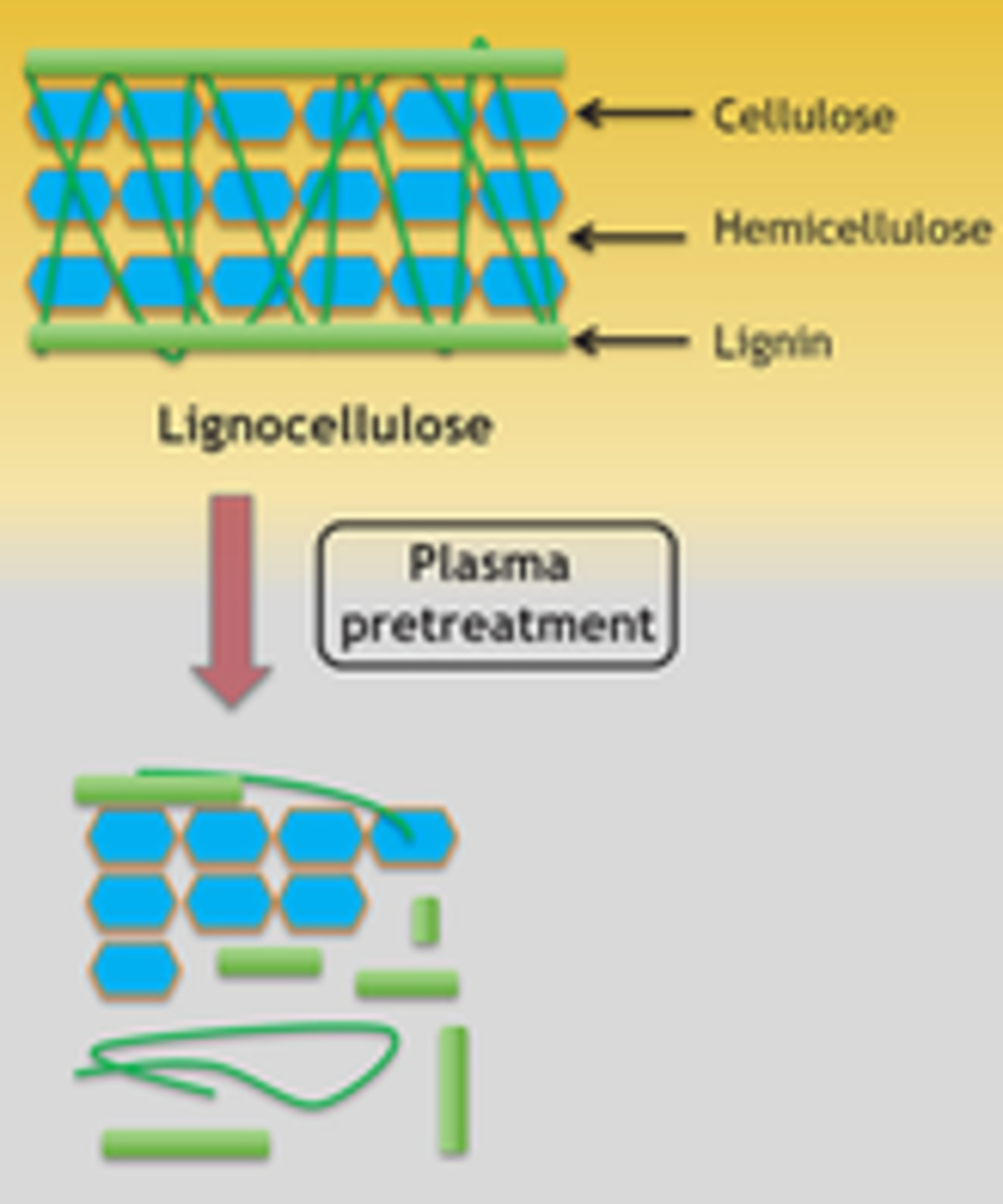
Unconventional Pretreatment of Lignocellulose with Low‐Temperature Plasma 10-01-2017
Abstract
Lignocellulose represents a potential supply of sustainable feedstock for the production of biofuels and chemicals. There is, however, an important cost and efficiency challenge associated with the conversion of such lignocellulosics. Because its structure is complex and not prone to undergo chemical reactions very easily, chemical and mechanical pretreatments are usually necessary to be able to refine them into the compositional building blocks (carbohydrates and lignin) from which value-added platform molecules, such as glucose, ethylene glycol, 5-hydroxymethylfurfural, and levulinic acid, and biofuels, such as bioderived naphtha, kerosene, and diesel fractions, will be produced. Conventional (wet) methods are usually polluting, aggressive, and highly energy consuming, so any alternative activation procedure of the lignocellulose is highly recommended and anticipated in recent and future biomass research. Lignocellulosic plasma activation has emerged as an interesting (dry) treatment technique. In the long run, in particular, in times of fairly accessible renewable electricity, plasma may be considered as an alternative to conventional pretreatment methods, but current knowledge is too little and examples too few to guarantee that statement. This review therefore highlights recent knowledge, advancements, and shortcomings in the field of plasma treatment of cellulose and lignocellulose with regard to the (structural and chemical) effects and impact on the future of pretreatment methods.
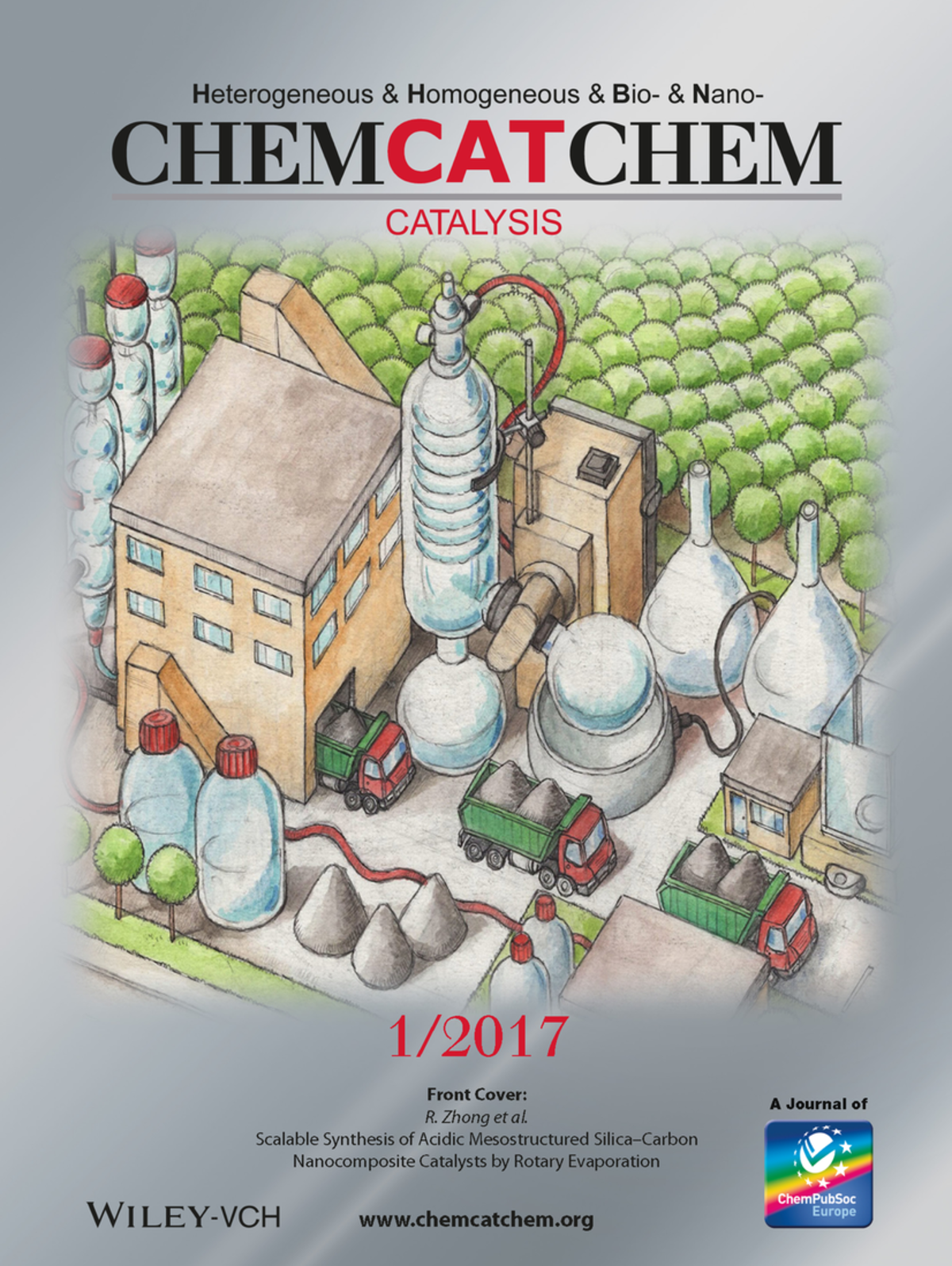
Scalable Synthesis of Acidic Mesostructured Silica–Carbon Nanocomposite Catalysts by Rotary Evaporation 09-01-2017
Abstract
A practical and scalable synthesis for the mass production of well-ordered mesoporous silica–carbon composites by using a fast rotary-evaporation-induced self-assembly method in the absence of any additional support is presented.
Four Years of ACS Sustainable Chemistry & Engineering: Reflections and New Developments 03-01-2017
Abstract
ACS Sustainable Chemistry & Engineering (ACS SCE) was launched in January 2013, with a scope that included green chemistry, green engineering, and the grand challenges for sustainability in the chemical enterprise. As Editors, we have been honored by the response of the research community to the journal. Submissions and published content have grown by an order of magnitude since our launch, and as our fourth year came to a close, we were approaching 800 published articles per year. These publications are being widely cited, and the journal’s impact factor, which currently stands at 5.27, is on an upward trajectory. Given the number and high quality of submissions that ACS SCE is attracting, we chose this editorial venue at the start of our fifth year to comment on the scope and future directions of ACS SCE, providing clarifications based on our collective editorial experience.
2016
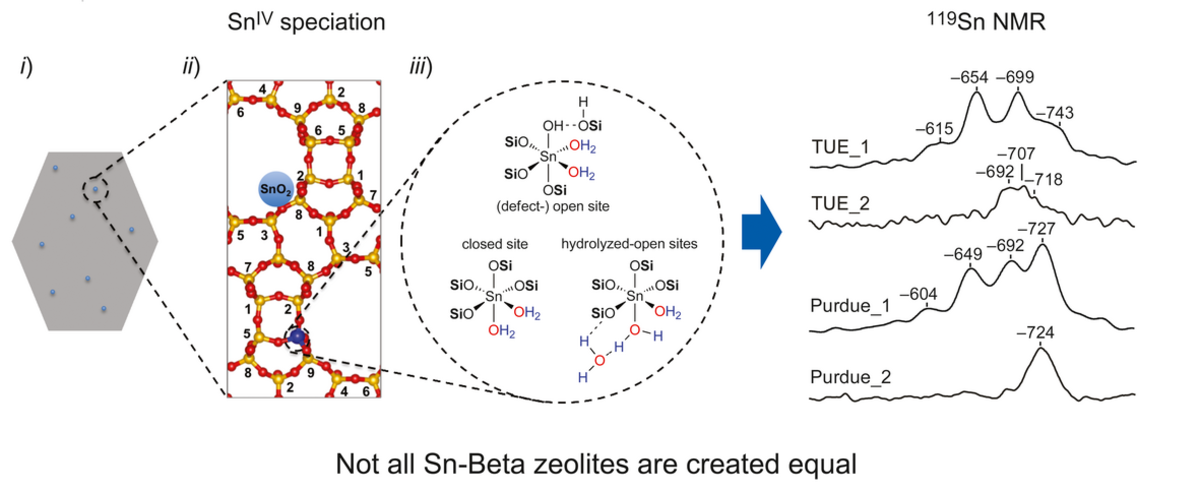
Identifying Sn Site Heterogeneities Prevalent Among Sn‐Beta Zeolites 09-11-2016
Abstract
In recent years, various protocols on preparing Lewis acidic Sn-β zeolite hydrothermally and postsynthetically have been reported. However, very little is known about the effects of different synthesis protocols on the Sn(IV) speciation in the final material. Even the effects of individual synthesis parameters within a certain preparation method have not been studied systematically. Here, we demonstrate that hydrothermally synthesized Sn-β zeolites prepared via very similar recipes show significantly different 119Sn-NMR spectra, suggesting different Sn site speciation. Among postsynthetically prepared Sn-β zeolites, less variation in the resulting 119Sn-NMR spectra have been observed, indicating a more reproducible synthesis procedure compared to hydrothermal synthesis in fluoride media. This work highlights the importance of 119Sn-NMR measurements to elucidate the precise local geometry of the Sn heteroatoms in Sn-β, and the need to quantify the number of reactive Sn sites on each sample that participate in a given catalytic reaction, in order to accurately compare materials prepared by different routes.
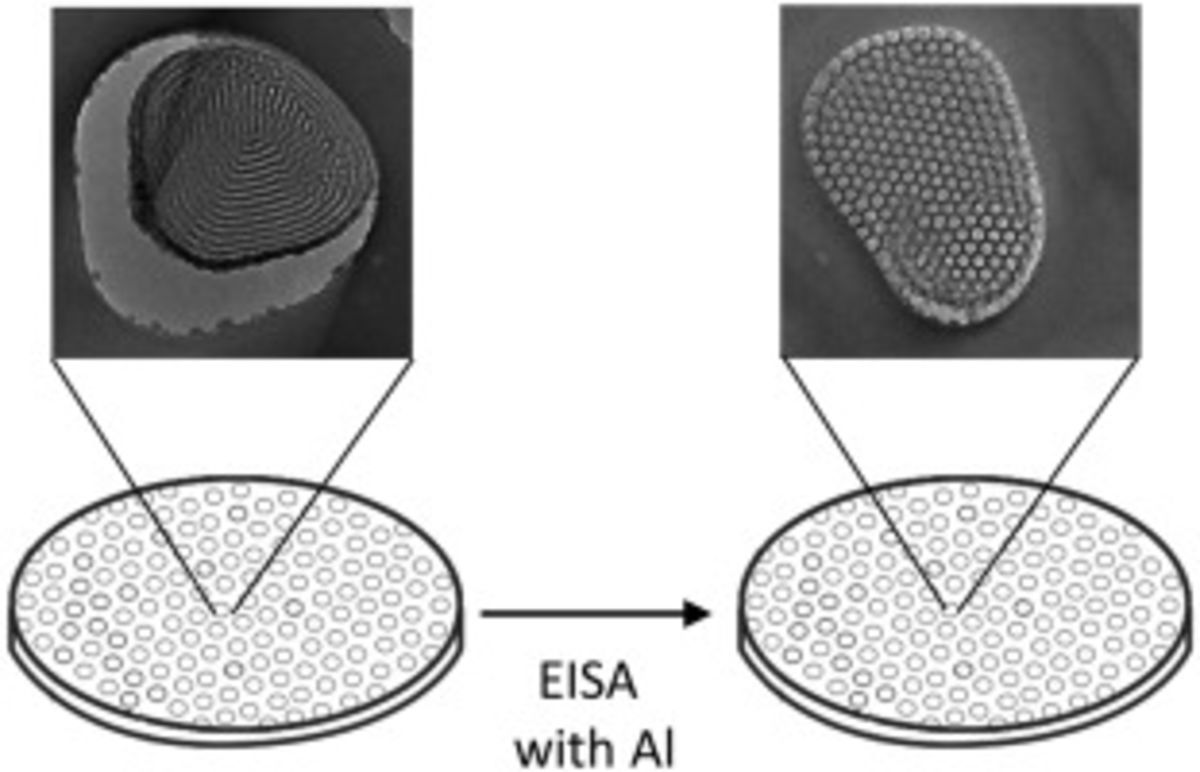
Synthesis of aluminum-containing hierarchical mesoporous materials with columnar mesopore ordering by evaporation induced self-assembly 01-11-2016
Abstract
The incorporation of aluminum into the silica columns of hierarchical mesoporous materials (HMMs) was studied. The HMMs were synthesized by a combination of hard and soft templating methods, forming mesoporous SBA-15-type silica columns inside the pores of anodic aluminum oxide membranes via evaporation induced self-assembly (EISA). By adding Al-isopropoxide to the EISA-mixture a full tetrahedral incorporation of Al and thus the creation of acid sites was achieved, which was proved by nuclear magnetic resonance spectroscopy. Electron microscopy showed that the use of Al-isopropoxide as an Al source for the HMMs led to a change in the mesopore ordering of silica material from circular hexagonal (donut-like) to columnar hexagonal and a 37% increase in specific surface (BET surface). These results were confirmed by a combination of nitrogen physisorption and small-angle X-ray scattering experiments and can be attributed to a swelling of the P123 micelles with isopropanol. The columnar mesopore ordering of silica is advantageous towards the pore accessibility and therefore preferential for many possible applications including catalysis and adsorption on the acid tetrahedral Al-sites.
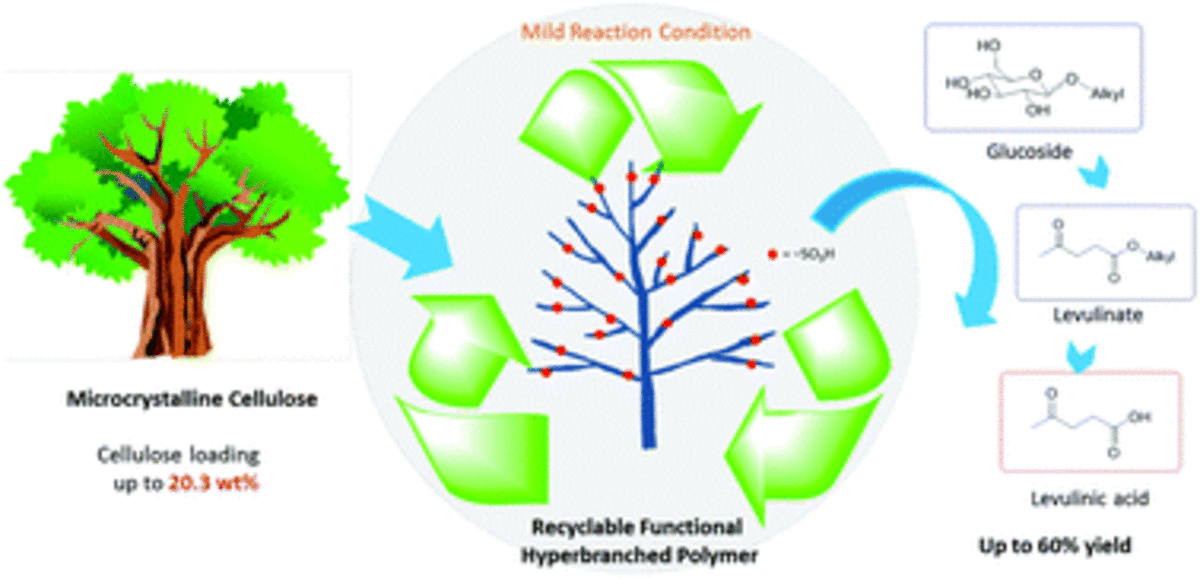
Fast catalytic conversion of recalcitrant cellulose into alkyl levulinates and levulinic acid in the presence of soluble and recoverable sulfonated hyperbranched poly(arylene oxindole)s 27-10-2016
Abstract
Sulfonated hyperbranched polymers were recently reported to efficiently mimic cellulase activity, producing large quantities of glucose from cellulose. The polymer structure allows tuning of the acid properties in terms of active site confinement and acid strength, while being sufficiently flexible to strongly interact with a solid carbohydrate. Whereas previous research focussed on catalysis in water, herein the sulfonated hyperbranched poly(arylene oxindole)s (SHPAOs) were used in alcoholic media, converting cellulose into alkyl glucosides and alkyl levulinates. Interestingly high reaction rates were noticed in the alcoholic solvent, ethanol being the solvent of choice. Unlike most previous reports, low reaction temperature, high cellulose concentrations and no external pressure were employed. A chlorinated SHPAO, denoted as 5-Cl-SHPAO, due to its high acid strength, exhibits the best catalytic efficiency, yielding 79% ethyl glucoside (EG) in 1 h and 60% ethyl levulinate (EL) in 6 h, the latter value being considerably higher than those of the reference sulfuric acid (29%) and 2-naphthalenesulfonic acid (42.5%) under similar reaction conditions. Worth mentioning is a combined ethyl glucosides and ethyl levulinate (levulinic acid) yield of >90% from microcrystalline cellulose at complete conversion. The cellulose reaction runs in a chemical regime in the temperature range of 150 to 190 °C, 160 °C being the most optimal with regard to the reaction speed and product yields. Time profiles and analysis of the product distributions reveal fast formation of alkylglucosides, while their conversion is the slowest step in the cascade to alkyl levulinate. Besides being very fast, reaction rates in an alcoholic solvent appear less affected by the properties of the cellulose. Therefore, even large particles of highly crystalline cellulose are easily converted to high alkyl levulinate yields. Obtaining a high levulinic acid (LA) yield directly from cellulose appears difficult, also in the presence of a hyperbranched polymer. Therefore, a two-stage catalytic strategy that uses the facile formation of alkyl levulinate from cellulose in alcohol in the presence of catalytic amounts of 5-Cl-SHPAO is proposed. After alcoholic evaporation of the alkyl levulinate product solution, aliquots of water are added to hydrolyse the product into LA. As this reaction in the presence of the remaining soluble catalyst is complete, a 60% LA yield from microcrystalline cellulose is demonstrated. Catalyst recovery is demonstrated through nanofiltration. Due to the soluble character of the hyperbranched catalyst in the alcoholic solvent, it is easily separated from the solid humins, and recovered from the solution over a commercial low molecular weight cut-off filter. The recovered catalyst showed comparable catalytic activity (per catalyst weight) and product selectivity
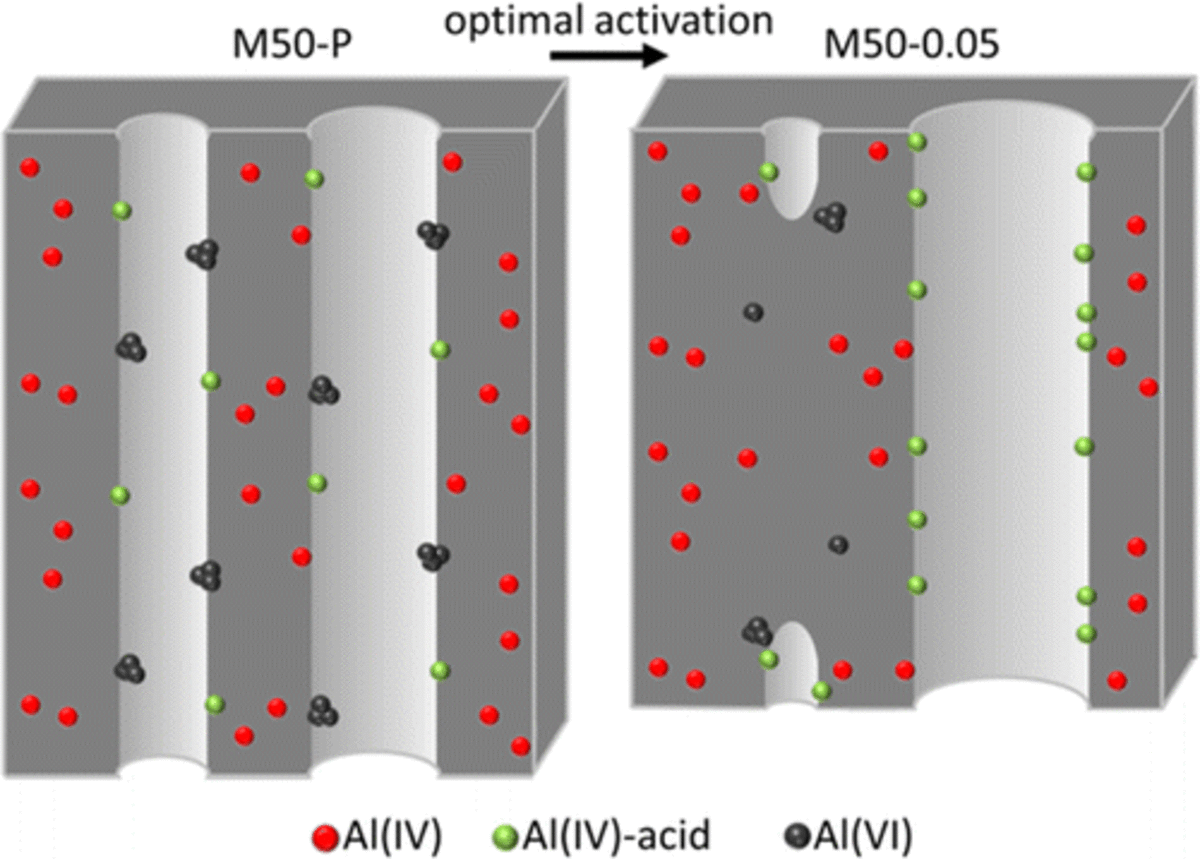
Enhanced Acidity and Accessibility in Al-MCM-41 through Aluminum Activation 11-10-2016
Abstract
Incorporating aluminum is the most widely applied and industrially relevant method to functionalize amorphous silica. However, established protocols yield predominately poorly distributed and inaccessible Al species, and as a result only ∼10–15% of the present aluminum gives rise to the acid sites, hampering the overall catalytic potential. Herein, the influence of alkaline activations with aqueous NaOH and NH4OH on the porosity, acidity, and catalytic properties of Al-MCM-41 is studied. By performing room temperature activations in 0.01–0.1 M NaOH or 0.5 M NH4OH, the Ostwald ripening of silica in alkaline media is exploited, which results in high mass retention yields (100–74%) and a controlled transformation of the 3.6 nm mesopores of the parent material to a broad pore range from 3 to ∼12 nm. Electron microscopy indicates the presence of additional interconnected intraparticle porosity, whereas no significant change in the shape and size of the original particles is observed. Elemental analysis reveals that the optimal alkaline activation with 0.05 M NaOH leads to a decrease in the Si/Al ratio at the surface, despite an increase in the bulk Si/Al ratio. 27Al magic angle spinning nuclear magnetic resonance spectroscopy demonstrates a large conversion of octahedral Al into tetrahedral Al, doubling the purely tetrahedral fraction from 30 to 60%. Pyridine-probed Fourier transformed infrared spectroscopy shows a doubling of the Brønsted and Lewis acidity after activation. The compositional and spectroscopic results are ratified by monitoring the relative accessibility of the acid sites, i.e., effective acidity (mol acid sites per mol Al). The alkaline activation enhances the effective acidity by increasing access to the Al sites trapped inside the pore wall and by reincorporation of the octahedral Al as accessible tetrahedral sites. As a result, an unprecedented effective acidity is obtained after the Al incorporation, which is substantiated using a novel accessibility concept. The catalytic potential of the activation protocol is demonstrated by quadrupling the catalytic activity for the acid-catalyzed alkylation of toluene with benzyl alcohol, an over-50% activity gain, a slightly enhanced selectivity, and a strongly reduced coking in the acid-catalyzed coupling of furfural with sylvan
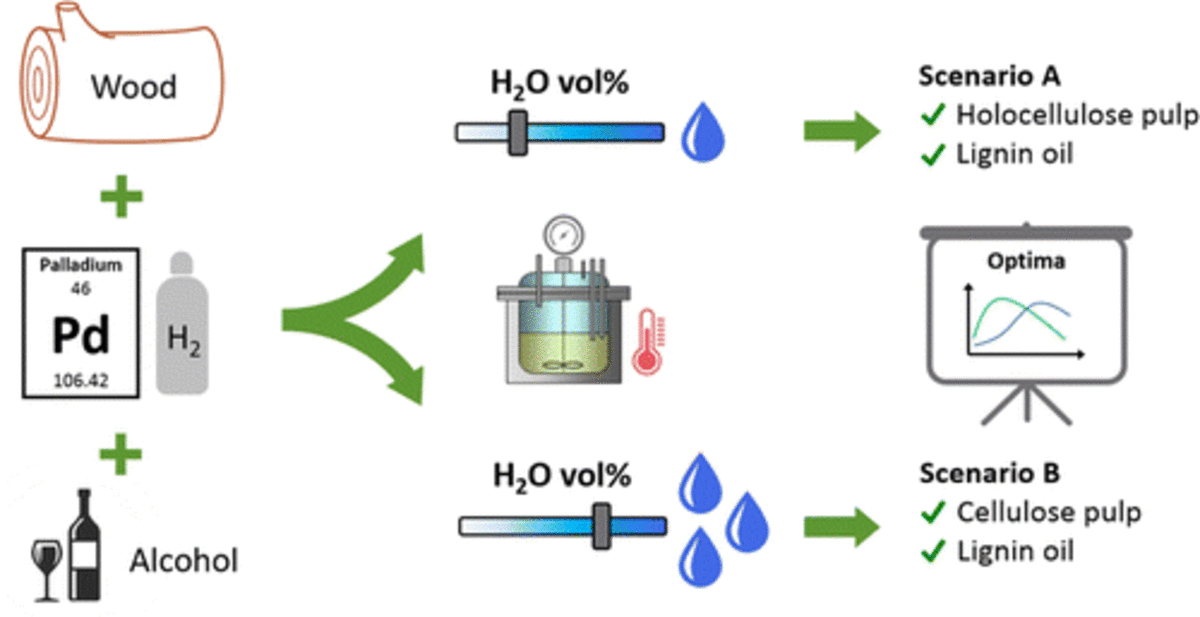
Synergetic effects of alcohol/water mixing on the catalytic reductive fractionation of poplar wood 03-10-2016
Abstract
One of the foremost challenges in lignocellulose conversion encompasses the integration of effective lignin valorization in current carbohydrate-oriented biorefinery schemes. Catalytic reductive fractionation (CRF) of lignocellulose offers a technology to simultaneously produce lignin-derived platform chemicals and a carbohydrate-enriched pulp via the combined action of lignin solvolysis and metal-catalyzed hydrogenolysis. Herein, the solvent (composition) plays a crucial role. In this contribution, we study the influence of alcohol/water mixtures by processing poplar sawdust in varying MeOH/water and EtOH/water blends. The results show particular effects that strongly depend on the applied water concentration. Low water concentrations enhance the removal of lignin from the biomass, while the majority of the carbohydrates are left untouched (scenario A). Contrarily, high water concentrations favor the solubilization of both hemicellulose and lignin, resulting in a more pure cellulosic residue (scenario B). For both scenarios, an evaluation was made to determine the most optimal solvent composition, based on two earlier introduced empirical efficiency descriptors (denoted LFDE and LFFE). According to these measures, 30 (A) and 70 vol % water (B) showed to be the optimal balance for both MeOH/water and EtOH/water mixtures. This successful implementation of alcohol/water mixtures allows operation under milder processing conditions in comparison to pure alcohol solvents, which is advantageous from an industrial point of view.
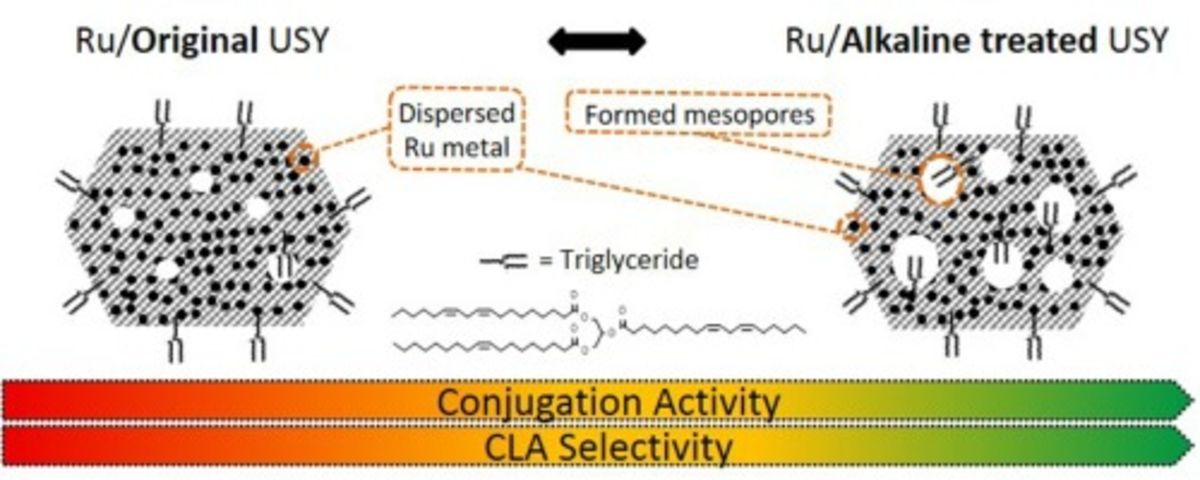
Heterogeneous conjugation of vegetable oil with alkaline treated highly dispersed Ru/USY catalysts 25-09-2016
Abstract
Heterogeneous metal catalysts enable the direct conjugation of linoleic acid tails in vegetable oil to their conjugated linoleic acid (CLA) isomers. CLA-enriched oils are useful as renewable feedstock for the chemical industry and as nutraceutical. Up to now, a solvent-free process for conjugated oils without significant formation of undesired hydrogenation products was not existing. This work shows the design of Ru/USY catalysts able to directly conjugate highly unsaturated vegetable oils such as safflower oil in absence of solvent and hydrogen. Key is fast molecular transport of the bulky reagent and reactive product triglycerides in the zeolite crystal. A two-step zeolite post-synthetic treatment (with NH4OH and acetate salt) was applied to create the necessary mesoporosity. More open zeolite structures allow for a faster conjugation reaction, while securing a fast removal of the reactive conjugated triglycerides, otherwise rapidly deactivating through fouling and pore blockage by polymers. The best Ru/USY catalyst in this contribution is capable of producing exceptionally high yields of conjugated oils, containing up to almost 30 wt% conjugated fatty acid tails in safflower oil, at an initial production rate of 328 gCLA mL−1 h−1 per gram metal catalyst.
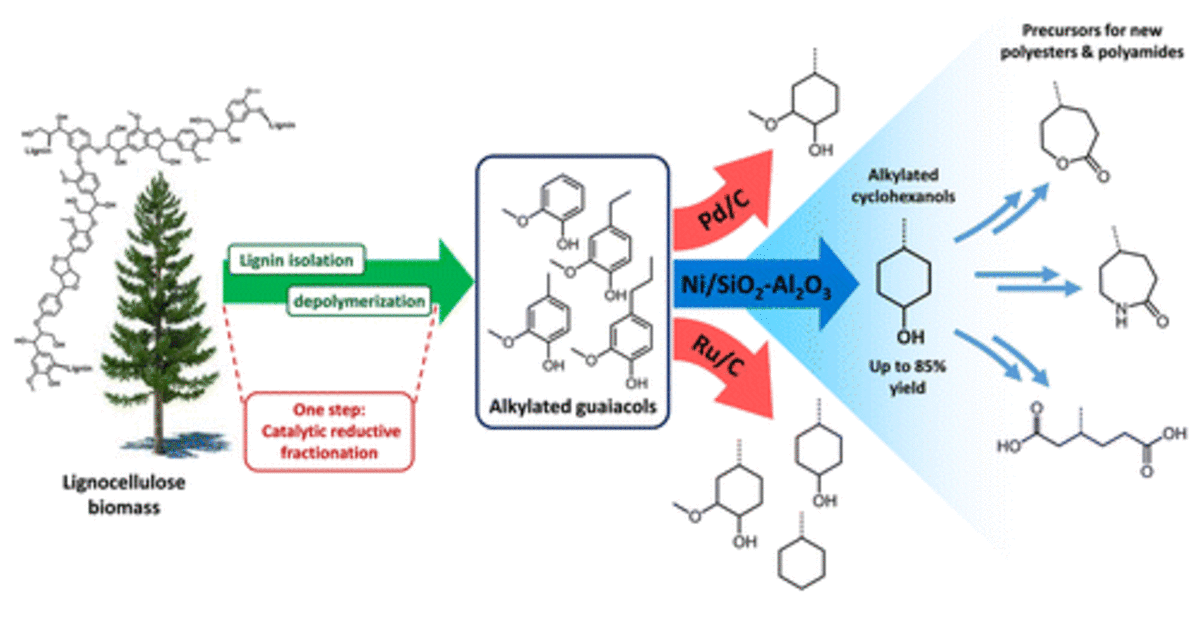
Selective Conversion of Lignin-Derivable 4-Alkylguaiacols to 4-Alkylcyclohexanols over Noble and Non-Noble-Metal Catalysts 06-09-2016
Abstract
Recent lignin-first catalytic lignocellulosic biorefineries produce large quantities of two potential platform chemicals, 4-n-propylguaiacol (PG) and 4-n-propylsyringol. Because conversion into 4-n-propylcyclohexanol (PCol), a precursor for novel polymer building blocks, presents a promising valorization route, reductive demethoxylation of PG was examined here in the liquid-phase over three commercial hydrogenation catalysts, viz. 5 wt % Ru/C, 5 wt % Pd/C and 65 wt % Ni/SiO2–Al2O3, at elevated temperatures ranging from 200 to 300 °C under hydrogen atmosphere. Kinetic profiles suggest two parallel conversion pathways: Pathway I involves PG hydrogenation to 4-n-propyl-2-methoxycyclohexanol (PMCol), followed by its demethoxylation to PCol, whereas Pathway II constitutes PG hydrodemethoxylation to 4-n-propylphenol (PPh), followed by its hydrogenation into PCol. The slowest step in the catalytic formation of PCol is the reductive methoxy removal from PMCol. Moreover, under the applied reaction conditions, PCol may react further into hydrocarbons. The following criteria are therefore essential to reach a high PCol yield: (i) catalytic pathway II is preferred as this route does not involve stable intermediates; (ii) reactivity of PMCol should be higher than that of PCol, and (iii) the overall carbon balance should be high. Both the catalyst type and the reaction conditions have a substantial impact on the PCol yield. Only the commercial Ni catalyst meets the three criteria, provided the reaction is performed at 250 °C in hexadecane. Additional advantages of this solvent choice are a high boiling point (low operational pressure in closed reactor systems), high solubility of PG and derived products, high thermal, reductive stability, and easy derivability from fatty biomass feedstock. This Ni catalyst also showed an excellent stability in recycling runs and is capable of converting highly concentrated (up to 20 wt %) PG in hexadecane. Ru and Pd on carbon showed a low PCol yield, as they are not conform the three criteria. Low hydrogen pressure favors Pathway II, resulting in a very high PCol yield of 85% at 10 bar. Catalytic conversion of guaiacol, 4-methyl- and 4-ethylguaiacol in comparable circumstances showed similarly high yields of the corresponding cyclohexanols.
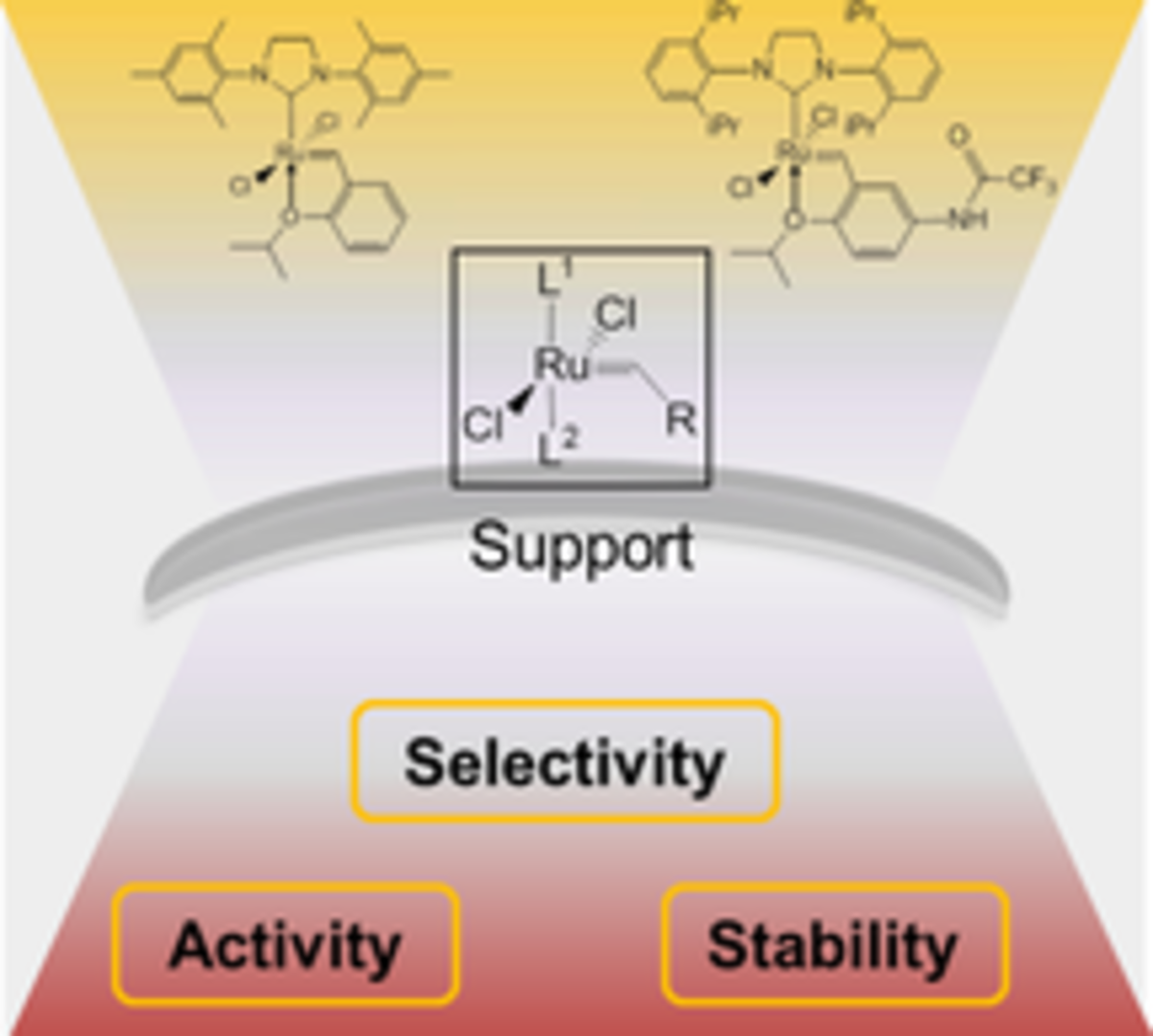
Opportunities of Immobilized Homogeneous Metathesis Complexes as Prominent Heterogeneous Catalysts 25-08-2016
Abstract
A plethora of strategies for immobilizing well-defined metathesis catalysts on solid supports have been developed over the past decades. Whereas most reviews on classical heterogeneous metathesis catalyst designs mainly discuss covalent binding approaches, we here extended this topic with non-covalent surface science methods, a research area that gained interest recently. Within this context, the main focus was set on the immobilization of ruthenium alkylidenes or so-called Grubbs complexes, as these catalysts are known for their high activity, stability and commercial viability. Besides giving an overview of different immobilization strategies, the wide diversity of supported Grubbs catalysts also allows for discussing implications of attaching Grubbs catalysts that go beyond the traditional benefits of heterogeneous catalysis, such as easy catalyst separation. More specifically, this Review will summarize several unique opportunities of immobilized homogeneous catalysts in liquid-phase metathesis transformations in terms of impact on activity, stability, and product selectivity, as to highlight the economic potential, but without ignoring possible shortcomings and limitations.
Internal architecture of coffin‐shaped ZSM‐5 zeolite crystals with hourglass contrast unravelled by focused ion beam‐assisted transmission electron microscopy 19-08-2016
Abstract
Optical microscopy, focused ion beam and transmission electron microscopy are combined to study the internal architecture in a coffin-shaped ZSM-5 crystal showing an hourglass contrast in optical microscopy. Based on parallel lamellas from different positions in the crystal, the orientation relationships between the intergrowth components of the crystal are studied and the internal architecture and growth mechanism are illustrated. The crystal is found to contain two pyramid-like components aside from a central component. Both pyramid-like components are rotated by 90° along the common c-axis and with respect to the central component while the interfaces between the components show local zig-zag feature, the latter indicating variations in relative growth velocity of the two components. The pyramid-like intergrowth components are larger and come closer to one another in the middle of the crystal than at the edges, but they do not connect. A model of multisite nucleation and growth of 90° intergrowth components is proposed.
The active site of low-temperature methane hydroxylation in iron-containing zeolites 18-08-2016
Abstract
An efficient catalytic process for converting methane into methanol could have far-reaching economic implications. Iron-containing zeolites (microporous aluminosilicate minerals) are noteworthy in this regard, having an outstanding ability to hydroxylate methane rapidly at room temperature to form methanol1,2,3. Reactivity occurs at an extra-lattice active site called α-Fe(II), which is activated by nitrous oxide to form the reactive intermediate α-O4,5; however, despite nearly three decades of research5, the nature of the active site and the factors determining its exceptional reactivity are unclear. The main difficulty is that the reactive species—α-Fe(II) and α-O—are challenging to probe spectroscopically: data from bulk techniques such as X-ray absorption spectroscopy and magnetic susceptibility are complicated by contributions from inactive ‘spectator’ iron. Here we show that a site-selective spectroscopic method regularly used in bioinorganic chemistry can overcome this problem. Magnetic circular dichroism reveals α-Fe(II) to be a mononuclear, high-spin, square planar Fe(II) site, while the reactive intermediate, α-O, is a mononuclear, high-spin Fe(IV)=O species, whose exceptional reactivity derives from a constrained coordination geometry enforced by the zeolite lattice. These findings illustrate the value of our approach to exploring active sites in heterogeneous systems. The results also suggest that using matrix constraints to activate metal sites for function—producing what is known in the context of metalloenzymes as an ‘entatic’ state6—might be a useful way to tune the activity of heterogeneous catalysts.
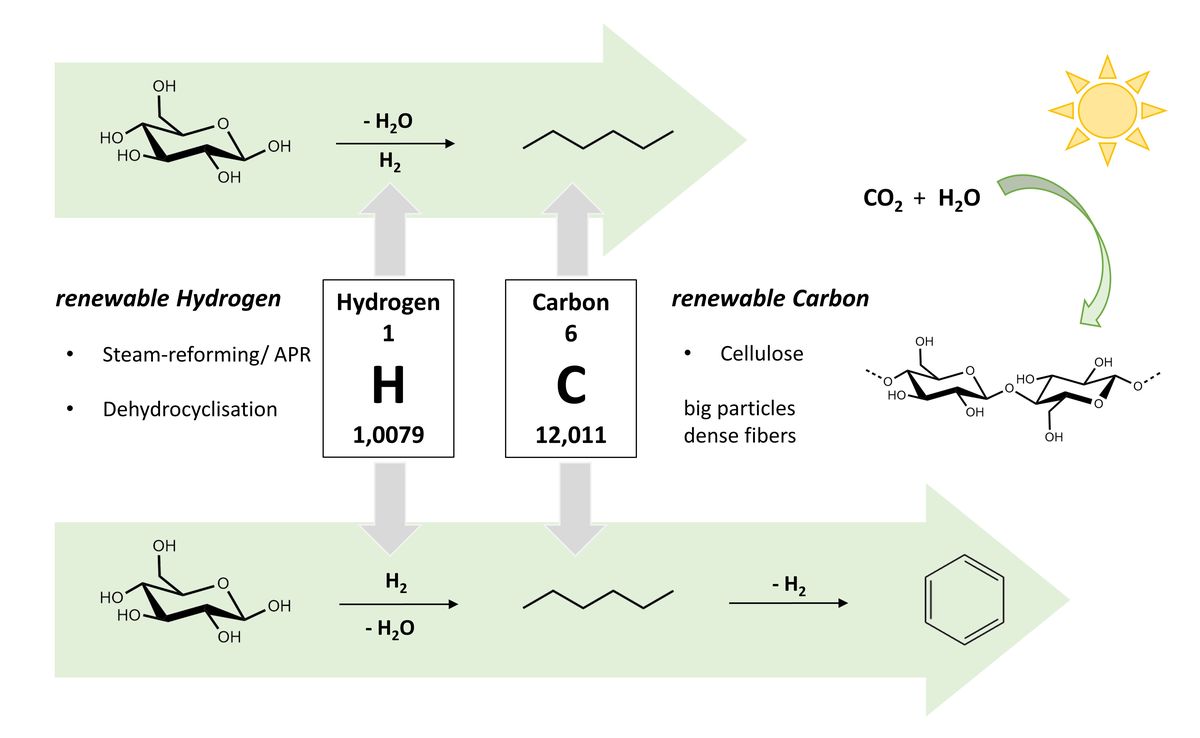
Compositional and structural feedstock requirements of a liquid phase cellulose-to-naphtha process in a carbon- and hydrogen-neutral biorefinery context 27-07-2016
Processing raw (ligno)cellulosic feedstock into renewable light naphtha alkanes could lead to a gradual replacement of fossil feedstock for the production of chemicals, materials and fuels. The production of drop-in alkanes is a preferable short term strategy because of its practical implementation and integration in existing infrastructure and processes. A handful of promising cellulose-to-alkane biorefinery initiatives were recently reported, both processing in gas and liquid phase. This contribution presents a detailed study of the two-liquid phase hydrodeoxygenation of cellulose to n-hexane under relatively mild circumstances, proceeding through the recently communicated HMF route, in presence of a soluble acid and Ru/C metal catalyst. Two main points were addressed here: (i) the importance (or not) of the lignocellulose pretreatment and purification to the alkane yield, and (ii) the renewability of the consumed hydrogen in the process. A systematic study of the effect of cellulose purity, crystallinity, degree of polymerization and particle size (surface area) on the light naphtha yield was performed to tackle the first part. As fibrous cellulose with large particles was the most favourable feedstock with regard to alkane yield and as the presence of hemicellulose and lignin impurities had no effect on the cellulose-to-naphtha conversion, costly mechanical and purification steps are redundant to the process, in contrast to their notable importance in other cellulose valorisation processes (e.g. to glucose, sorbitol, isosorbide and acids). The second point regarding sustainable hydrogen supply is discussed in detail by calculating hydrogen and carbon mass and energy balances of the chemical conversions, assuming selected scenarios among others to recuperate the hydrogen by steam-reforming of waste streams (like gaseous C<6 hydrocarbons and aqueous polyol fractions) and (partial) aromatization of the C6 fraction into benzene. The study shows potential to integrate the liquid phase cellulose-to-naptha (LPCtoN) technology into a self-sufficient biorefinery, in which the chemical processes may run without consumption of external (non-renewable) hydrogen, carbon and energy, except for solar light.
ACS Sustainable Chemistry & Engineering's Impact Factor Rises 05-07-2016
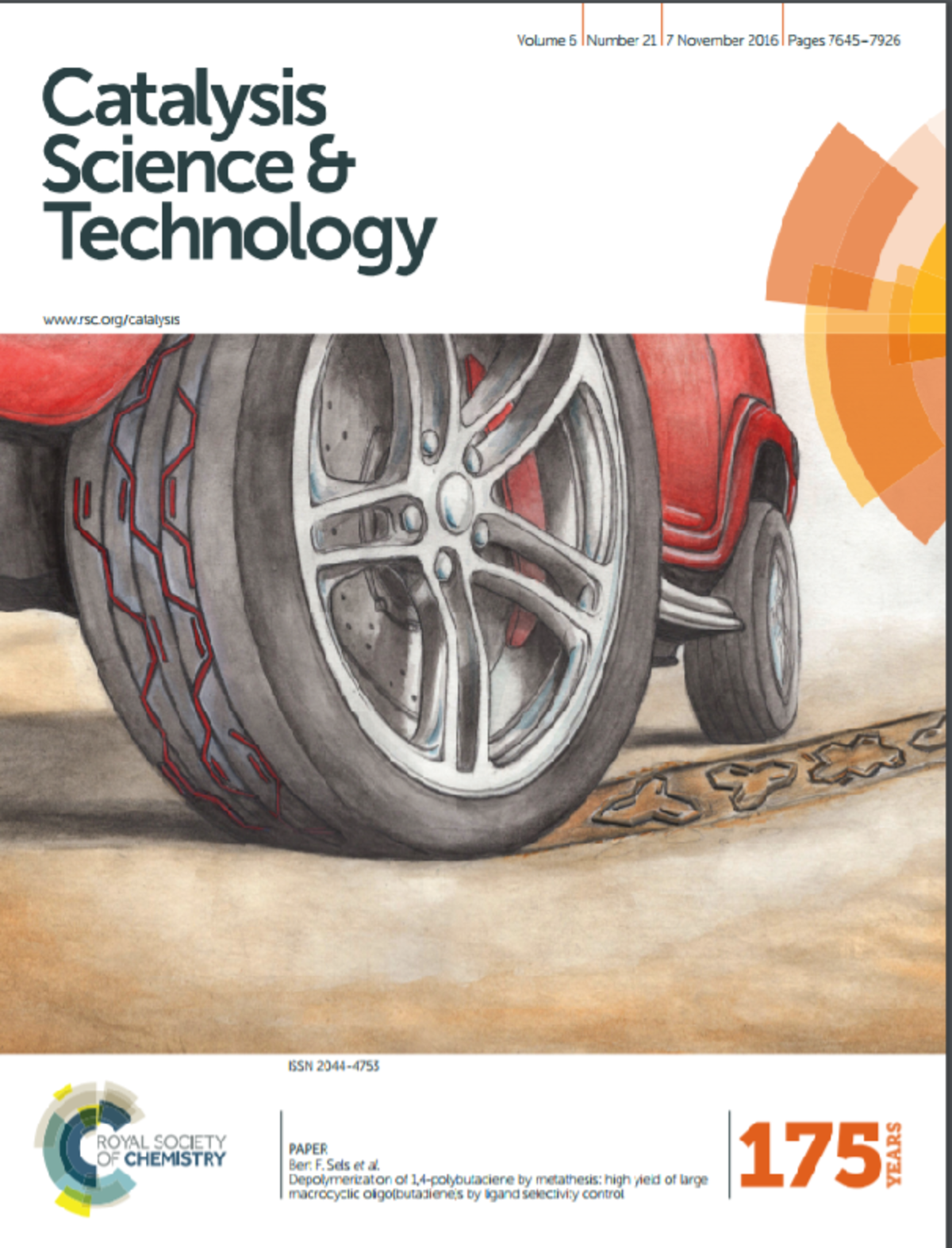
Depolymerization of 1,4-polybutadiene by metathesis: high yield of large macrocyclic oligo(butadiene)s by ligand selectivity control 20-06-2016
Herein, we demonstrate a practical high yield preparation of large macrocyclic oligo(butadiene)s, preferably the C16 to C44 fraction, from commercial 1,4-polybutadiene by exploring intramolecular backbiting using a series of commercially available Ru catalysts. Product contamination with linear fragments is restricted by using high molecular weight 1,4-polybutadiene with a low content of 1,2-constructs (vinyl groups). The distribution of the cyclic compounds is largely dependent on the nature of the ligand structure of the Ru catalyst. Kinetic inspection of the reaction reveals a two-step mechanism involving (i) backbiting of the linear polymer with initial formation of large macrocycles followed by (ii) tandem ring-opening ring-closing metathesis predominantly leading to thermodynamically favorable t,t,t-cyclododecatriene (CDT). In particular, second-generation Ru catalysts with N-heterocyclic carbene (NHC) ligands favor undesired CDT formation. First-generation catalysts, presumably due to their high barriers for formation of the intermediate metallacyclobutane, selectively form the C16 to C44 macrocyclic oligo(butadiene) fraction. For example, reaction of (HMW, 98% cis)-polybutadiene with a first-generation Ru catalyst almost yields 90% C16–C44 cyclic oligo(butadiene)s.
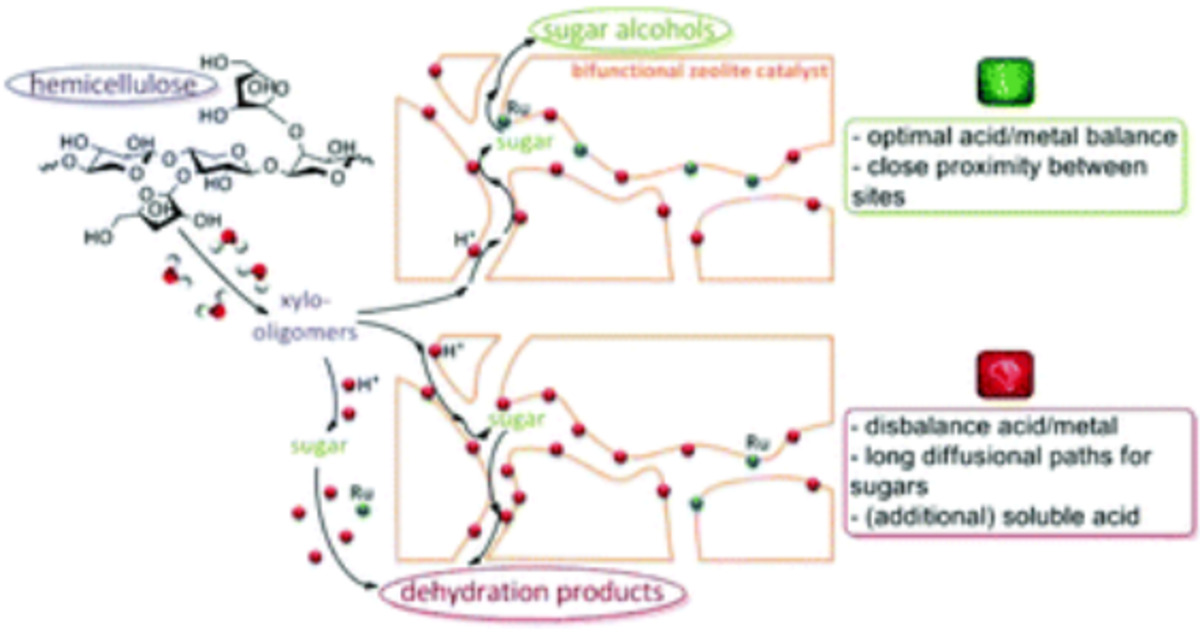
Reductive splitting of hemicellulose with stable ruthenium-loaded USY zeolites 06-06-2016
Reductive catalytic splitting to sugar alcohols is a promising technology to valorize (hemi)cellulosic feedstock. This contribution focuses on the conversion of arabinoxylan (AX), a common hemicellulose polymer, to pentitols like xylitol and arabitol in the presence of ruthenium-loaded H-USY zeolites. Both acid and metal sites on the catalyst play a crucial role in the bifunctional catalytic mechanism. Overall, the reaction mechanism involves hydrolysis of AX into shorter (less reactive) xylan oligomer intermediates (XOs), which are in turn hydrolysed into sugar monomers. The first step occurs fast in hot liquid water, but the second step which is rate limiting, requires acid catalysis. Literature has reported successful XO hydrolysis with soluble acids. However, USY zeolites, being non-corrosive instead of the former, are able to hydrolyse XOs more efficiently, likely due to their strong mesopore adsorption capacity. Once formed, the monomeric sugars should be hydrogenated on the metal sites as fast as possible, as otherwise undesired competitive acid catalysed side-reactions will occur. While another catalyst like Ru on carbon can also be used in the one-pot approach close proximity of the two sites, e.g. in the pores of the USY zeolite, is beneficial for the pentitol selectivity, as long as they are well harmonised. After searching for the ideal dual site balance, exceptionally high pentitol yields up to 90 mol% were achieved after only 5 h of reaction. Comparison with earlier reported cellulose reactions shows a narrowing of the ideal acid-to-metal range, besides a shift to lower ratios. Initial regeneration studies show a stable Ru/USY catalytic system able to perform multiple reaction runs with retention of activity and selectivity.
Introducing the Inaugural ACS Sustainable Chemistry & Engineering Lectureship Awards 06-06-2016

Synthesis of Novel Renewable Polyesters and Polyamides with Olefin Metathesis 31-05-2016
Unsaturated and hydroxyl-functionalized C6-dicarboxylic acids were successfully synthesized via olefin metathesis from methyl vinyl glycolate (MVG), a renewable α-hydroxy C4-ester product from Lewis-acid carbohydrate conversion. Addition of a second-generation Hoveyda–Grubbs catalyst to neat MVG leads to a near quantitative yield of dimethyl-2,5-dihydroxy-3-hexenedioate (DMDHHD). Additional hydrolysis and hydrogenation steps form interesting polymer building blocks like 2,5-dihydroxy-3-hexenedioic acid (DHHDA) and 2,5-dihydroxyadipic acid (DHAA). Their use in polyester and polyamide synthesis is demonstrated after determination of their physical and spectroscopic characteristics. Copolymerization of DHHDA with l-lactic acid for instance produces a cross-linked poly(l-lactic acid-co-DHHDA) polyester. Proof of cross-links is ascertained by NMR and FTIR. Substantial impact on the melting, thermal, and polar properties of PLA are observed already at low amounts of DHHDA (0.1 mol %) in accord with the presence of cross-links in the polymer. Biobased polyamides were also synthesized by equimolar reaction of DHHDA with hexamethylenediamine, producing a renewable polyamide analogue of the petroleum-based nylon-6,6. Interestingly, the as-synthesized polyamide (α-bishydroxylated unsaturated polyamide, HUPA) possesses similar thermal stability as nylon-6,6 but shows different chemical properties as a result of the double bond and α-hydroxy functionality.
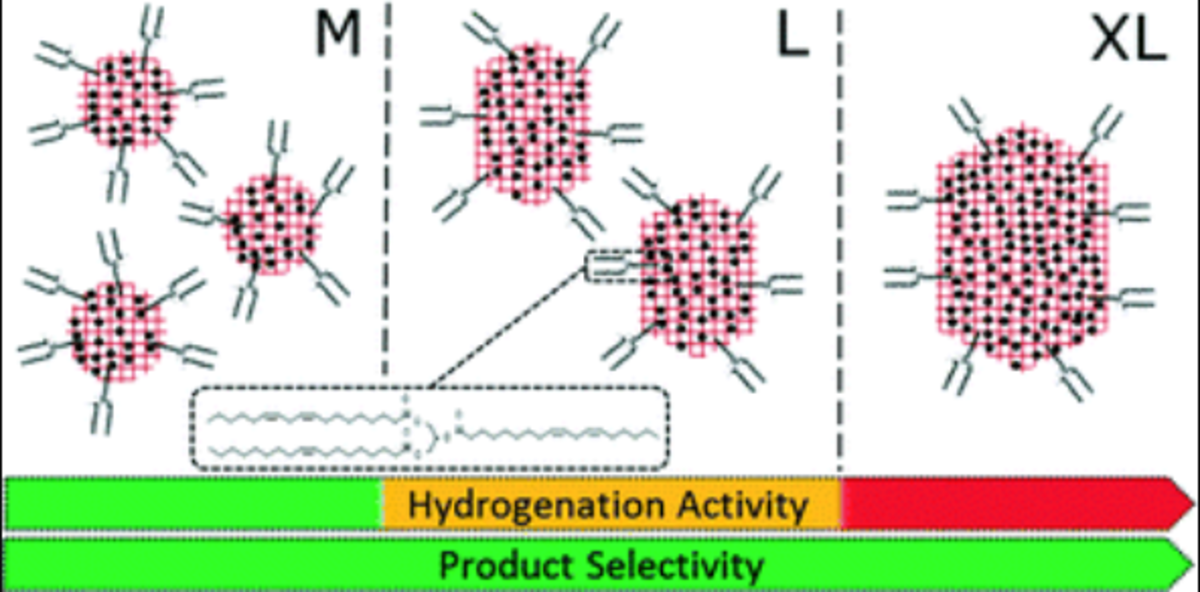
Towards biolubricant compatible vegetable oils by pore mouth hydrogenation with shape-selective Pt/ZSM-5 catalysts 31-05-2016
Pt/ZSM-5 catalysts with various crystal sizes were prepared via competitive ion-exchange, followed by a slow activation procedure. Even when using very large ZSM-5 crystals, highly dispersed Pt nano-clusters were contained within the zeolite crystal's voids, as ascertained by 2D pressure-jump IR spectroscopy of adsorbed CO and focussed ion-beam transmission electron microscopy. The shape-selective properties of the Pt/ZSM-5 catalysts were evaluated in the partial hydrogenation of soybean oil. Unique hydrogenation selectivities were observed, as the fatty acids located at the central position of the triacylglycerol (TAG) molecules were preferentially hydrogenated. The resulting oil has therefore high levels of intermediately melting TAGs, which are compatible with biolubricants due to their improved oxidative stability and still appropriate low-temperature fluidity. The TAG distribution in the partially hydrogenated soybean oil samples was independent from the zeolite crystal size, while the hydrogenation activity linearly increases with the crystal's external surface area. This trend was confirmed with a Pt loaded mesoporous ZSM-5 zeolite, obtained via a mild alkaline treatment. These observations imply and confirm a genuine pore mouth catalysis mechanism, in which only one fatty acid chain of the TAG is able to enter the micropores of ZSM-5, where the double bonds are hydrogenated by the crystal encapsulated Pt-clusters.
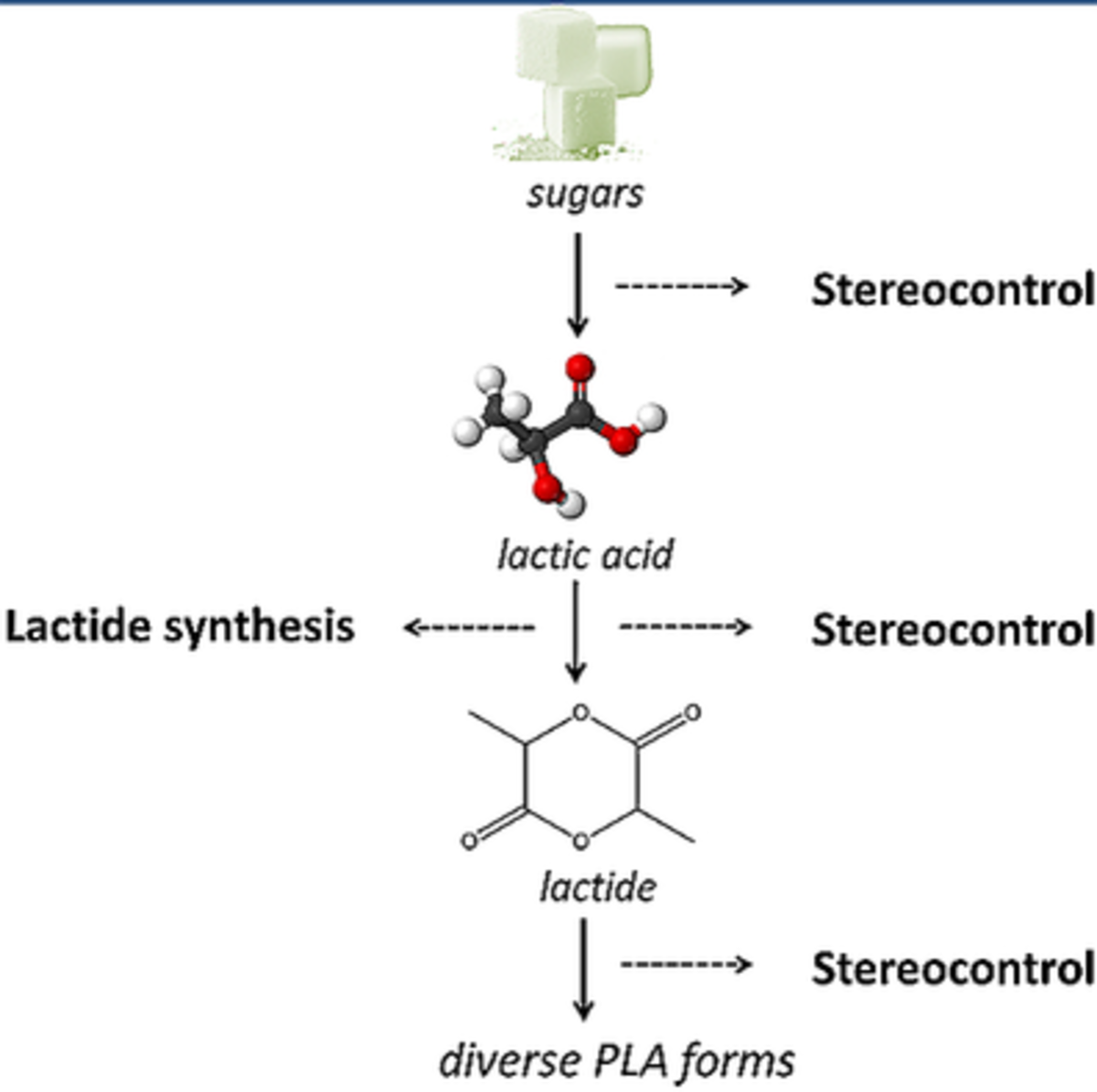
Lactide Synthesis and Chirality Control for Polylactic acid Production 10-05-2016
Polylactic acid (PLA) is a very promising biodegradable, renewable, and biocompatible polymer. Aside from its production, its application field is also increasing, with use not only in commodity applications but also as durables and in biomedicine. In the current PLA production scheme, the most expensive part is not the polymerization itself but obtaining the building blocks lactic acid (LA) and lactide, the actual cyclic monomer for polymerization. Although the synthesis of LA and the polymerization have been studied systematically, reports of lactide synthesis are scarce. Most lactide synthesis methods are described in patent literature, and current energy-intensive, aselective industrial processes are based on archaic scientific literature. This Review, therefore, highlights new methods with a technical comparison and description of the different approaches. Water-removal methodologies are compared, as this is a crucial factor in PLA production. Apart from the synthesis of lactide, this Review also emphasizes the use of chemically produced racemic lactic acid (esters) as a starting point in the PLA production scheme. Stereochemically tailored PLA can be produced according to such a strategy, giving access to various polymer properties.
Chapter 9 – Conversion of Biomass to Chemicals: The Catalytic Role of Zeolites 06-05-2016
Since the mid-20th century zeolites have been successfully applied in oil refining and petrochemistry, owing to the strong Brønsted acidity of their protonated form in a porous crystalline matrix. Yet, concerns about the excessive use of fossil fuels force researchers to develop processes for the production of fuels and chemicals from CO2-neutral feedstocks such as biomass, considered as the alternative and sustainable source of carbon for the production of future bio-derived chemicals. With their success in refinery and petrochemistry, there is increasing interest in the use of zeolites in biomass processing, and this has already resulted in the gradual entrance of zeolites in the conversion of biomass feedstocks. Many interesting biomass conversions have been demonstrated today using the unique acid and redox chemistry of zeolites. However, there are disadvantages inherent to the biomass conversion that need to be overcome before zeolite chemistry can play as important a role in the conversion of biomass as in the conversion of fossil feedstocks. These disadvantages include unstable products and complex conversion network schemes, the stability of zeolites in often polar (condensed) media and active site accessibility of large biomolecules. This chapter presents the major organic compounds in biomass feedstock and provides an overview of the numerous chemical reactions with these chemicals using zeolites in the bulk and fine chemistry. Developments and future challenges in the area are summarized.
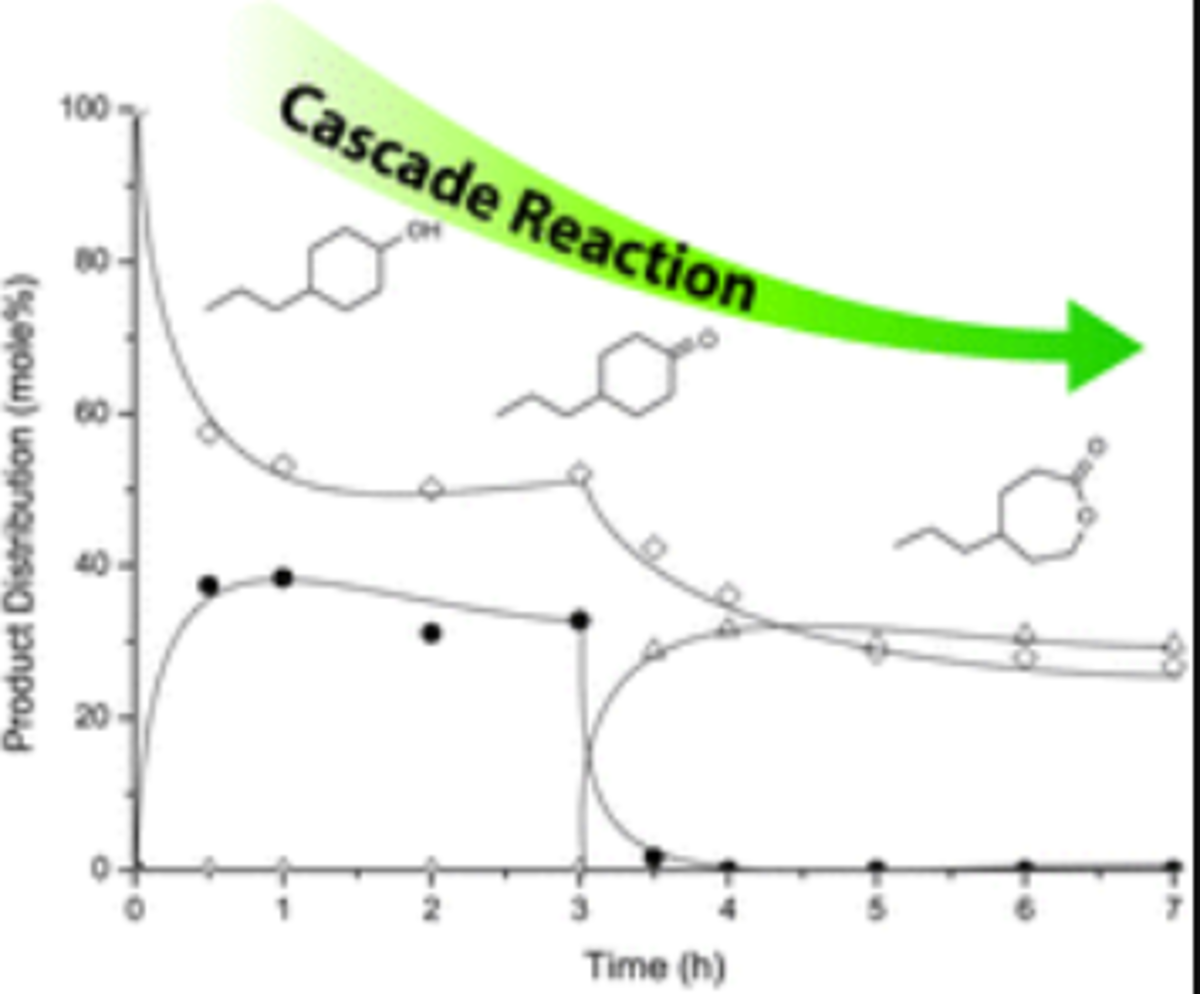
Snβ-zeolite catalyzed oxido-reduction cascade chemistry with biomass-derived molecules 18-04-2016
High activity of post-synthetically synthesized Sn-beta, producing novel caprolactone polymer building blocks, is demonstrated in Meerwein–Ponndorf–Verley (MPV), Oppenauer (OPO), Baeyer–Villiger (BV) and cascade reactions thereof with biomass-derived molecules.
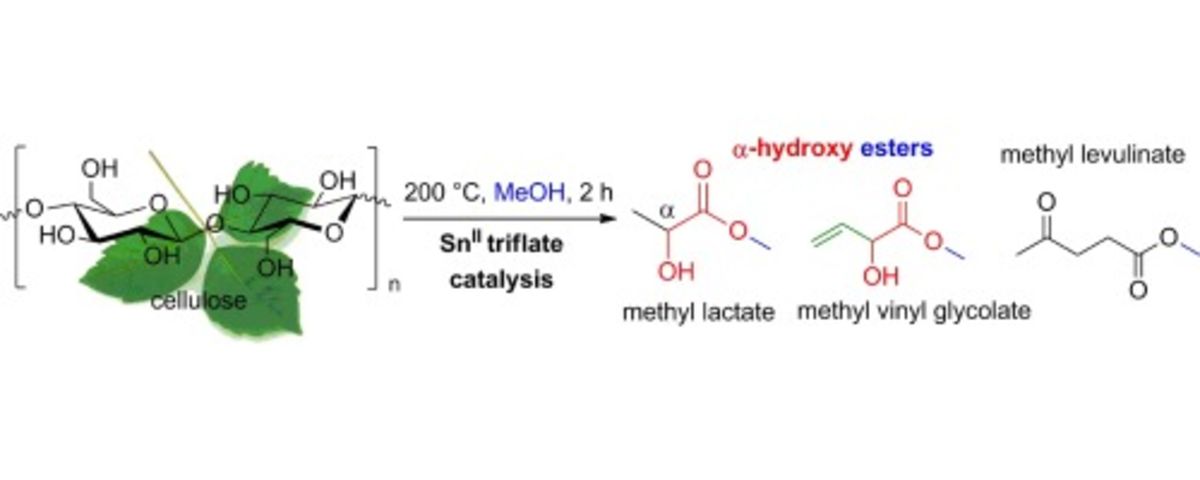
Tin triflate-catalyzed conversion of cellulose to valuable (α-hydroxy-) esters 15-02-2016
Abstract
The direct conversion of cellulose with metal-triflate catalysts in methanol is investigated. SnII-triflate
remarkably catalyzes the formation of a mixture of useful -hydroxy esters such as methyl lactate, methyl
vinyl glycolate and methyl-4-methoxy-2-hydroxybutanoate, on top of methyl levulinate. Compared to
other metaltriflates or Sn salts,the catalytic features of SnII-triflate are distinct and linked to the interplay
between its Brønsted and Lewis acidic component. A total ester yield (carbon-based, mol%) in the 60%-
range could be obtained from cellulose after 2 h at 200 ◦C for cellulose loadings up to 20 g L−1 with 4.8 mM
of catalyst. The cascade reaction network, confirmed by feeding intermediates, highlights the importance
of a fast retro-aldol of the hexose intermediates – opposed to their dehydration – when -hydroxy esters
are targeted. By manipulating the triflate-to-Sn ratio, nearly 40% of -hydroxy esters can be produced in
a one-pot approach. Such mixtures could help fuel the demand for functional biodegradable polyesters.
©
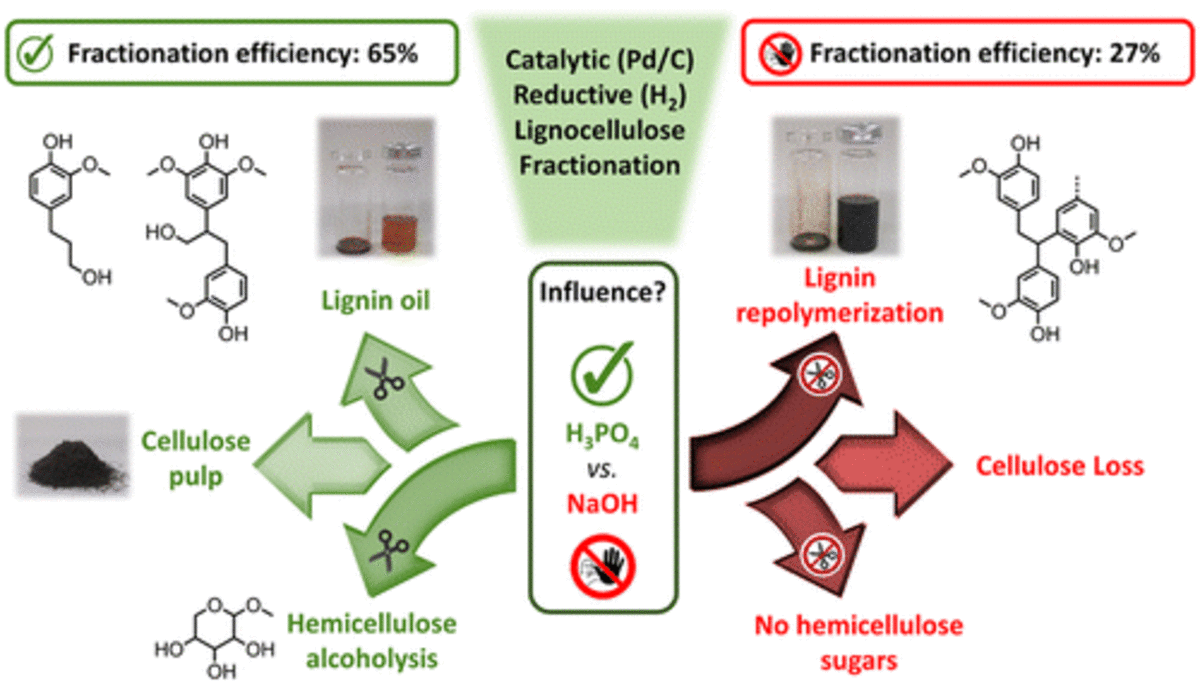
Influence of Acidic (H3PO4) and Alkaline (NaOH) Additives on the Catalytic Reductive Fractionation of Lignocellulose 10-02-2016
Reductive catalytic fractionation of lignocellulose is a promising “lignin-first” biorefinery strategy wherein lignin is solvolytically extracted from the cell wall matrix and simultaneously disassembled, resulting in a stable lignin oil and a solid carbohydrate-rich residue. Herein, we report on the different influence of acidic (H3PO4) and alkaline (NaOH) additives on the Pd/C-catalyzed reductive processing of poplar wood in methanol (MeOH). It was found that the addition of small quantities of H3PO4 results in three rather than two product streams, since under acidic conditions both delignification and alcoholysis of hemicellulose are promoted, leaving behind a cellulose-rich pulp. The simultaneous acid-catalyzed fractionation of the carbohydrates into separate cellulose and hemicellulose streams provides opportunities for more efficient downstream conversion, as processing parameters can be tailored to the needs of both streams. Alkaline conditions, on the other hand, also enhance delignification, but additionally cause (i) the formation of lignin products other than those obtained under neutral and acidic conditions, (ii) a hampered degree of lignin depolymerization, and (iii) substantial loss of cellulose from the pulp. Further on, a modified process descriptor (LFFE: lignin first fractionation efficiency) was applied to evaluate the fractionation efficiency of lignocellulose in its three major constituents. According to this new efficiency measure, mildly acidic conditions performed best.
Advances in the Conversion of Short-Chain Carbohydrates: A Mechanistic Insight 31-01-2016
This chapter discusses recent insights in the conversion of short carbohydrates, viz., sugars containing four or less carbon atoms. Rather than summarizing product yields from such sugars and reported catalysts for the conversions, the focus lies on understanding the underlying mechanisms. These short carbohydrates can lead to a broad spectrum of products, ranging from platform chemicals such as lactic acid and ethylene glycol to high-value chemicals such as α-hydroxy-γ-butyrolactone and even fuels. Different synthesis strategies of these short carbohydrates include (1) a top-down approach from mono- or polysaccharides and (2) a selective bottom-up synthesis route from formaldehyde. Lewis acids play a major role in carbohydrate chemistry, and among these, Sn-based catalysts often show the highest activity. Whether dioses, trioses, or tetroses are used as substrate, Sn is able to convert them efficiently into α-hydroxy acids or esters, which are useful building blocks for renewable polyesters. Other reaction types such as isomerization, hydrogenation, and cross couplings are discussed briefly as well. Glycerol and glyoxal are no sugars, but their chemistry shows great resemblance to that of carbohydrates. Therefore, these compounds are also briefly accounted for in this chapter.
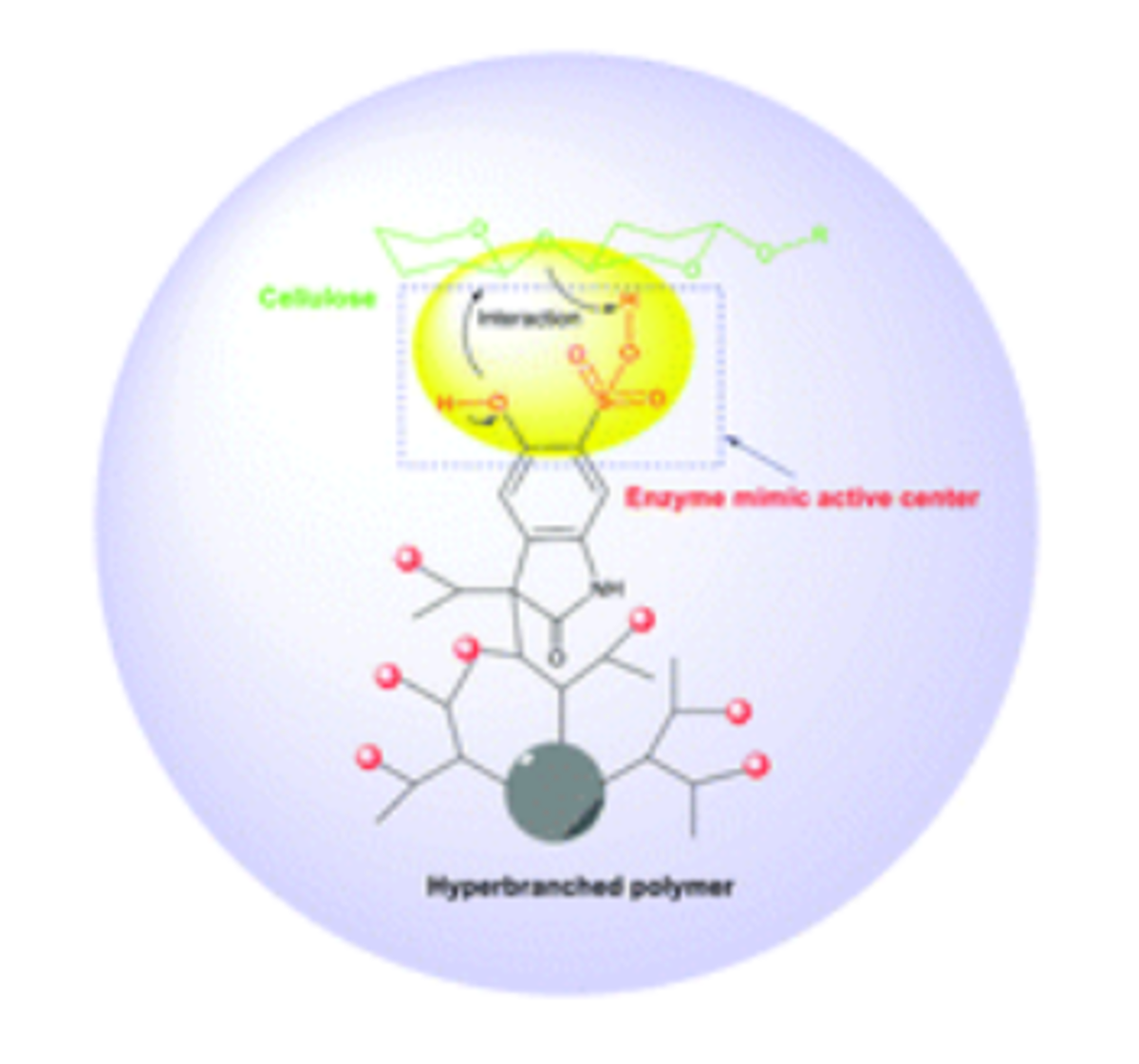
Water-soluble sulfonated hyperbranched poly(arylene oxindole) catalysts as functional biomimics of cellulases 06-01-2016
A new polymer acid catalyst, sulfonated hyperbranched poly(arylene oxindole), 5-OH–SHPAO, was prepared for selective cellulose hydrolysis. Its superior catalysis, showing high glucose selectivity at almost full cellulose conversion, is attributed to the presence of an hydroxyl group next to the sulfonic acid, therefore mimicking the separate acid–base pair in the cellulase active site.
2015
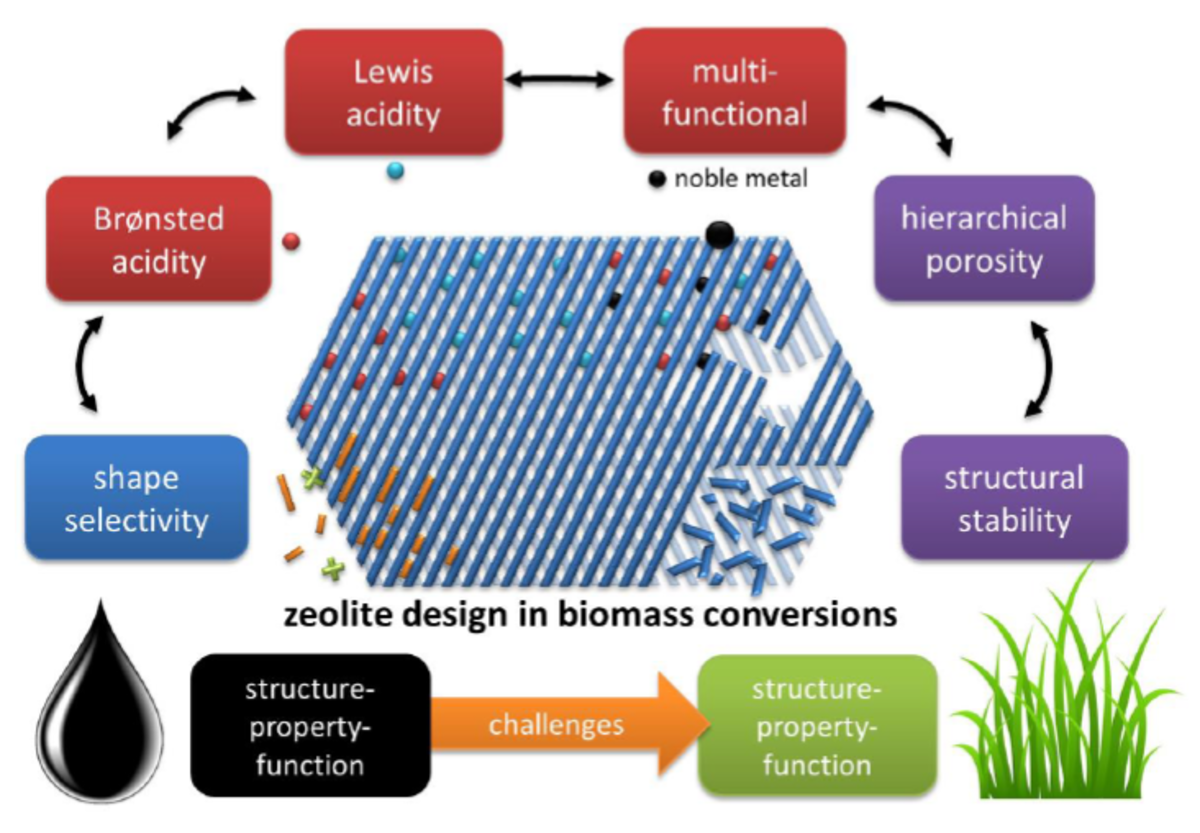
Potential and challenges of zeolite chemistry in the catalytic conversion of biomass 21-12-2015
Increasing demand for sustainable chemicals and fuels has pushed academia and industry to search for alternative feedstocks replacing crude oil in traditional refineries. As a result, an immense academic attention has focused on the valorisation of biomass (components) and derived intermediates to generate valuable platform chemicals and fuels. Zeolite catalysis plays a distinct role in many of these biomass conversion routes. This contribution emphasizes the progress and potential in zeolite catalysed biomass conversions and relates these to concepts established in existing petrochemical processes. The application of zeolites, equipped with a variety of active sites, in Brønsted acid, Lewis acid, or multifunctional catalysed reactions is discussed and generalised to provide a comprehensive overview. In addition, the feedstock shift from crude oil to biomass involves new challenges in developing fields, like mesoporosity and pore interconnectivity of zeolites and stability of zeolites in liquid phase. Finally, the future challenges and perspectives of zeolites in the processing of biomass conversion are discussed.
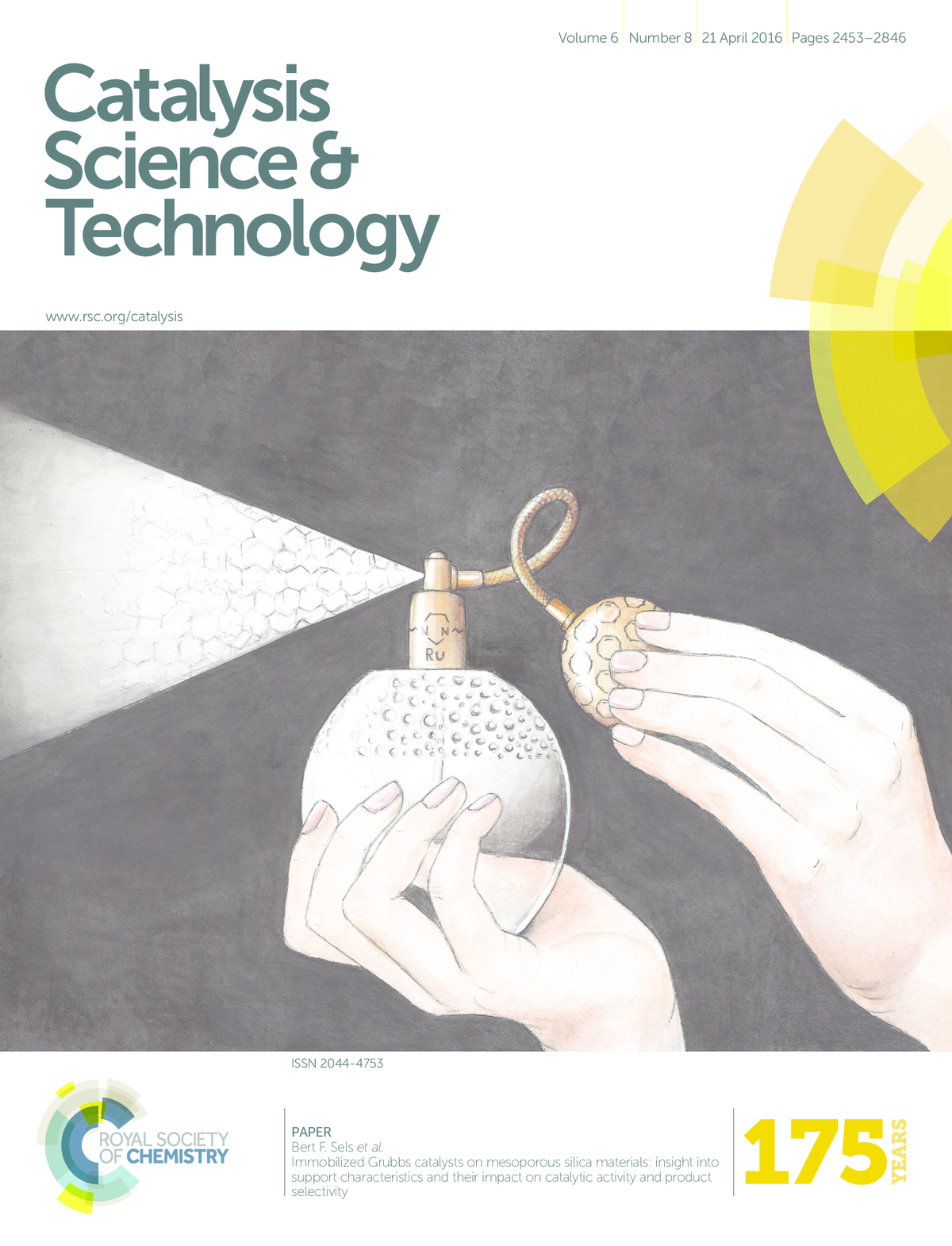
Immobilized Grubbs catalysts on mesoporous silica materials: insight into support characteristics and their impact on catalytic activity and product selectivity 07-12-2015
Silica materials show a high ability to physisorb the 2nd generation Hoveyda–Grubbs catalyst (HG2) in organic solvents. The interaction with the complex, likely proceeding through hydrogen bonding, is particularly strong with surfaces rich in silanols, wherein geminal silanols show the highest affinity, and therefore mesoporous silicas are the supports of choice. As long as the silica material is sufficiently pure and free of cages, in which high HG2 concentrations can accumulate, the immobilization of HG2 occurs in a very stable manner. Despite the complex stability, exploration of HG2-loaded mesoporous silica supports in metathesis of cis-cyclooctene indicated significant diffusional and confinement effects, and therefore control of pore size, pore architecture and morphology in balance with the intrinsic catalytic activity is essential for catalyst design. As metathesis of cis-cyclooctene apparently proceeds through the initial formation of linear polymers, followed by backbiting forming cyclic oligomers, potential interference of mass transport and space restriction issues is not surprising. This study shows that the catalyst requirements are best met with the TUD-1 silica support (1.24 wt% HG2). Under such conditions, the heterogeneous catalyst performs as good as the homogeneous one, presenting a thermodynamic distribution of cyclic oligomers. The latter catalyst also showed high catalyst stability in a continuous fixed bed reactor, corresponding to a catalytic turnover number of 18000. The catalytic rates and catalyst stability are lower when operating in a diffusional regime, therefore long reaction times are required to reach the thermodynamic product distribution. Water removal from the catalyst is also important, not because of HG2 stability reasons, but of lower reaction rates which were measured for hydrated samples, likely due to inhibition of cis-cyclooctene uptake in the pores. Mild removal of physisorbed water before immobilization is therefore advised, for instance by thermal treatments, but care has to be taken to keep the silanol density high for firm HG2 immobilization and also to avoid formation of reactive siloxanes, which chemically react with and destroy HG2. Surprisingly, reactive siloxane formation conditions strongly depend on the silica type, with TUD-1 being fairly sensitive to their formation. Finally, the best HG2-loaded TUD-1 catalyst is used successfully in a broad set of other metathesis reactions.
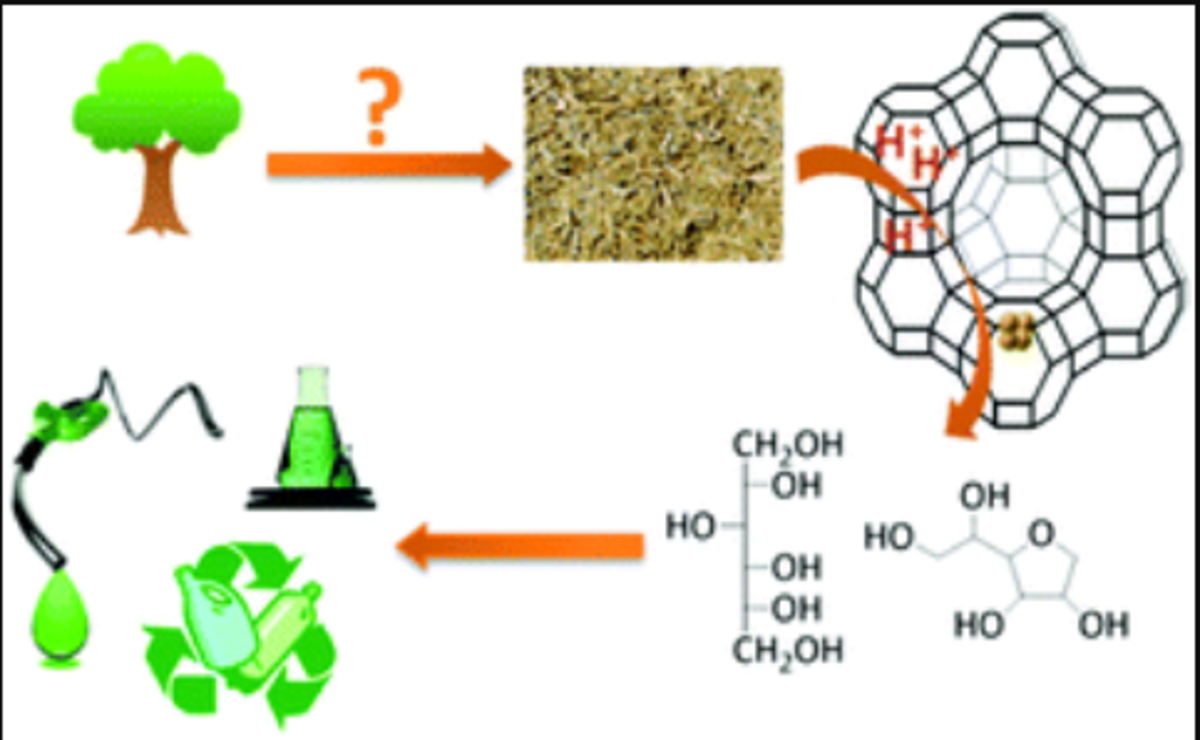
The importance of pretreatment and feedstock purity in the reductive splitting of (ligno)cellulose by metal supported USY zeolite 23-11-2015
Reductive hydrolysis of cellulose to hexitols is a promising technology to valorize cellulose streams. Several catalytic systems have been reported to successfully process commercially available purified cellulose powders according to this technology. Ruthenium-loaded USY zeolites in the presence of minute amounts of HCl previously showed very high hexitol yields. This contribution first investigates into more detail the impact of several cellulose accessibility-related properties like cellulose crystallinity, particle size and degree of polymerization on the conversion rate and hexitol selectivity. Therefore, a series of commercial cellulose samples and several mechano- and chemotreated ones were processed with the Ru/H-USY–HCl catalytic system under standard hot liquid water conditions. The results reveal that the polymerization degree has a large impact on both the conversion rate and selectivity, but its impact fades for DPs lower than 200. From then on, the dominant parameters are the particle size and crystallinity. A second part addresses the influence of cellulose purity. Therefore, organosolv pulps of three lignocellulosic substrates (wheat straw, spruce and birch wood), optionally followed by a bleaching procedure, were processed under the same catalytic circumstances. Here factors like residual lignin content and acid buffer capacity appeared crucial, pointing to the necessity of a dedicated delignification and purification procedure step in order to form the most reactive cellulose feedstock for hexitol production. Complete removal of non-glucosic components is not required since processing of ethanol organosolv birch cellulose and bleached ethanol organosolv wheat straw cellulose, both containing about 6 wt% of lignin and minor contents of ashes and proteins, showed a similar hexitol yield, viz. 34–39%, to that derived from pure microcrystalline cellulose.
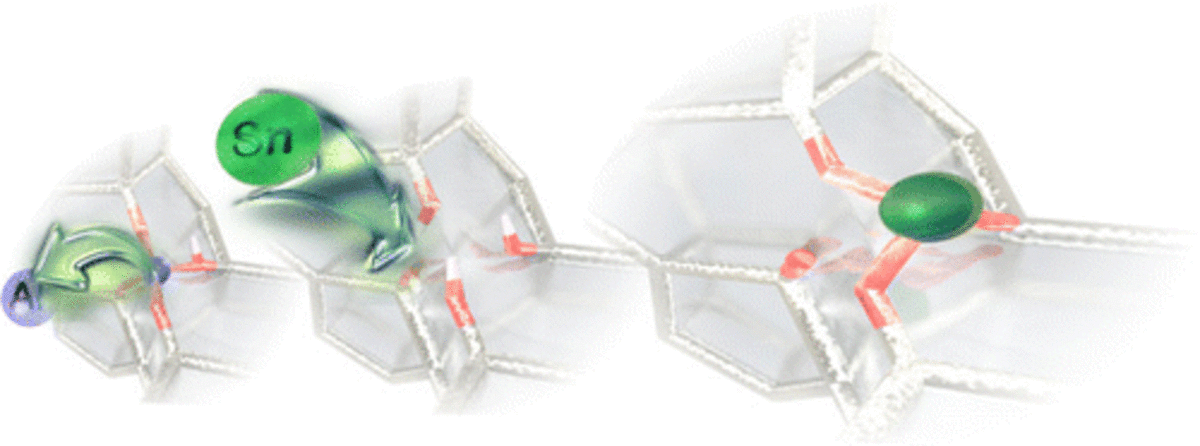
An Inner-/Outer-Sphere Stabilized Sn Active Site in β-Zeolite: Spectroscopic Evidence and Kinetic Consequences 10-11-2015
A highly active Sn site with Lewis acid properties is identified in post-synthetically synthesized Sn/DeAlβ catalyst, prepared by liquid-phase Sn grafting of a dealuminated β-zeolite. Though apparently similar Sn active-site structures have been reported for the post-synthetic and the conventional hydrothermal Snβ, detailed study of the electronic structure and redox behavior of Sn with EXAFS, XANES, DR UV–vis, and TPR clearly reveals dissimilarities in geometry and electronic properties. A model of the active Sn site is proposed using a contemporary interpretation of inner-/outer-sphere coordination, assuming inner-sphere coordination of SnIV with three framework SiO– and one outer-sphere coordination by a distant charge-balancing SiO–, resulting in a separated Lewis acid–base pair. Stabilization of this geometry by a nearby water molecule is proposed. In comparison with active Sn sites in a hydrothermally synthesized Snβ, those in the grafted dealuminated material are sterically less demanding for substrate approach, while the low inner-sphere coordination of Sn leads to a stronger Lewis acidity. Proximate silanols in the active-site pocket, identified by FTIR, 29Si MAS NMR, 1H–29Si CP MAS NMR, DR NIR, and TGA, may impact local reagent concentration and transition states stabilization by hydrogen bonding. The structural dissimilarity of the active Sn site leads to a different kinetic behavior. Kinetic experiments using two Lewis-acid-catalyzed reactions, Baeyer–Villiger and Meerwein–Ponndorf–Verley, show differences that are reaction-type dependent and have different entropic (like sterical demand and hydrogen bonding) and enthalpic contributions (Lewis acid strength). The active-site model, containing both inner- and outer-sphere ligands with the zeolite framework, may be considered as a general model for other grafted Lewis acid single sites.
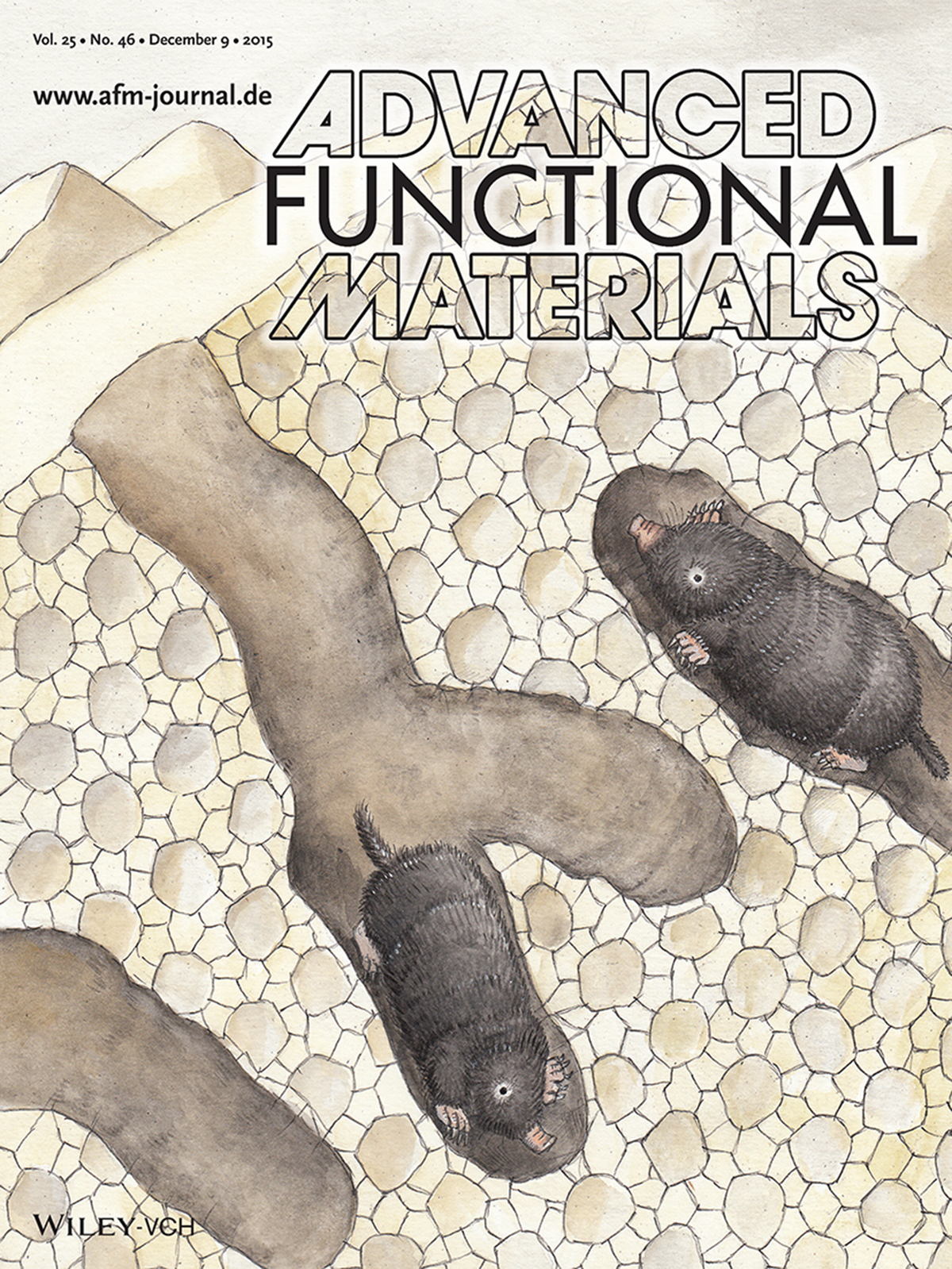
Catalyst Design by NH4OH Treatment of USY Zeolite 30-10-2015
Hierarchical zeolites are a class of superior catalysts which couples the intrinsic zeolitic properties to enhanced accessibility and intracrystalline mass transport to and from the active sites. The design of hierarchical USY (Ultra-Stable Y) catalysts is achieved using a sustainable postsynthetic room temperature treatment with mildly alkaline NH4OH (0.02 m) solutions. Starting from a commercial dealuminated USY zeolite (Si/Al = 47), a hierarchical material is obtained by selective and tuneable creation of interconnected and accessible small mesopores (2–6 nm). In addition, the treatment immediately yields the NH4+ form without the need for additional ion exchange. After NH4OH modification, the crystal morphology is retained, whereas the microporosity and relative crystallinity are decreased. The gradual formation of dense amorphous phases throughout the crystal without significant framework atom leaching rationalizes the very high material yields (>90%). The superior catalytic performance of the developed hierarchical zeolites is demonstrated in the acid-catalyzed isomerization of α-pinene and the metal-catalyzed conjugation of safflower oil. Significant improvements in activity and selectivity are attained, as well as a lowered susceptibility to deactivation. The catalytic performance is intimately related to the introduced mesopores, hence enhanced mass transport capacity, and the retained intrinsic zeolitic properties.
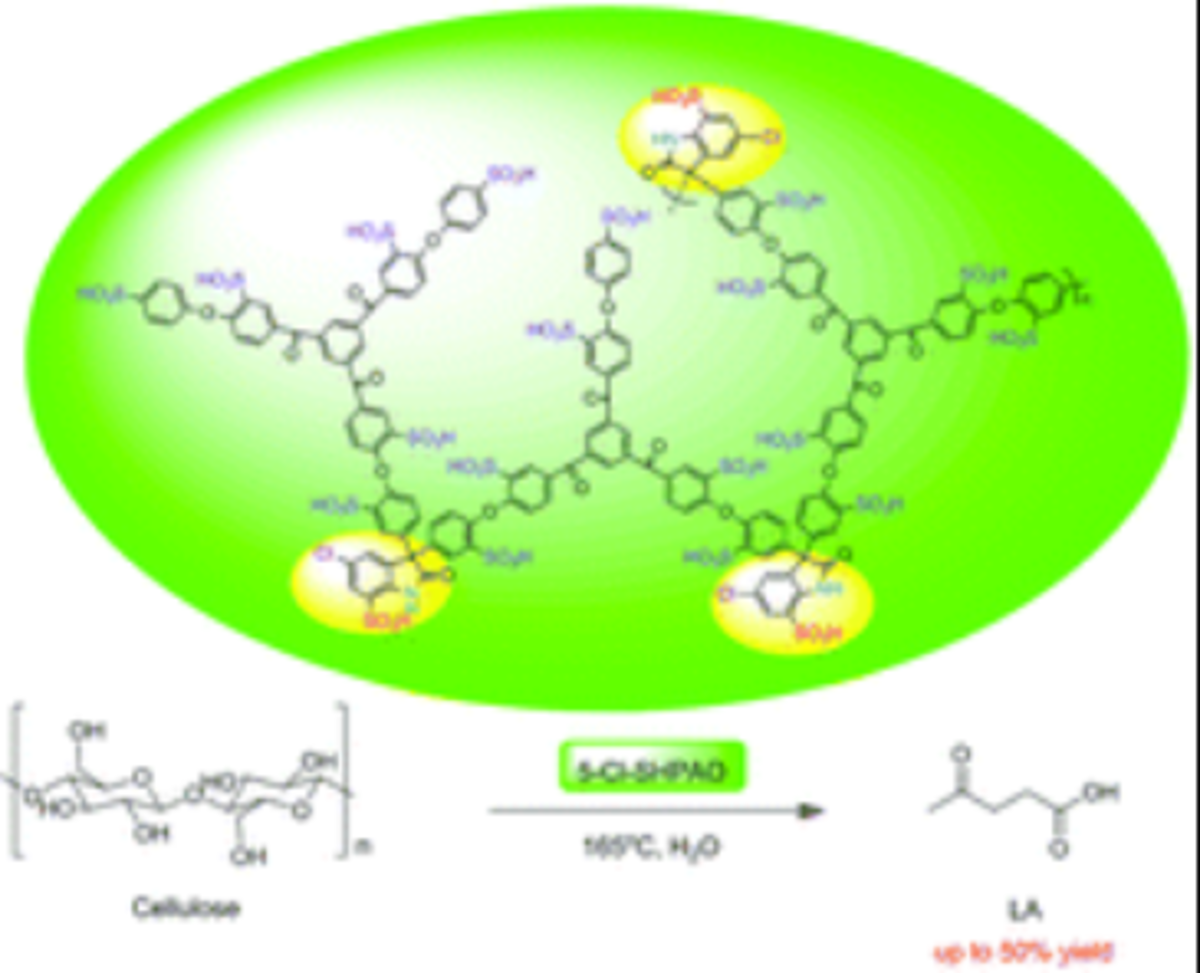
Molecular design of sulfonated hyperbranched poly(arylene oxindole)s for efficient cellulose conversion to levulinic acid 29-10-2015
This contribution is about the design and synthesis of various sulfonated hyperbranched poly(arylene oxindole)s (SHPAOs) with different substituents via a convenient A2 + B3polycondensation and subsequent sulfonation as water-soluble and recyclable acid catalysts for the conversion of cellulose to levulinic acid (LA). Whereas their molecular weight (from 2.7 × 103 to 20.2 × 103), acid density (from 3.4 to 4.8 mmol H+ per g) as well as the polymer structure, viz. hyperbranched or linear analogues, only slightly affect the catalytic performance, the presence of electron-withdrawing substituents on the isatin polymer building block is key to their catalytic efficiency. Among all polymer catalyst designs studied, the use of 5-Cl-SHPAO provided the highest LA yield of almost 50%, directly obtained from ball-milled cellulose in aqueous medium at 165 °C, being twice the LA yield of that of unsubstituted SHPAOs. The presence of the 5-chloro-substituent substantially facilitates the hydrolysis of the glycoside bonds. The close vicinity of the oxindole functionality to the sulfonic acid group seems essential to realize such high hydrolysis rates, as chemical protection of the NH group or sulfonation at other positions lead to substantially lower LA yields. The presence of the 5-chlorine substituent also retards the glucose isomerisation rate, while slightly increasing the HMF conversion rate to LA. As a result, the catalytic reaction progresses in conditions of low concentrations of the most reactive intermediates, fructose and HMF, that otherwise could lead to considerable humin formation. Though hydrophobic interactions are usually invoked to explain such catalytic effects, this contribution suggests also a significant role of the steric proximity of the sulfonic acid group to the oxindole NH group, enabling a kinetic optimization of the reaction cascade through molecular design of the catalytically active acid site.
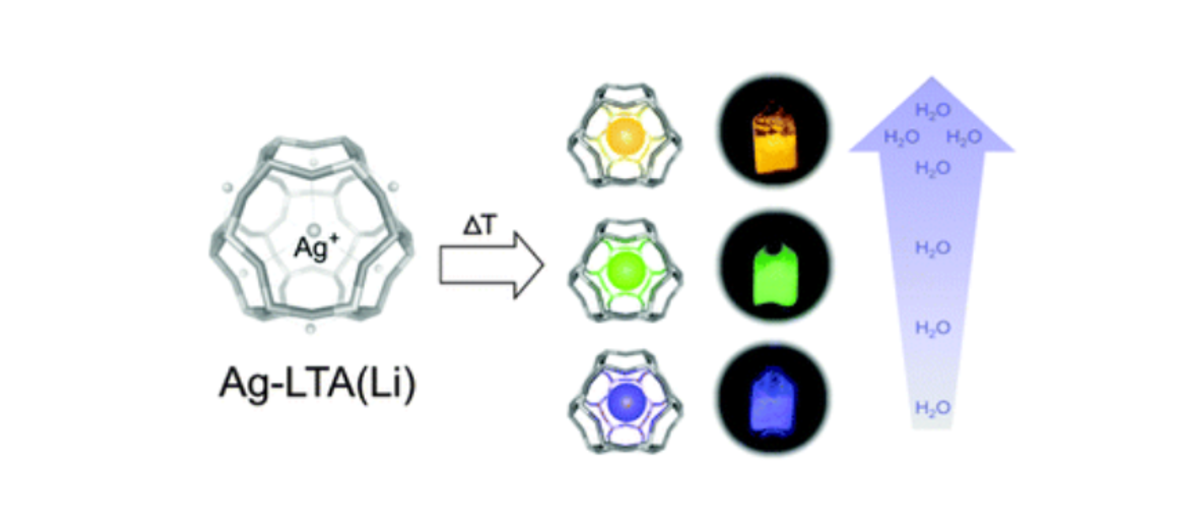
Thermally activated LTA(Li)–Ag zeolites with water-responsive photoluminescence properties 21-10-2015
Silver–zeolite composites are interesting materials with unique optical properties such as high external quantum efficiencies and large Stokes shifts. The selective formation of luminescent silver clusters within zeolite scaffolds can be achieved by varying silver guest and zeolite host conditions. Nevertheless, at present, the controlled synthesis of Ag–zeolite composites with responsive optical properties remains a challenge. In this report, silver–zeolite composites displaying a dynamical emission color change with respect to their water content were synthesized using LTA zeolites containing lithium cations as counter-balancing agents. An intense blue emission was encountered in partially hydrated LTA(Li)–Ag composites, at low silver loadings, whereas a green/yellow emission was observed in their fully hydrated state. The materials synthesized in this report possess high external quantum efficiencies, up to 62%, compared to their close analogues having Na, K, and Ca as counter-balancing ions. Due to the remarkable dynamical change in emission color depending on the hydration level of LTA(Li)–Ag composites, the use of these materials as luminescence-based humidity sensors is suggested.
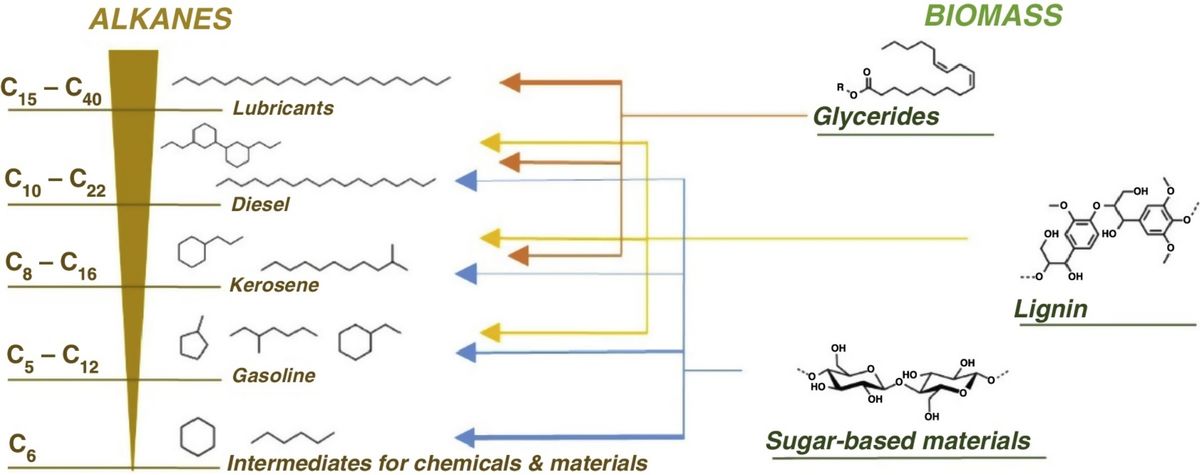
Alkane production from biomass: chemo-, bio- and integrated catalytic approaches 08-09-2015
Linear, branched and cyclic alkanes are important intermediates and end products of the chemical industry and are nowadays mainly obtained from fossil resources. In search for alternatives, biomass feedstocks are often presented as a renewable carbon source for the production of fuels, chemicals and materials. However, providing a complete market for all these applications seems unrealistic due to both financial and logistic issues. Despite the very large scale of current alkane-based fuel applications, biomass definitely has the potential to offer a partial solution to the fuel business. For the smaller market of chemicals and materials, a transition to biomass as main carbon source is more realistic and even probably unavoidable in the long term. The appropriate use and further development of integrated chemo- and biotechnological (catalytic) process strategies will be crucial to successfully accomplish this petro-to-bio feedstock transition. Furthermore, a selection of the most promising technologies from the available chemo- and biocatalytic tool box is presented. New opportunities will certainly arise when multidisciplinary approaches are further explored in the future. In an attempt to select the most appropriate biomass sources for each specific alkane-based application, a diagram inspired by van Krevelen is applied, taking into account both the C-number and the relative functionality of the product molecules.
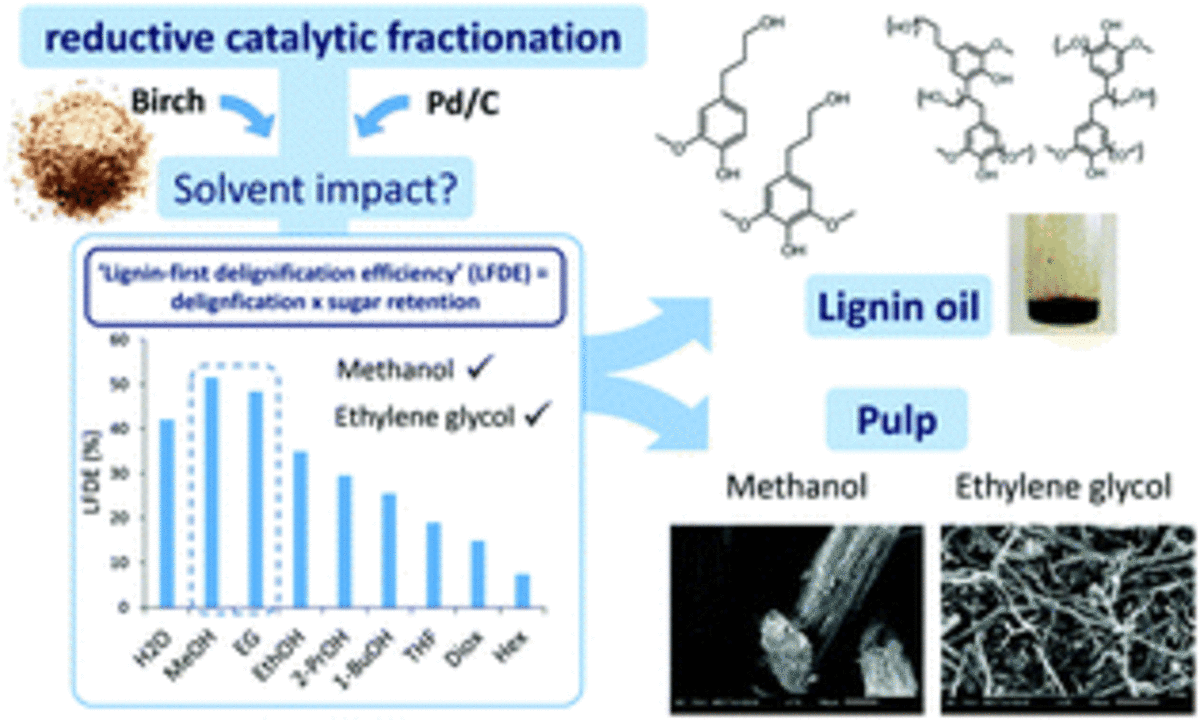
Influence of bio-based solvents on the catalytic reductive fractionation of birch wood 03-09-2015
Reductive catalytic fractionation constitutes a promising approach to separate lignocellulose into a solid carbohydrate pulp and a stable liquid lignin oil. The process is able to extract and convert most of the lignin into soluble mono-, di- and oligomers, while retaining most of the carbohydrates in the pulp. This contribution studies the impact of the solvent choice on both pulp retention and delignification efficiency. Several bio-derivable solvents with varying properties were therefore tested in the Pd/C-catalyzed reductive liquid processing of birch wood. Though a high solvent polarity favors delignification, a too polar solvent like water causes significant solubilization of carbohydrates. A new empirical descriptor, denoted as ‘lignin-first delignification efficiency’ (LFDE), is introduced as a measure of efficient wood processing into soluble lignin derivatives and solid sugar pulp. Of all tested solvents, methanol and ethylene glycol showed the highest LFDE values, and these values could be increased by increasing both reaction time and temperature. Moreover, substantial differences regarding the process characteristics and analyzed product fractions between these two different solvents were discussed extensively. Most striking is the impact of the solvent on the pulp macrostructure, with methanol yielding a pulp composed of aggregated fiber cells, whereas the ethylene glycol pulp comprises nicely separated fiber cells.
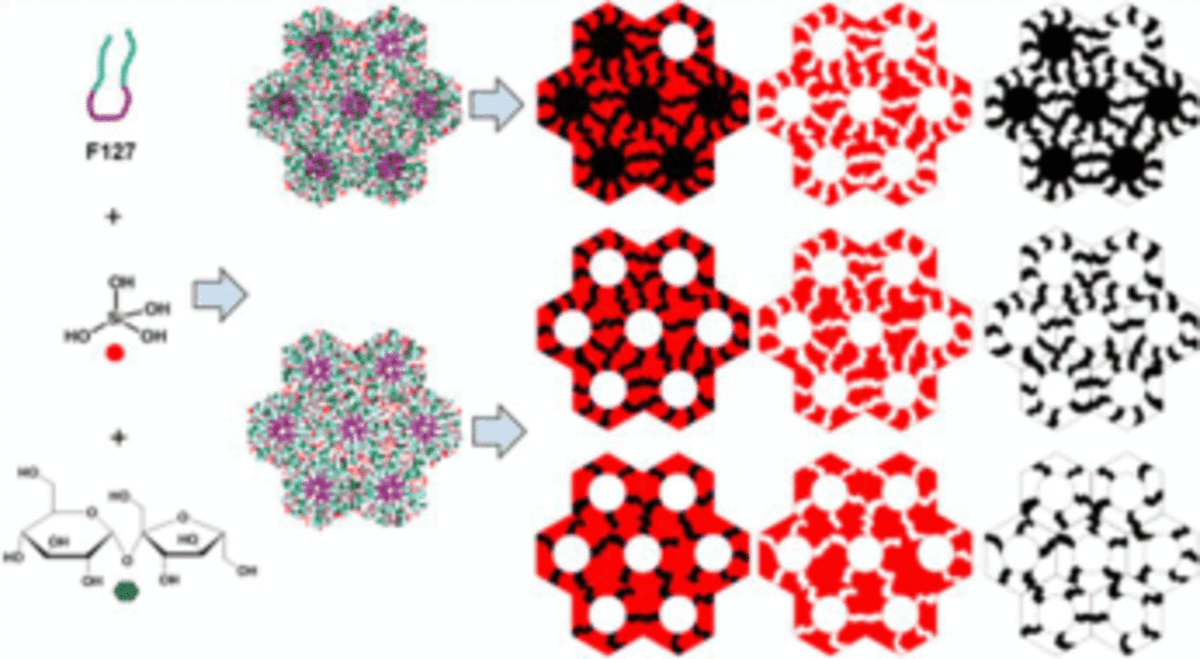
An Eco-friendly Soft Template Synthesis of Mesostructured Silica-Carbon Nanocomposites for Acid Catalysis 03-09-2015
The synthesis of ordered mesoporous silica-carbon composites was explored by employing TEOS and sucrose as the silica and carbon precursor respectively, and the triblock copolymer F127 as a structure-directing agent via an evaporation-induced self-assembly (EISA) process. It is demonstrated that the synthesis procedures allow for control of the textural properties and final composition of these silica-carbon nanocomposites via adjustment of the effective SiO2/C weight ratio. Characterization by SAXS, N2 physisorption, HRTEM, TGA, and 13C and 29Si solid-state MAS NMR show a 2D hexagonal mesostructure with uniform large pore size ranging from 5.2 to 7.6 nm, comprising of separate carbon phases in a continuous silica phase. Ordered mesoporous silica and non-ordered porous carbon can be obtained by combustion of the pyrolyzed nanocomposites in air or etching with HF solution, respectively. Sulfonic acid groups can be readily introduced to such kind of silica-carbon nanocomposites by a standard sulfonation procedure with concentrated sulfuric acid. Excellent acid-catalytic activities and selectivities for the dimerization of styrene to produce 1,3-diphenyl-1-butene and dimerization of α-methylstyrene to unsaturated dimers were demonstrated with the sulfonated materials.

Post-synthesis Snβ: An exploration of synthesis parameters and catalysis 29-08-2015
Snβ is probably one of the best water tolerating heterogeneous Lewis acids for liquid phase catalysis. Instead of applying the usual lengthy hydrothermal synthesis to prepare Snβ, this contribution uses a more hands-on two-step synthesis method, involving the grafting of Sn precursors in isopropanol under reflux conditions on a commercial β zeolite that was dealuminated in acid. Among several reference synthesis procedures, this Sn introduction method resulted in active Sn catalytic sites. Taking advantage of this practical method, several synthesis parameters were explored and their impact on the catalytic activity in four different Lewis acid catalyzed reactions is discussed. The adsorption isotherm of SnIV in isopropanol over a broad range of Sn salt concentrations at reflux temperature is presented and discussed in relation with FTIR spectroscopy, UV–vis absorption characteristics and the porosity of the materials. The study reveals a selective Sn uptake, up to 2 wt% Sn loading, into silanol nests of the dealuminated precursor, forming a diversity of mononuclear SnIV. Higher Sn loadings result in less active Sn (hydrous) extraframework oxide phases, which also cause partial blockage of the zeolite micropores. Depending on the reaction type under study, space time yield may increase with increasing Sn loading, but the activity per Sn is always lower. Therefore it is concluded that a preferred synthesis should form high contents of isolated Sn active sites, especially for sugar isomerization and intermolecular Meerwein–Ponndorf–Verley, while the other reaction types like Baeyer–Villiger is also sufficiently catalyzed by the small Sn oxide clusters, albeit less actively.
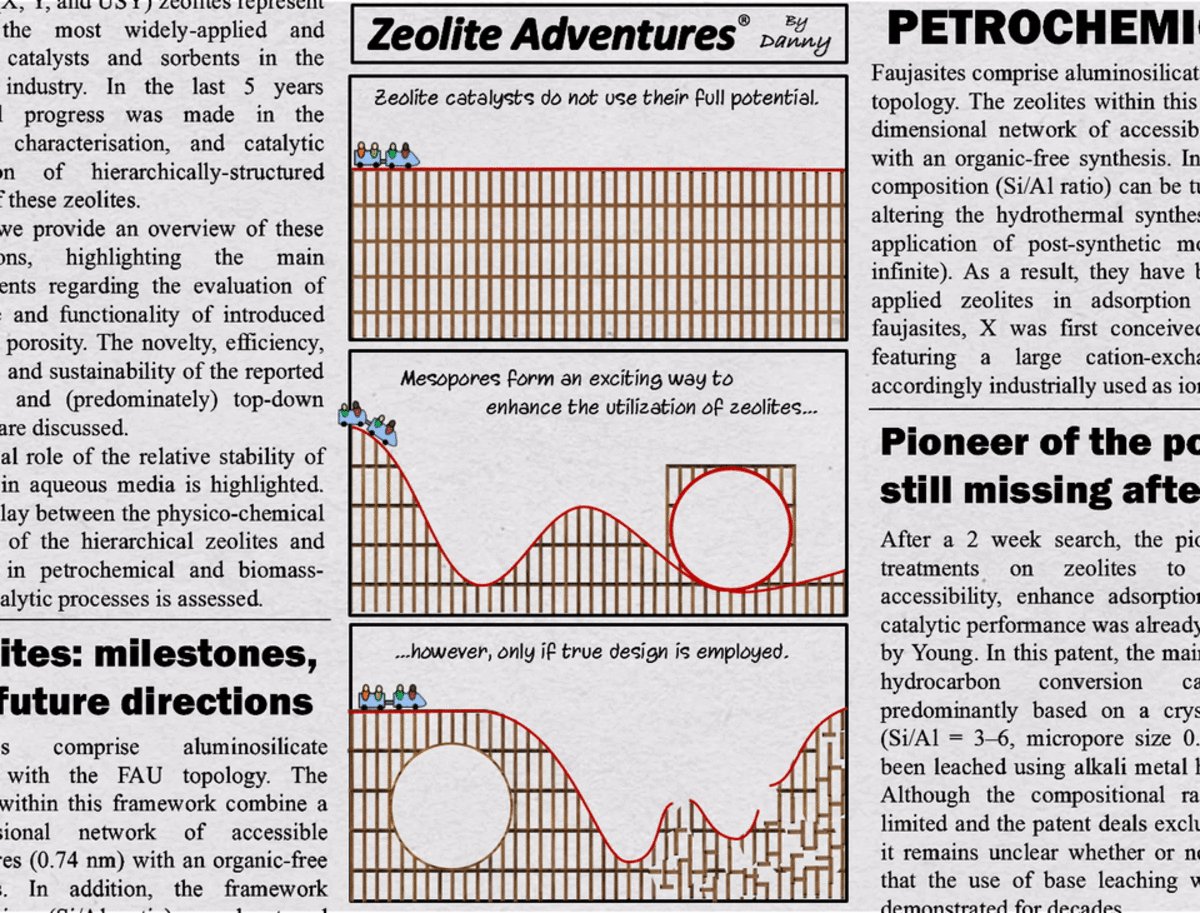
Synthesis, characterisation, and catalytic evaluation of hierarchical faujasite zeolites: milestones, challenges, and future directions 27-08-2015
Faujasite (X, Y, and USY) zeolites represent one of the most widely-applied and abundant catalysts and sorbents in the chemical industry. In the last 5 years substantial progress was made in the synthesis, characterisation, and catalytic exploitation of hierarchically-structured variants of these zeolites. Hererin, we provide an overview of these contributions, highlighting the main advancements regarding the evaluation of the nature and functionality of introduced secondary porosity. The novelty, efficiency, versatility, and sustainability of the reported bottom-up and (predominately) top-down strategies are discussed. The crucial role of the relative stability of faujasites in aqueous media is highlighted. The interplay between the physico-chemical properties of the hierarchical zeolites and their use in petrochemical and biomass-related catalytic processes is assessed
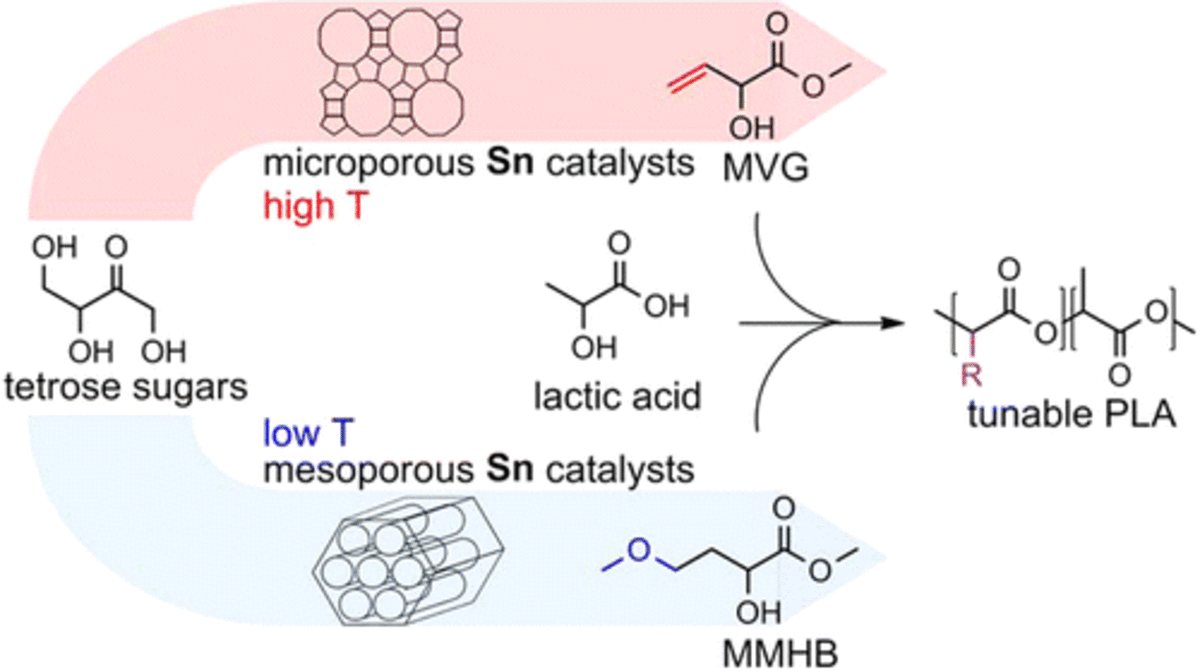
Confinement Effects in Lewis Acid-Catalyzed Sugar Conversion: Steering Toward Functional Polyester Building Blocks 24-08-2015
We report the use of solid Lewis acid catalysts for the conversion of tetrose sugars to four-carbon α-hydroxy acid esters (C4-AHA), which are useful as functional polyester building blocks. Sn-β was by far the most active and selective catalyst, yielding up to 80% methyl vinyl glycolate (MVG), methyl-4-methoxy-2-hydroxybutanoate (MMHB), and α-hydroxy-γ-butyrolactone (HBL) combined at 95% conversion. A very high turnover frequency (TOF) of 330 molC4-AHA molSn h–1 was attained using Sn-β, a more than 6-fold increase compared with homogeneous SnCl4·5H2O. It is shown that, using different Sn-based catalysts with various pore sizes, the product distribution is strongly dependent on the size of the catalyst pores. Catalysts containing mainly mesopores, such as Sn-MCM-41 or Sn-SBA-15, prefer the production of the more bulky MMHB, whereas microporous catalysts such as Sn-β or Sn-MFI favor the production of MVG. This effect can be further enhanced by increasing the reaction temperature. At 363 K, only 20% MVG is attained using Sn-β, but at 433 K, this increases to 50%. Using a kinetic analysis, it was found that, in microporous catalysts, steric hindrance near the Sn active site in the catalyst pores plays a dominant role in favoring the reaction pathway toward MVG. Moreover, the selectivity toward both products is kinetically controlled.
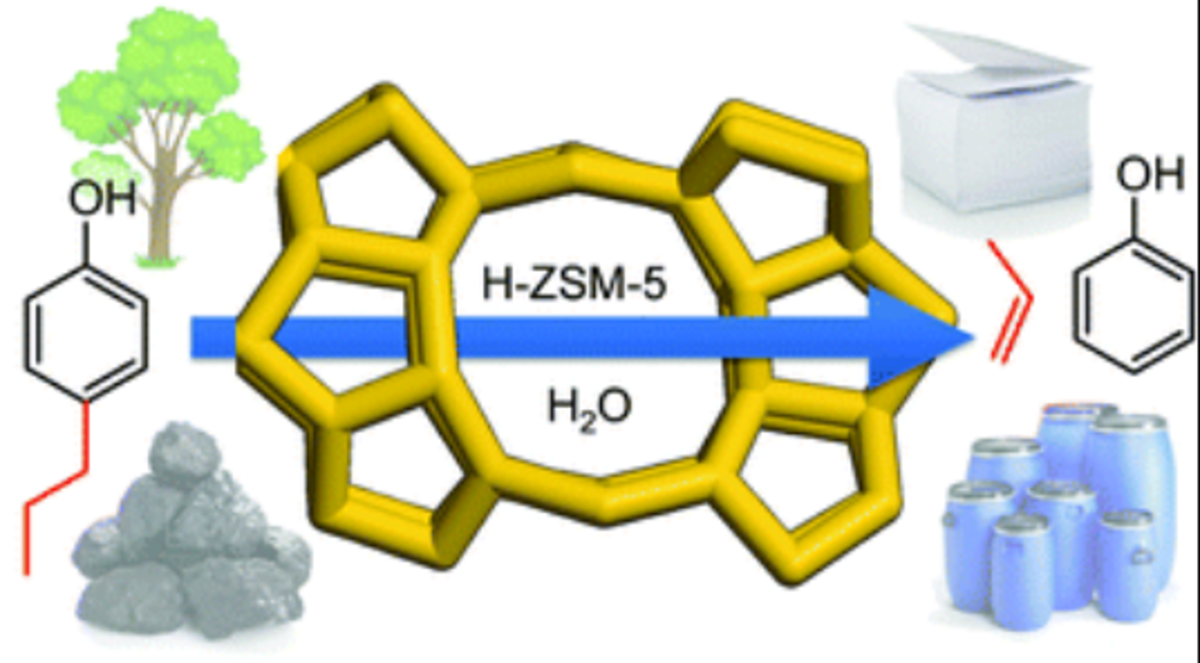
Alkylphenols to phenol and olefins by zeolite catalysis: a pathway to valorize raw and fossilized lignocellulose 17-08-2015
Selective conversion of alkylphenols to phenol and olefins is presented as a challenging key step in upgrading raw and fossilized lignocellulose. An exceptional and stable dealkylation performance is achieved by application of an acidic ZSM-5 zeolite, in which co-feeding of water is crucial to maintain catalytic activity. The role of water is attributed to competitive adsorption of water and phenol. The lignin-first pathway towards phenol yields a tenfold improvement of phenol compared to the state-of-the-art single-step lignocellullosic depolymerization techniques.
Polyimide mixed matrix membranes for CO2 separations using carbon–silica nanocomposite fillers 12-08-2015
Mixed matrix membranes (MMMs) have a potential to improve the separation performance of polymeric membranes while maintaining their advantages of easy processing and lower costs. In this work, series of MMMs were developed via solution casting by adding porous carbon–silica nanocomposite (CSM) fillers to a readily available Matrimid® membrane. CSMs were prepared by a hard template synthesis technique to get a tuneable porosity and surface chemistry which is controlled by the optimization of the filler porosity using carbon deposition, the pyrolysis conditions, and the maximization of polarity via oxygen functional groups. SEM images of the synthesized MMMs confirmed the good adhesion and dispersion of the fillers within the polymer matrix. The separation results demonstrate that the overall separation efficiency is increased by the addition of a carbon phase, providing an increased affinity for the CO2 gas molecules next to the creation of extra porosity and free volume. It was showed that significantly improved CO2 mixed gas selectivity and permeability for CO2:N2 and CO2:CH4 gas mixtures at 9 bar and 308 K was achieved. For gas mixtures with a 50:50 (CO2:N2) feed composition, a 2-fold and 6-fold increase of the mixed gas selectivity (up to 42.5) and permeability (up to 27 Barrer) compared to unfilled PI was achieved, respectively. The performance of the membranes was compared to the existing literature data.
Alkali Activation of AOD Stainless Steel Slag Under Steam Curing Conditions 03-08-2015
Crystalline argon oxygen decarburization slag, in powdery form, was investigated for its hydration potential by alkali activation and curing at 80°C. Na-silicate and K-silicate of the same modulus were used as activators. Isothermal calorimetry at 80°C indicated exothermic reactions in the slag pastes. When the slag mortars were cured under steam at 80°C appreciable gain in compressive strength was measured. This was attributed to C–S–H which was detected in TG, FTIR, and 29Si NMR analyses. Upon hydration at 90 d, the amount of crystalline phases decreased, whereas the XRD amorphous content in the slag increased. Electron microscopy showed the formation of different morphologies of reaction products depending on the alkaline activator employed. Presence of reaction rims around the crystalline phases with a major presence of Ca, Si, and O in the reacted matrix was observed in elemental maps.
Shape-selective zeolite catalysis for bioplastics production 03-07-2015
Biodegradable and renewable polymers, such as polylactic acid, are benign alternatives for petrochemical-based plastics. Current production of polylactic acid via its key building block lactide, the cyclic dimer of lactic acid, is inefficient in terms of energy, time, and feedstock use. We present a direct zeolite-based catalytic process, which converts lactic acid into lactide. The shape-selective properties of zeolites are essential to attain record lactide yields, outperforming those of the current multistep process by avoiding both racemization and side-product formation. The highly productive process is strengthened by facile recovery and practical reactivation of the catalyst, which remains structurally fit during at least six consecutive reactions, and by the ease of solvent and side-product recycling.
Influence of MgO precursors on mechanically activated forsterite synthesis 28-06-2015
Brucite-fumed silica and hydromagnesite-fumed silica mixtures were used to investigate the influence of MgO precursors on mechanically activated forsterite synthesis. The changes in morphology, chemical bond and phase composition of the ground and calcined mixtures were examined with scanning electron microscopy (SEM), Si 2p X-ray photoelectron spectroscopy (XPS) and 29Si magic angle spinning nuclear magnetic resonance (MAS-NMR), and X-ray diffraction (XRD), respectively. The XPS and MAS-NMR analyses show that high-energy milling generates more Mg–O–Si chemical bonds in the brucite-fumed silica mixture than in the hydromagnesite-fumed silica sample. This is because brucite has a higher concentration of Mg–OH bonds than hydromagnesite. However, single-phase forsterite forms at a higher temperature of 1000 1C in the milled brucite-fumed silica mixture than that of 800 1C in the ground hydromagnesite-fumed silica sample after the same grinding. The different forsterite completion temperature is probably due to the longer Mg2þ and Si4þ diffusion distance of over 500 nm in the former milled mixture than that of less than 300 nm in the latter ground sample.

Tuning the lignin oil OH-content with Ru and Pd catalysts during lignin hydrogenolysis on birch wood 11-06-2015
Liquid reductive processing of birch wood in the presence of commercial Ru/C or Pd/C catalysts yields about 50% of a select set of phenolic monomers and a variety of phenolic di- and oligomers, next to a solid carbohydrate pulp. Changing the catalyst from Ru/C to Pd/C drastically increases the OH-content of the lignin-derived products, in particular for the phenolic monomers.
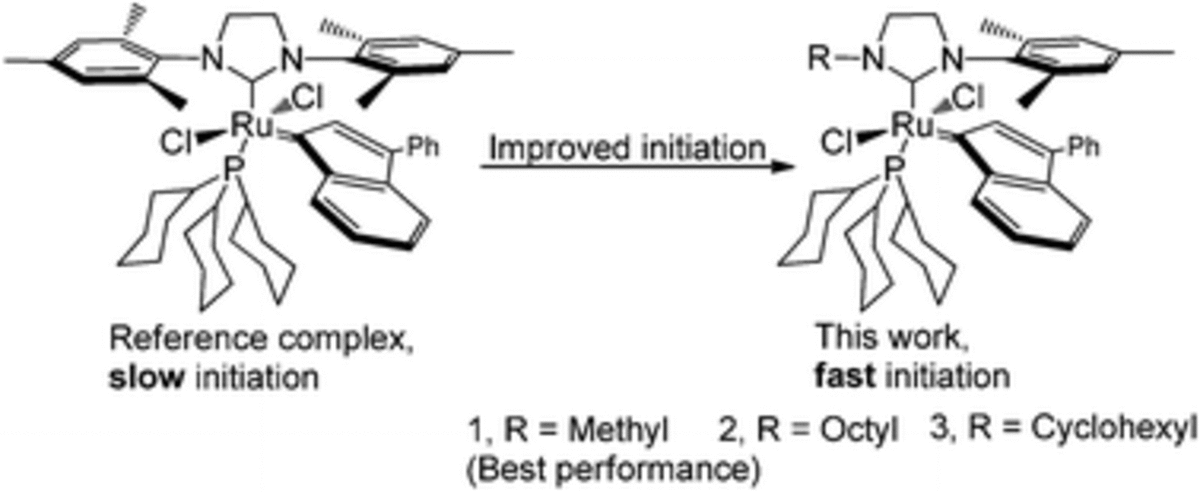
Ruthenium indenylidene complexes bearing N-alkyl/N-mesityl-substituted N-heterocyclic carbene ligands 19-05-2015
We report on the synthesis and characterization of second generation ruthenium indenylidene catalysts bearing unsymmetrical N-heterocyclic carbene (NHC) ligands denoted as RuCl2(3-phenyl-1-indenylidene)(1-mesityl-3-R-4,5-dihydroimidazol-2-ylidene)(PCy3), in which R is methyl 8a, octyl 8b or cyclohexyl 8c. The characterization of 8a–c was performed by NMR spectroscopy, elemental analysis, IR, HRMS and single-crystal X-ray diffraction analysis. In addition, the catalytic activity of the obtained initiators was evaluated in various representative metathesis reactions. The results reveal that the complexes 8a–c, bearing an N-alkyl side on the NHC, show a faster catalytic initiation than the reference complex 2. Complex 8a, which performs the best among the investigated indenylidene complexes, exhibits slower initiation but better overall efficiency than its benzylidene analogue 1c, especially in a low catalyst loading.
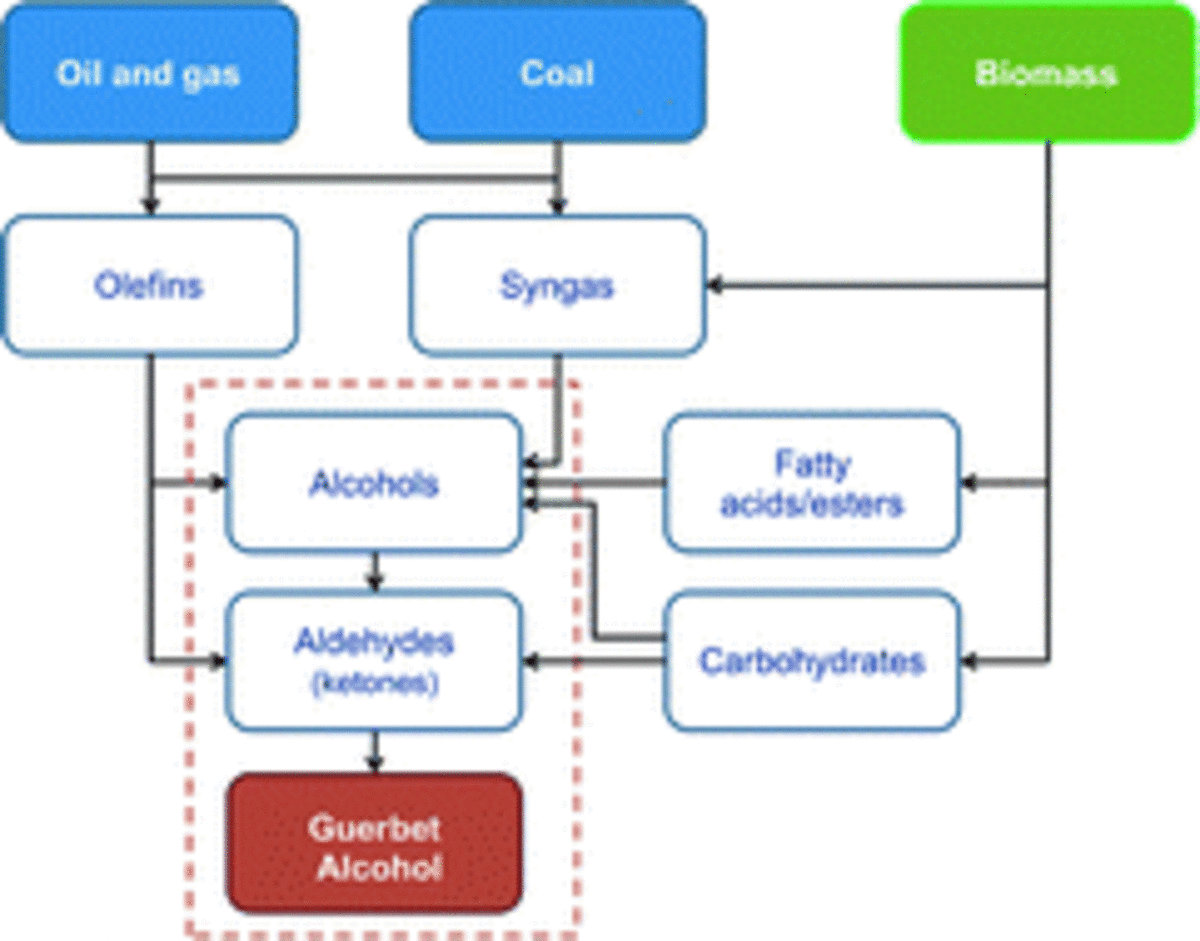
Review of catalytic systems and thermodynamics for the Guerbet condensation reaction and challenges for biomass valorization 18-05-2015
The Guerbet condensation reaction is an alcohol coupling reaction that has been known for more than a century. Because of the increasing availability of bio-based alcohol feedstock, this reaction is of growing importance and interest in terms of value chains of renewable chemical and biofuel production. Due to the specific branching pattern of the alcohol products, the Guerbet reaction has many interesting applications. In comparison to their linear isomers, branched-chain Guerbet alcohols have extremely low melting points and excellent fluidity. This review provides thermodynamic insights and unravels the various mechanistic steps involved. A comprehensive overview of the homogeneous, heterogeneous and combined homogeneous and heterogeneous catalytic systems described in published reports and patents is also given. Technological considerations, challenges and perspectives for the Guerbet chemistry are discussed.
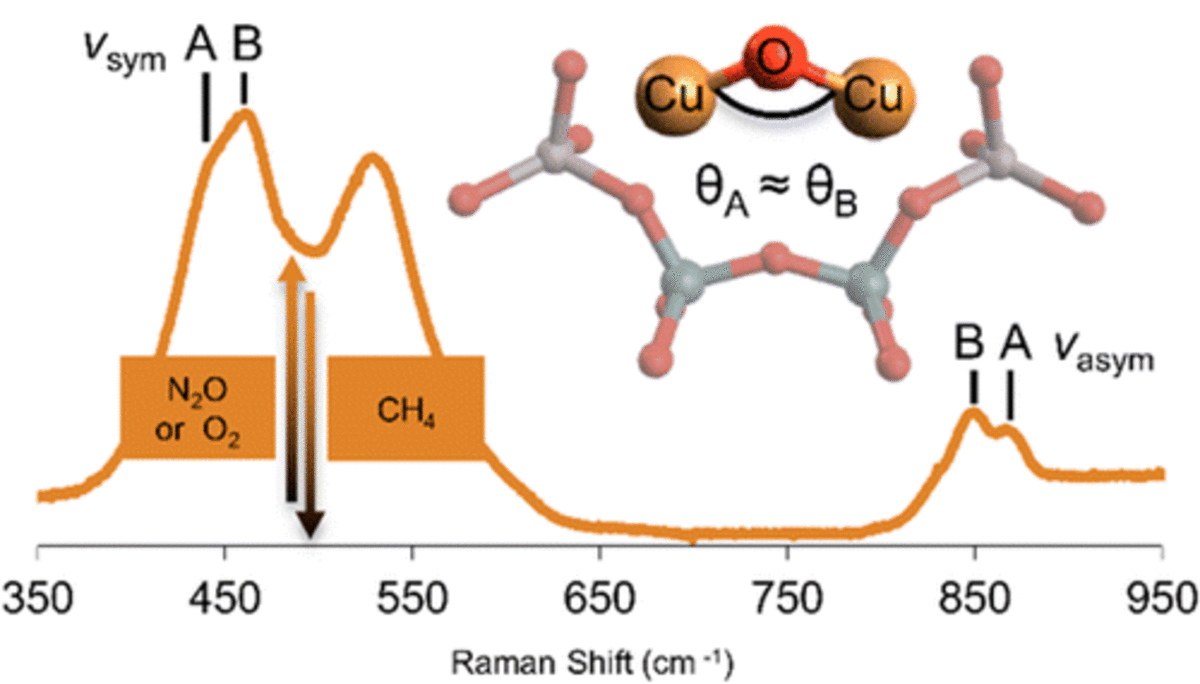
Spectroscopic Definition of the Copper Active Sites in Mordenite: Selective Methane Oxidation 26-04-2015
Two distinct [Cu–O–Cu]2+ sites with methane monooxygenase activity are identified in the zeolite Cu-MOR, emphasizing that this Cu–O–Cu active site geometry, having a ∠Cu–O–Cu ∼140°, is particularly formed and stabilized in zeolite topologies. Whereas in ZSM-5 a similar [Cu–O–Cu]2+active site is located in the intersection of the two 10 membered rings, Cu-MOR provides two distinct local structures, situated in the 8 membered ring windows of the side pockets. Despite their structural similarity, as ascertained by electronic absorption and resonance Raman spectroscopy, the two Cu–O–Cu active sites in Cu-MOR clearly show different kinetic behaviors in selective methane oxidation. This difference in reactivity is too large to be ascribed to subtle differences in the ground states of the Cu–O–Cu sites, indicating the zeolite lattice tunes their reactivity through second-sphere effects. The MOR lattice is therefore functionally analogous to the active site pocket of a metalloenzyme, demonstrating that both the active site and its framework environment contribute to and direct reactivity in transition metal ion-zeolites.
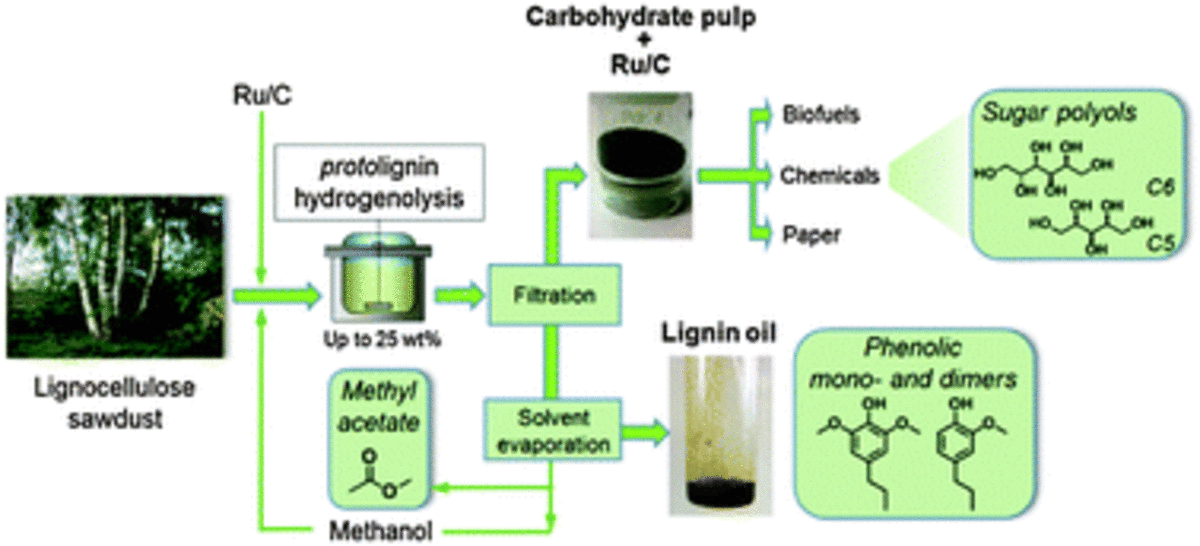
Reductive lignocellulose fractionation into soluble lignin-derived phenolic monomers and dimers and processable carbohydrate pulps 20-04-2015
A catalytic lignocellulose biorefinery process is presented, valorizing both polysaccharide and lignin components into a handful of chemicals. To that end, birch sawdust is efficiently delignified through simultaneous solvolysis and catalytic hydrogenolysis in the presence of a Ru on carbon catalyst (Ru/C) in methanol under a H2 atmosphere at elevated temperature, resulting in a carbohydrate pulp and a lignin oil. The lignin oil yields above 50% of phenolic monomers (mainly 4-n-propylguaiacol and 4-n-propylsyringol) and about 20% of a set of phenolic dimers, relative to the original lignin content, next to phenolic oligomers. The structural features of the lignin monomers, dimers and oligomers were identified by a combination of GC/MS, GPC and 2D HSQC NMR techniques, showing interesting functionalities for forthcoming polymer applications. The effect of several key parameters like temperature, reaction time, wood particle size, reactor loading, catalyst reusability and the influence of solvent and gas were examined in view of the phenolic product yield, the degree of delignification and the sugar retention as a first assessment of the techno-economic feasibility of this biorefinery process. The separated carbohydrate pulp contains up to 92% of the initial polysaccharides, with a nearly quantitative retention of cellulose. Pulp valorization was demonstrated by its chemocatalytic conversion to sugar polyols, showing the multiple use of Ru/C, initially applied in the hydrogenolysis process. Various lignocellulosic substrates, including genetically modified lines of Arabidopsis thaliana, were finally processed in the hydrogenolytic biorefinery, indicating lignocellulose rich in syringyl-type lignin, as found in hardwoods, as the ideal feedstock for the production of chemicals.
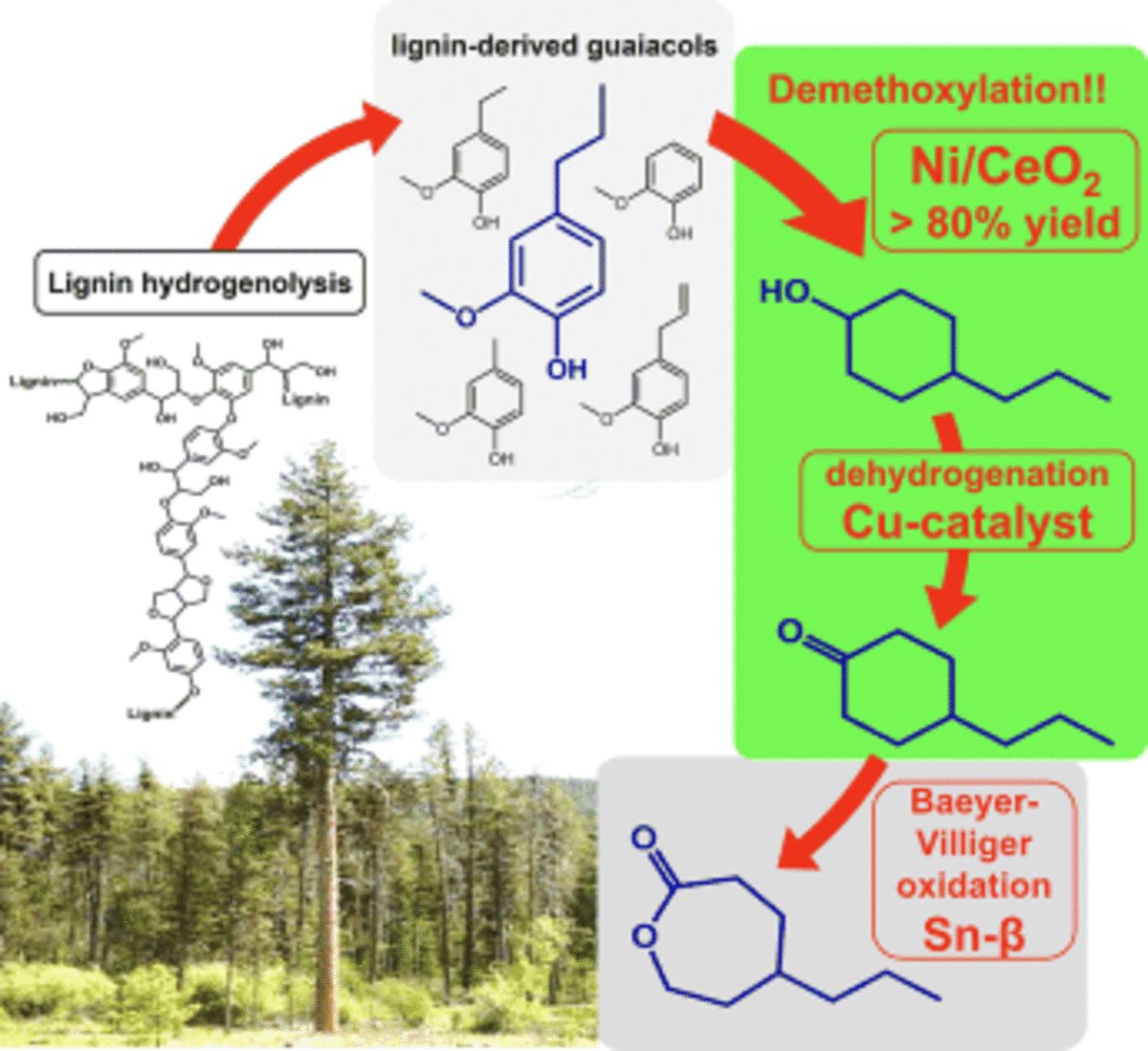
Selective Nickel-Catalyzed Conversion of Model and Lignin-Derived Phenolic Compounds to Cyclohexanone-Based Polymer Building Blocks 16-04-2015
Valorization of lignin is essential for the economics of future lignocellulosic biorefineries. Lignin is converted into novel polymer building blocks through four steps: catalytic hydroprocessing of softwood to form 4-alkylguaiacols, their conversion into 4-alkylcyclohexanols, followed by dehydrogenation to form cyclohexanones, and Baeyer–Villiger oxidation to give caprolactones. The formation of alkylated cyclohexanols is one of the most difficult steps in the series. A liquid-phase process in the presence of nickel on CeO2 or ZrO2 catalysts is demonstrated herein to give the highest cyclohexanol yields. The catalytic reaction with 4-alkylguaiacols follows two parallel pathways with comparable rates: 1) ring hydrogenation with the formation of the corresponding alkylated 2-methoxycyclohexanol, and 2) demethoxylation to form 4-alkylphenol. Although subsequent phenol to cyclohexanol conversion is fast, the rate is limited for the removal of the methoxy group from 2-methoxycyclohexanol. Overall, this last reaction is the rate-limiting step and requires a sufficient temperature (>250 °C) to overcome the energy barrier. Substrate reactivity (with respect to the type of alkyl chain) and details of the catalyst properties (nickel loading and nickel particle size) on the reaction rates are reported in detail for the Ni/CeO2catalyst. The best Ni/CeO2 catalyst reaches 4-alkylcyclohexanol yields over 80 %, is even able to convert real softwood-derived guaiacol mixtures and can be reused in subsequent experiments. A proof of principle of the projected cascade conversion of lignocellulose feedstock entirely into caprolactone is demonstrated by using Cu/ZrO2 for the dehydrogenation step to produce the resultant cyclohexanones (≈80 %) and tin-containing beta zeolite to form 4-alkyl-ε-caprolactones in high yields, according to a Baeyer–Villiger-type oxidation with H2O2.
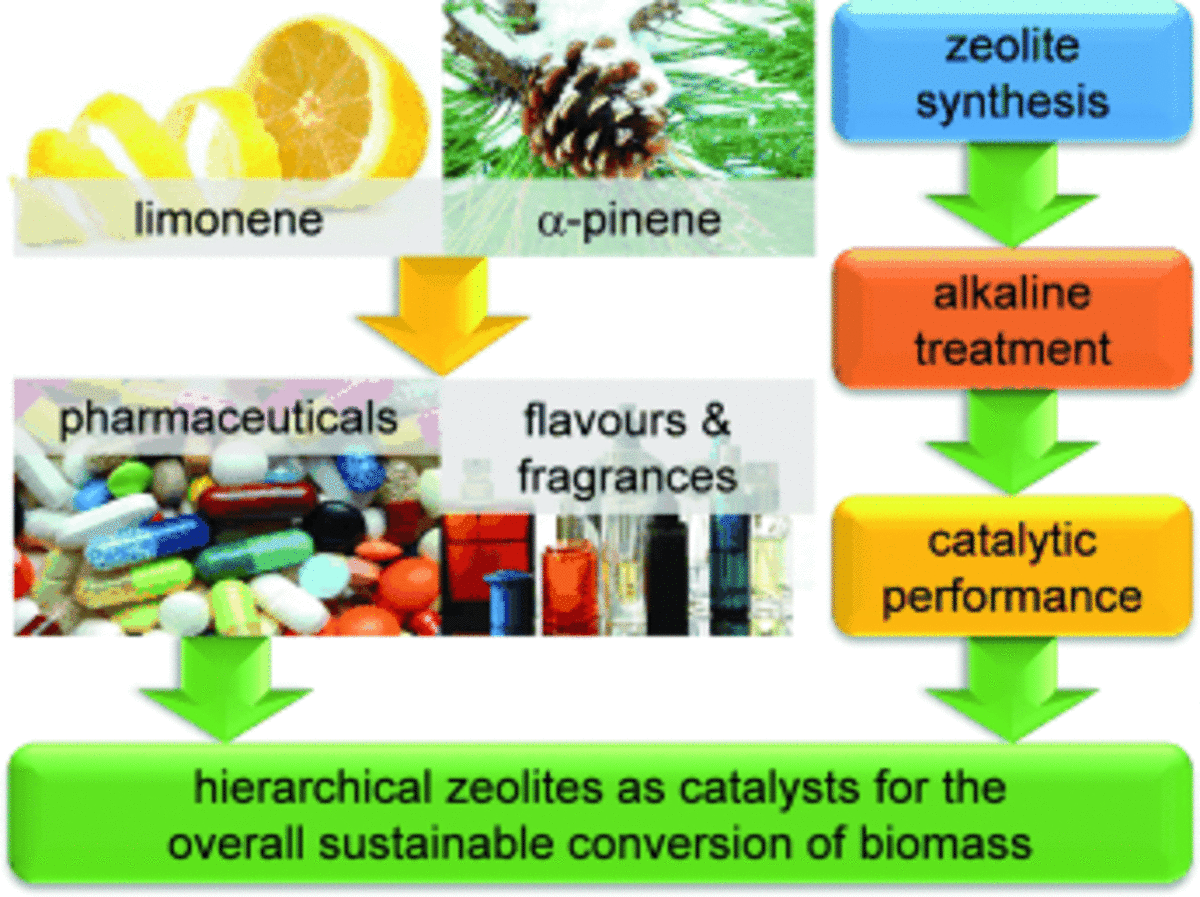
Potential of Sustainable Hierarchical Zeolites in the Valorization of α-Pinene 03-03-2015
In the valorization of α-pinene, which is an important biomass intermediate derived from turpentine oil, hierarchical (mesoporous) zeolites represent a superior class of catalysts. Hierarchical USY, ZSM-5, and beta zeolites have been prepared, characterized, and catalytically evaluated, with the aim of combining the highest catalytic performance with the most sustainable synthetic protocol. These zeolites are prepared by alkaline treatment in aqueous solutions of NH4OH, NaOH, diethylamine, and NaOH complemented with tetrapropylammonium bromide. The hierarchical USY zeolite is the most attractive catalyst of the tested series, and is able to combine an overall organic-free synthesis with an up to sixfold activity enhancement and comparable selectivity over the conventional USY zeolite. This superior performance relates to a threefold greater activity than that of the commercial standard, namely, H2SO4/TiO2. Correlation of the obtained benefits to the amount of solid lost during the postsynthetic modifications highlights that the highest activity gains are obtained with minor leaching. Furthermore, a highly zeolitic character, as determined by bulk XRD, is beneficial, but not crucial, in the conversion of α-pinene. The alkaline treatments not only result in a higher overall activity, but also a more functional external surface area, attaining up to four times the pinene conversions per square nanometer. The efficiency of the hierarchical USY zeolite is concomitantly demonstrated in the conversion of limonene and turpentine oil, which emphasizes its industrial potential.
2014
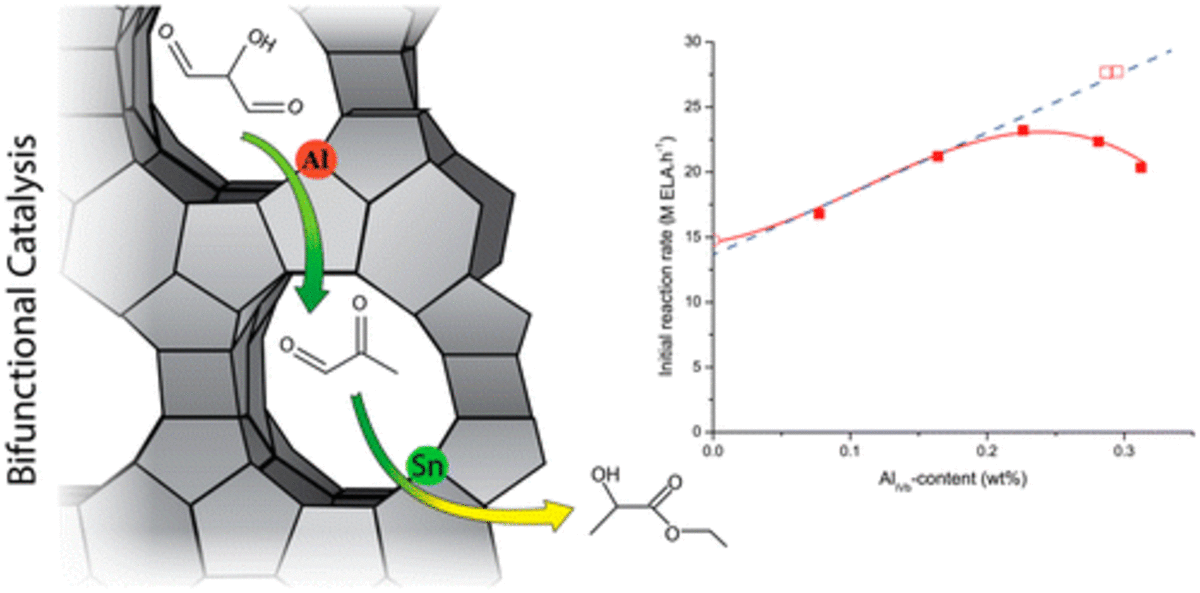
Cooperative Catalysis for Multistep Biomass Conversion with Sn/Al Beta Zeolite 26-12-2014
Lewis acid Snβ-type zeolites with varying amounts of Brønsted acid Al in the framework were synthesized using a simple two-step procedure comprising partial dealumination of β zeolite under action of acid, followed by grafting with SnCl4·5H2O in dry isopropanol. Characterization of the thus-prepared Al-containing Snβ (Sn/pDeAlβ) zeolites with ICP, (pyridine probed) FTIR, and 27Al MAS NMR demonstrates the presence of Brønsted acid framework AlIII. Tetrahedral Lewis acidic SnIV is present, as ascertained by a combination of techniques such as EPMA, 119Sn Möβbauer, XPS, (pyridine probed) FTIR, and UV–vis. A closed SnIV configuration was implied by comparing of 119Sn solid-state MAS NMR and deuterated acetonitrile probed FTIR spectra with literature. The catalytic activity of the Al-containing Snβ was tested for the conversion of 1,3-dihydroxyacetone (DHA) into ethyl lactate (ELA), proceeding via pyruvic aldehyde (PAL). Despite the difference in synthesis between the classic hydrothermal Snβ reference and Sn/pDeAlβ, the activity of Sn for the Lewis acid-catalyzed hydride shift of PAL to ELA is similar. Yet, the overall reaction rate of DHA into ELA is faster with Sn/pDeAlβ because Brønsted acidity of the remaining framework AlIIIfacilitates the rate-determining dehydration of DHA into PAL. Materials containing moderate amounts of Al (0.3 wt % Al) show the highest ELA productivities, leading to a record value of 2113 g ELA·kg catalyst–1·h–1 at 363 K. The cooperative effect of Lewis SnIV and Brønsted AlIII acid sites is verified by comparing catalytic data with physical mixtures of partially dealuminated β zeolite and Al-free Snβ.

Conceptual Frame Rationalizing the Self-Stabilization of H-USY Zeolites in Hot Liquid Water 09-12-2014
The wide range of liquid-phase reactions required for the catalytic conversion of biomass compounds into new bioplatform molecules defines a new set of challenges for the development of active, selective, and stable catalysts. The potential of bifunctional Ru/H-USY catalysts for conversions in hot liquid water (HLW) is assessed in terms of physicochemical stability and long-term catalytic performance of acid sites and noble metal functionality, as probed by hydrolytic hydrogenation of cellulose. It is shown that zeolite desilication is the main zeolite degradation mechanism in HLW. USY zeolite stability depends on two main parameters, viz., framework and extra-framework aluminum content. The former protects the zeolite lattice by counteracting hydrolysis of framework bonds, and the latter, when located at the external crystal surface, prevents solubilization of the zeolite framework which is the result of its low water-solubility. Hence, the hot liquid water stability of commercial H-USY zeolites, in contrast to their steam stability, increased with decreasing Si/Al ratio. As a result, mildly steamed USY zeolites containing a high amount of both Al species exhibit the highest resistance to HLW. During an initial period of transformations, Al-rich zeolites form additional protective extra-framework Al species at the outer surface, self-stabilizing the framework. A critical bulk Si/Al ratio of 3 was determined whereby USY zeolites with a lower Si/Al ratio will self-stabilize over time. Besides, due to the initial transformation period, the accessibility of the catalytic active sites is extensively enhanced resulting in a material that is more stable and drastically more accessible to large substrates than the original zeolite. When these findings are applied in the hydrolytic hydrogenation of cellulose, unprecedented nearly quantitative hexitol yields were obtained with a stable catalytic system.
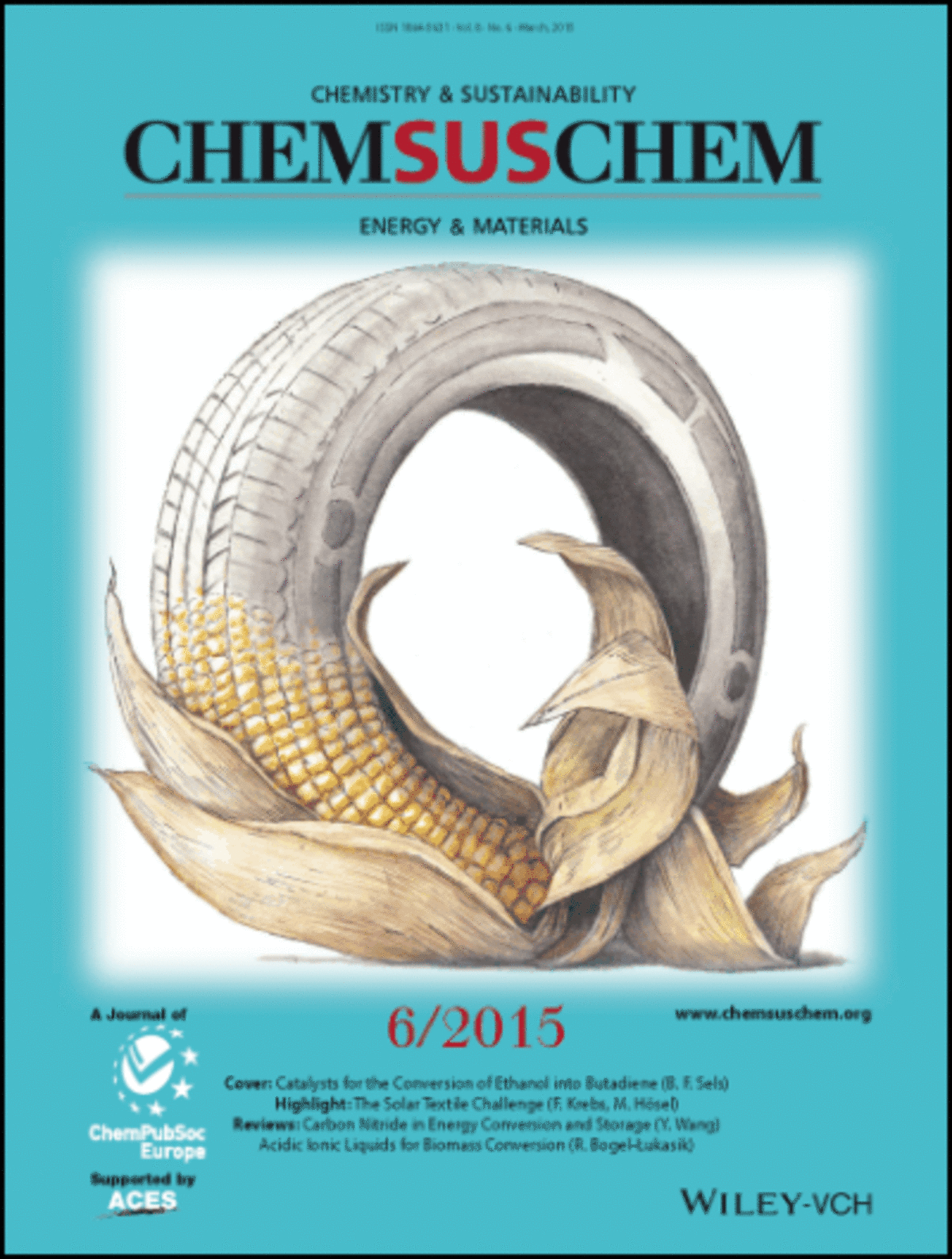
Ternary Ag/MgO-SiO2 Catalysts for the Conversion of Ethanol into Butadiene 19-11-2014
Ternary Ag/Magnesia-silica catalysts were tested in the direct synthesis of 1,3-butadiene from ethanol. The influence of the silver content and the type of silica source on catalytic performance has been studied. Prepared catalysts were characterized by 29Si NMR, N2 sorption, small-angle X-ray scattering measurements, XRD, environmental scanning electron microscopy with energy dispersive X-ray analysis (ESEM/EDX), FTIR spectroscopy of adsorbed pyridine and CO2, temperature-programmed desorption of CO2 and UV/Vis diffuse reflectance spectroscopy. Based on these characterization results, the catalytic performance of the catalysts in the 1,3-butadiene formation process was interpreted and a tentative model explaining the role of the different catalytically active sites was elaborated. The balance of the active sites is crucial to obtain an active and selective catalyst to form 1,3-butadiene from ethanol. The optimal silver loading is 1–2 wt % on a MgO-silica support with a molar Mg/Si ratio of 2. The silver species and basic sites (Mg-O pairs and basic OH groups) are of prime importance in the 1,3-butadiene production, catalyzing mainly the ethanol dehydrogenation and the aldol condensation, respectively.